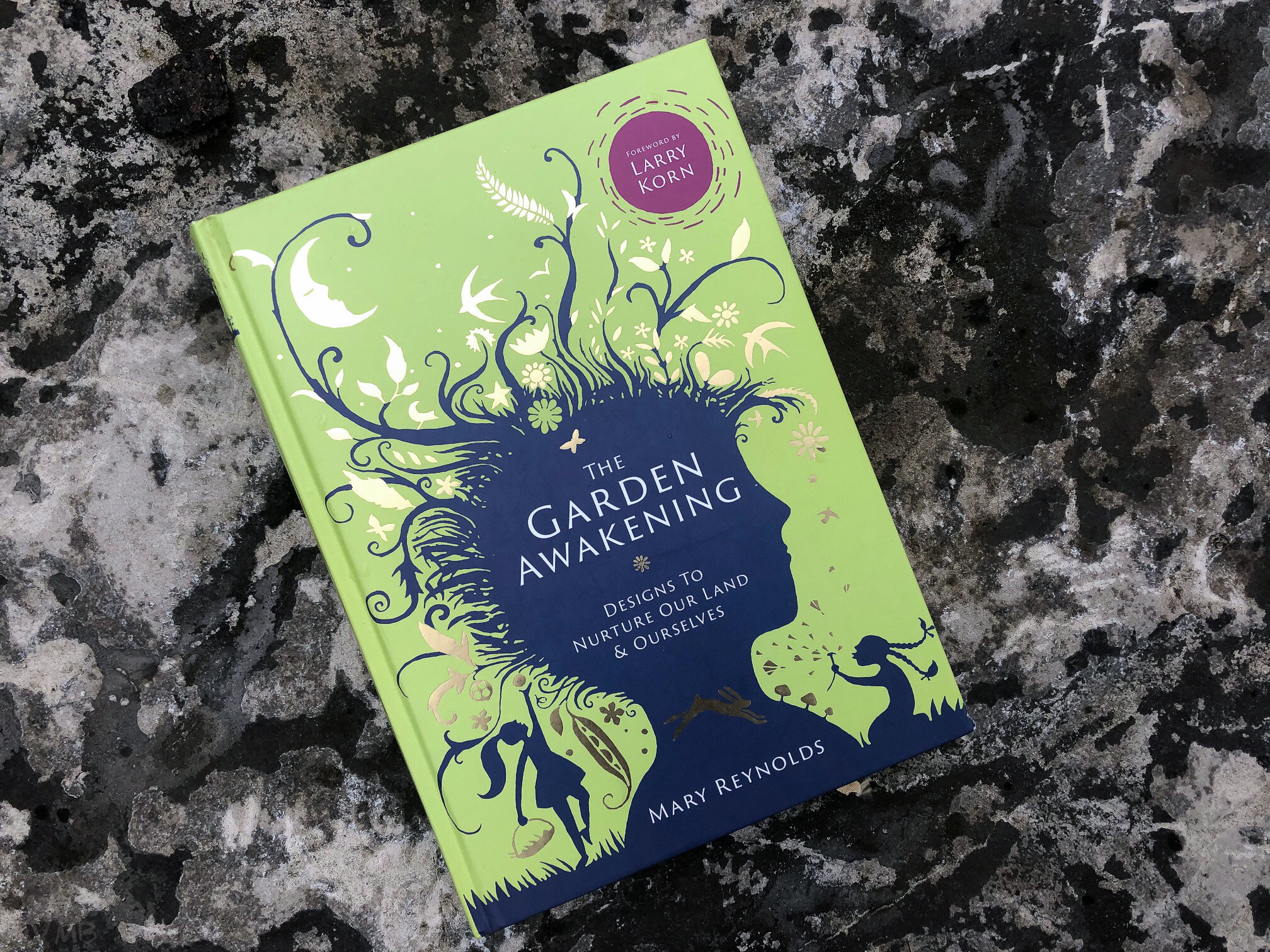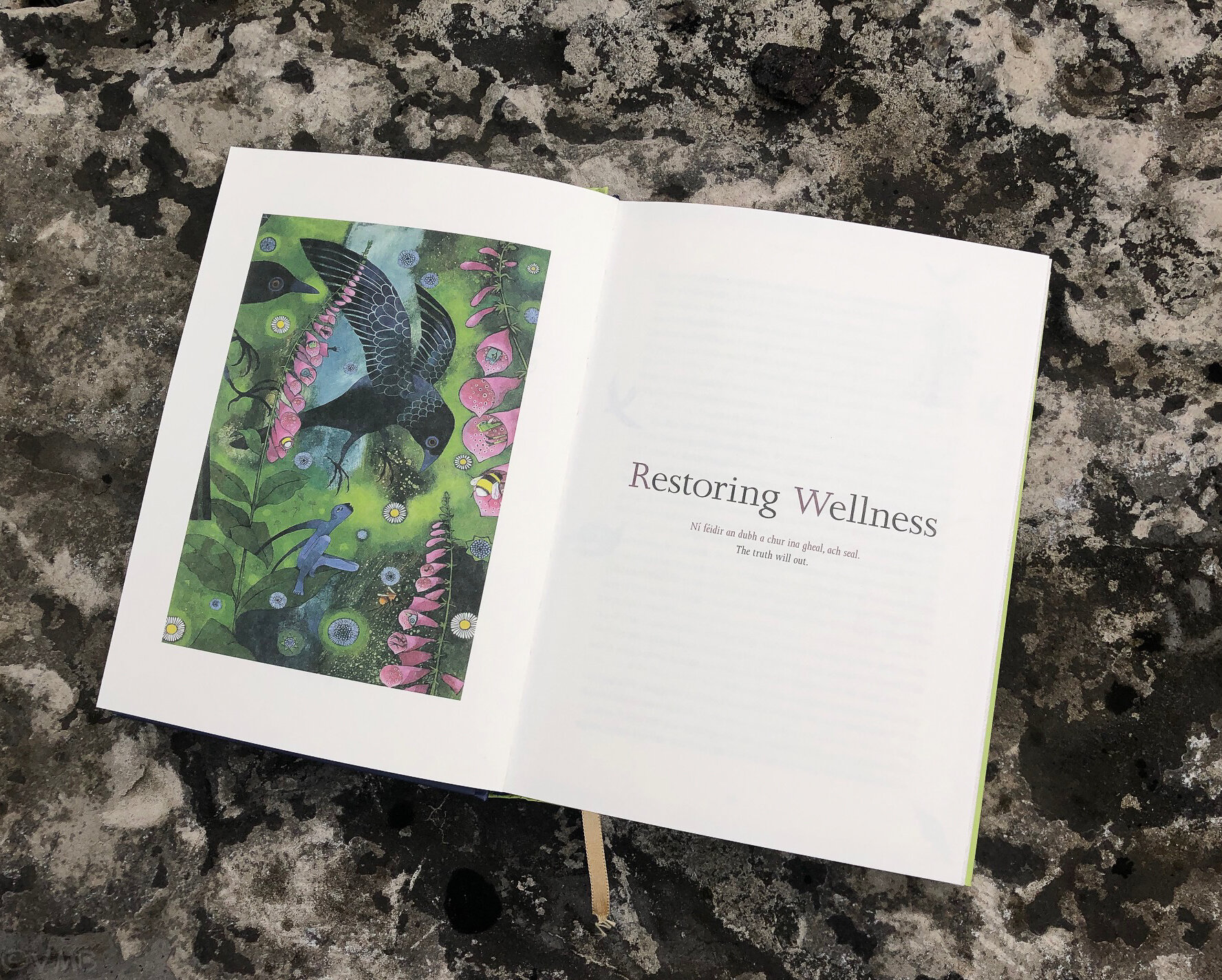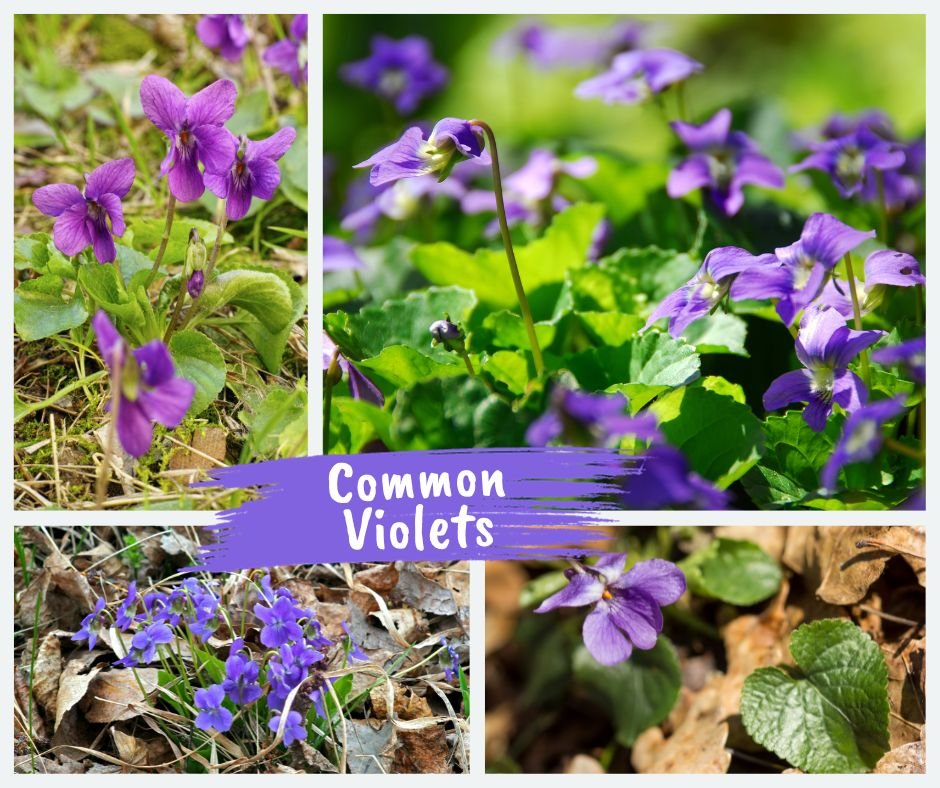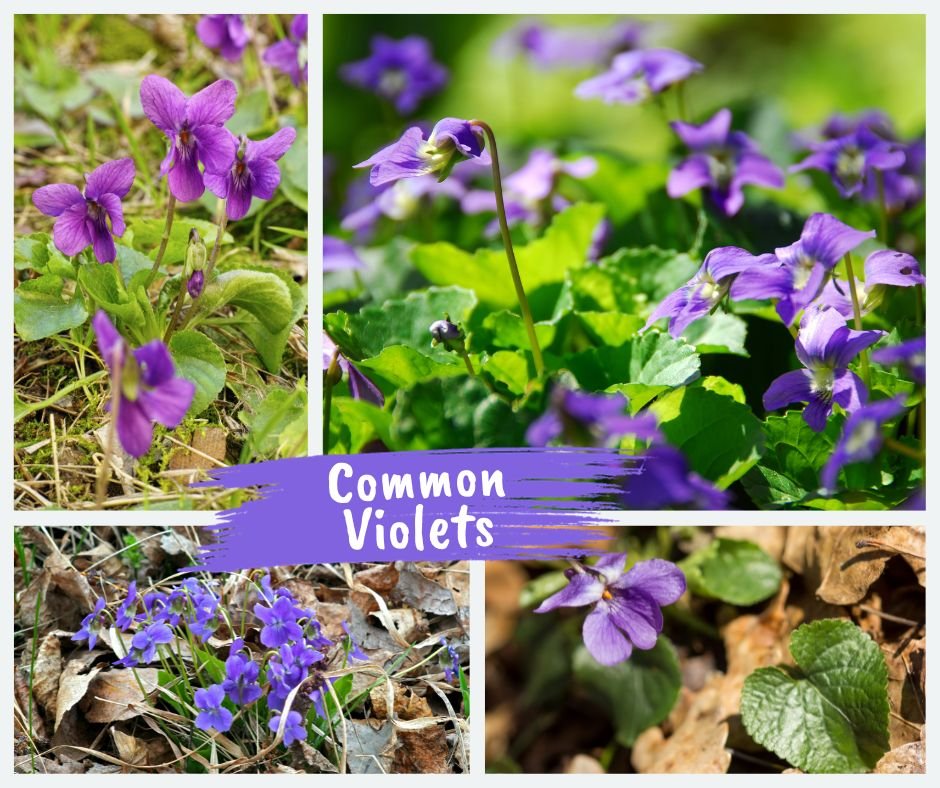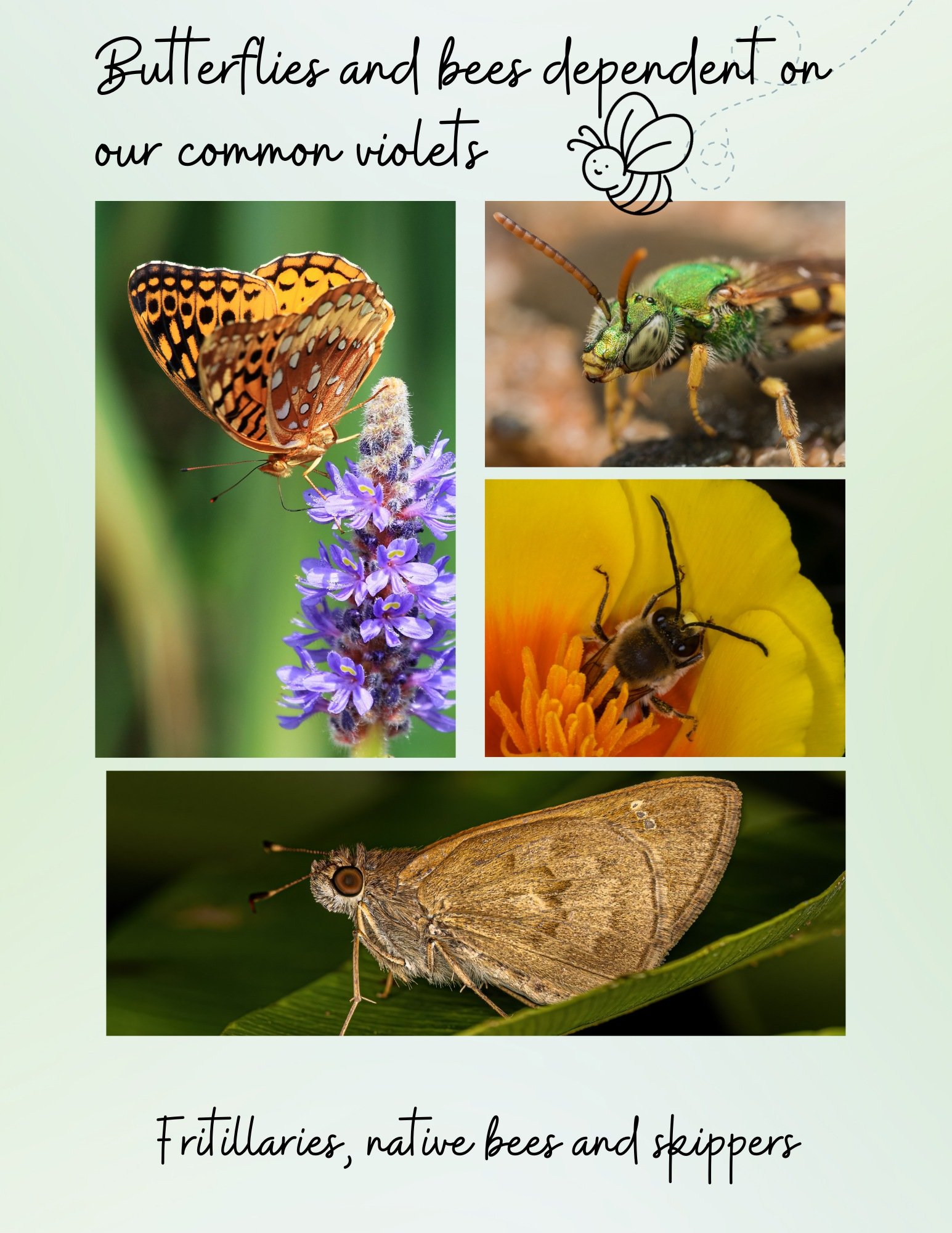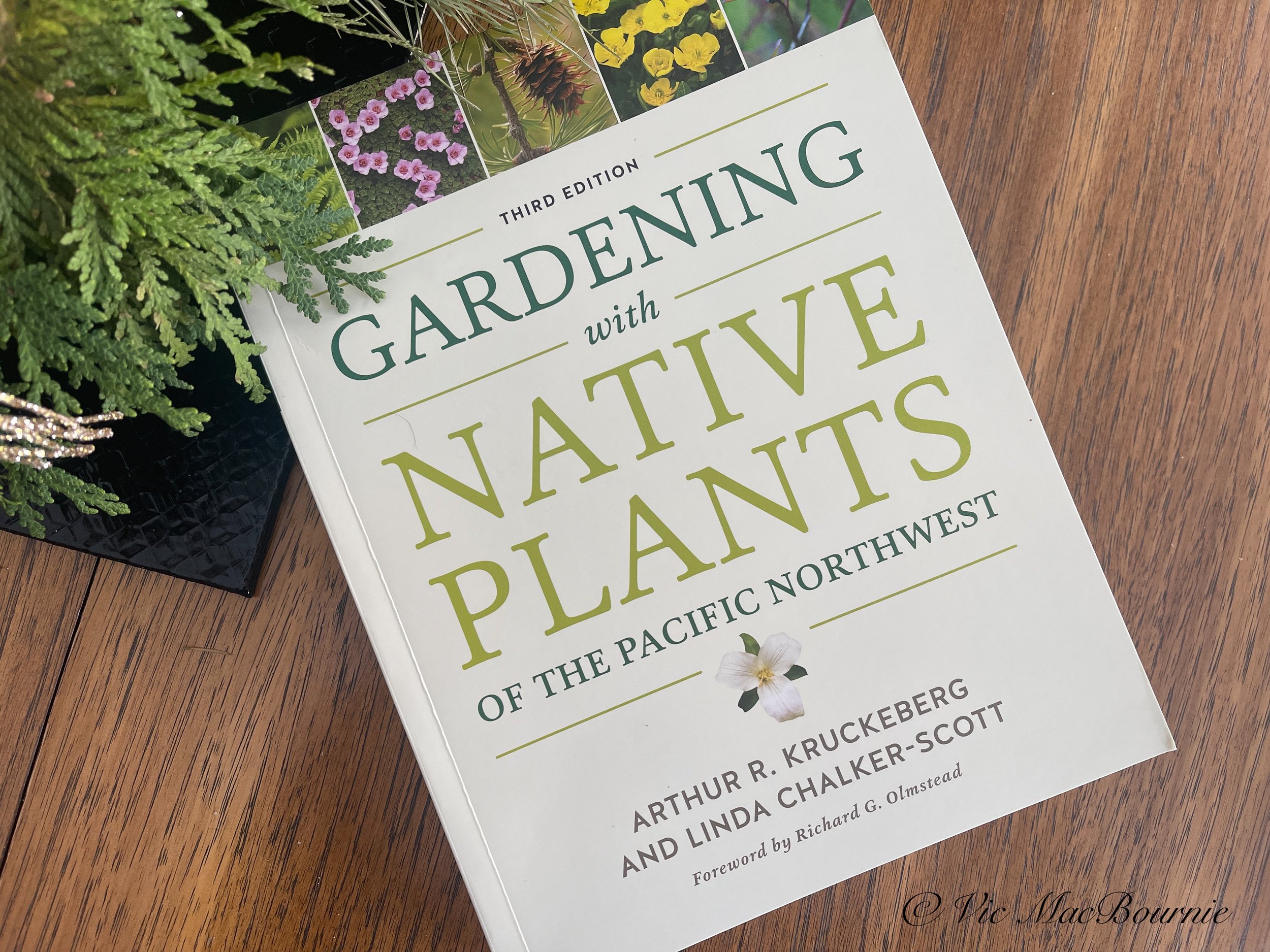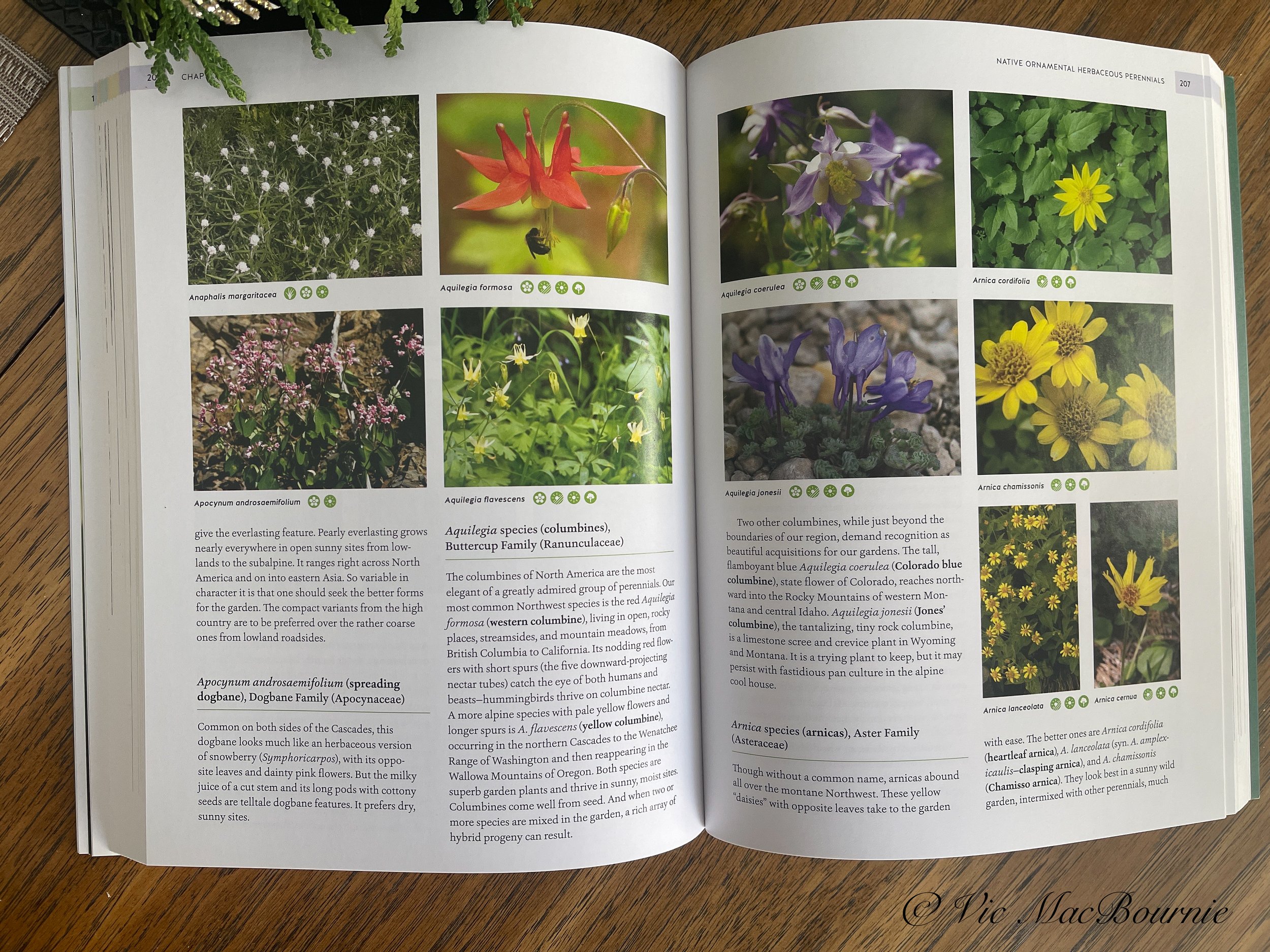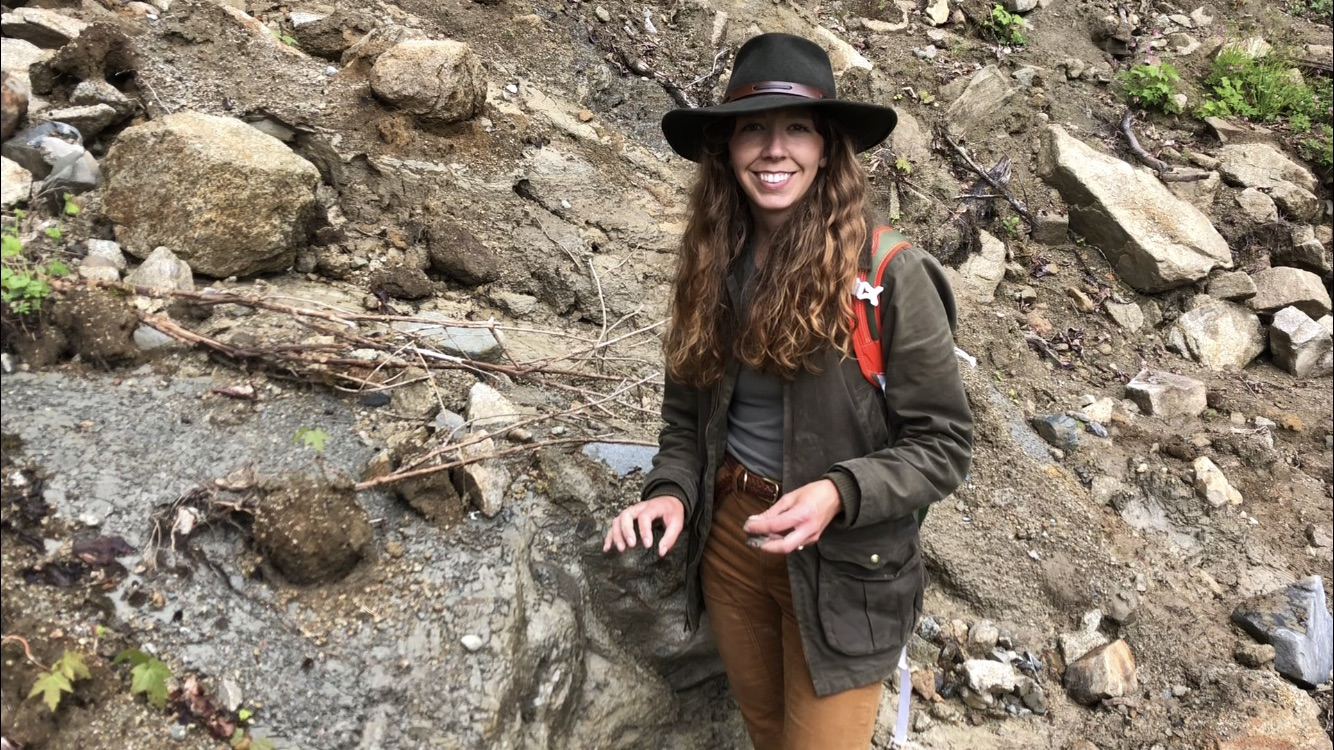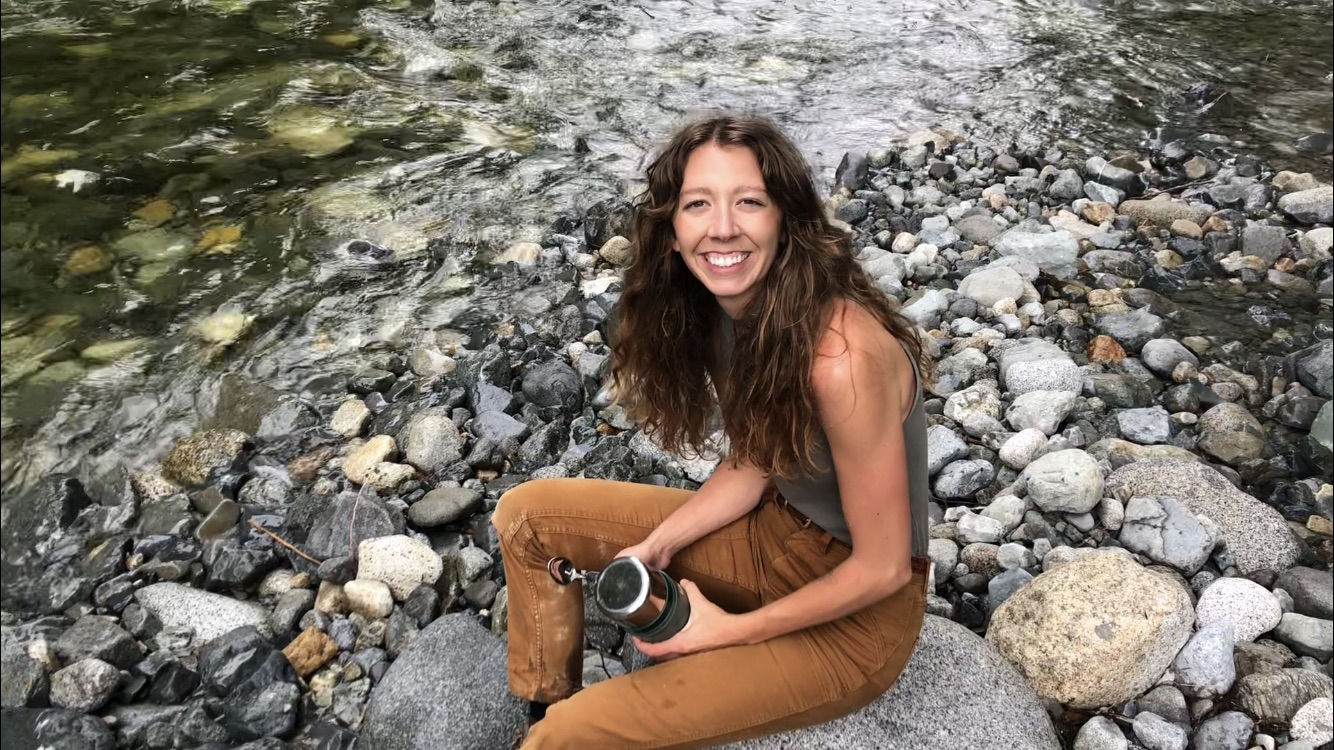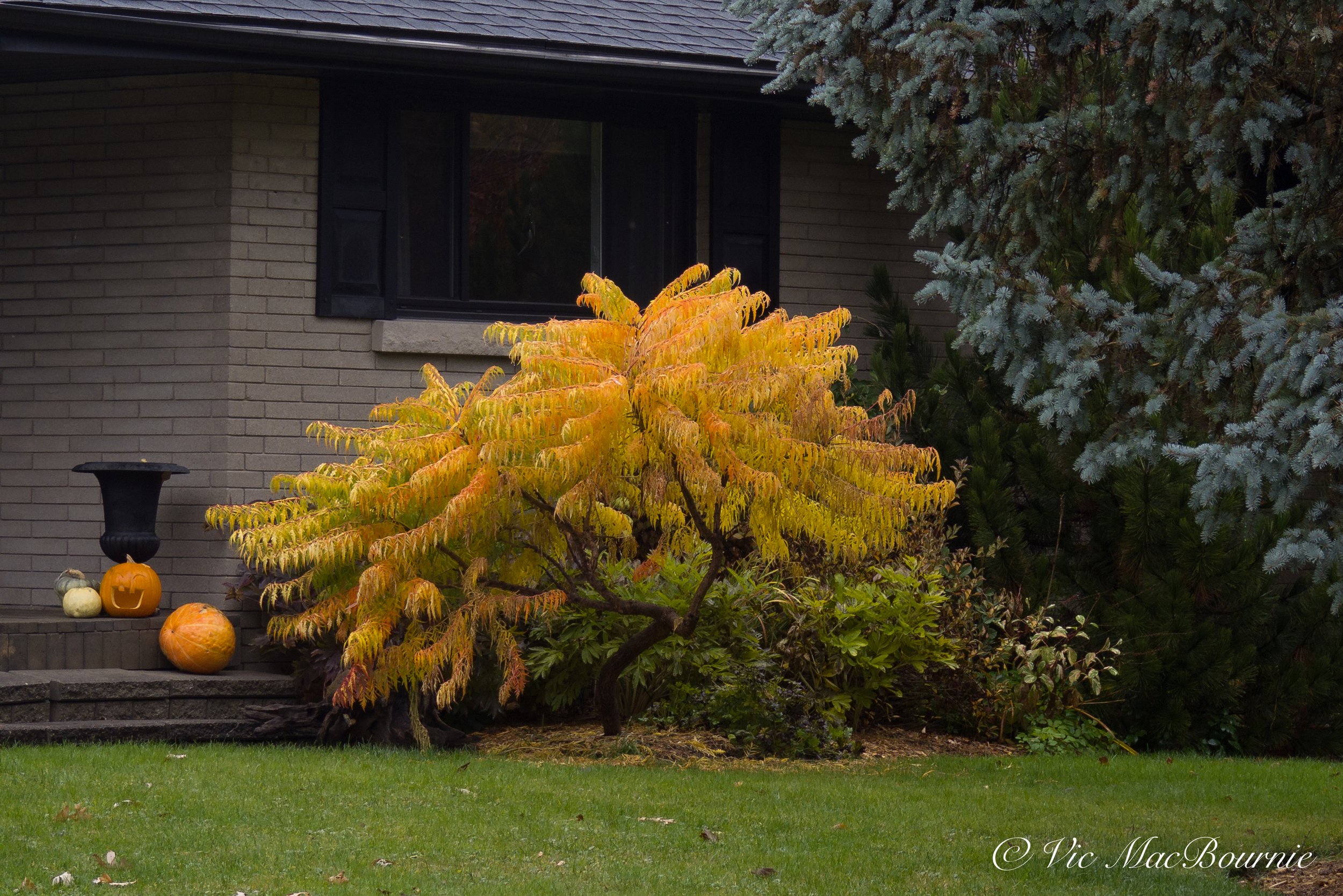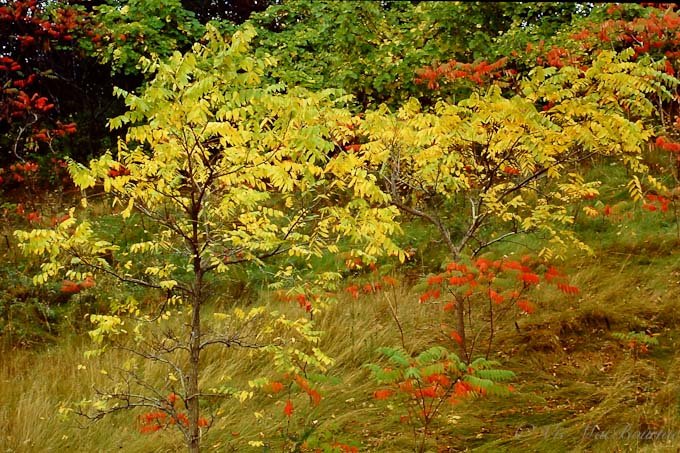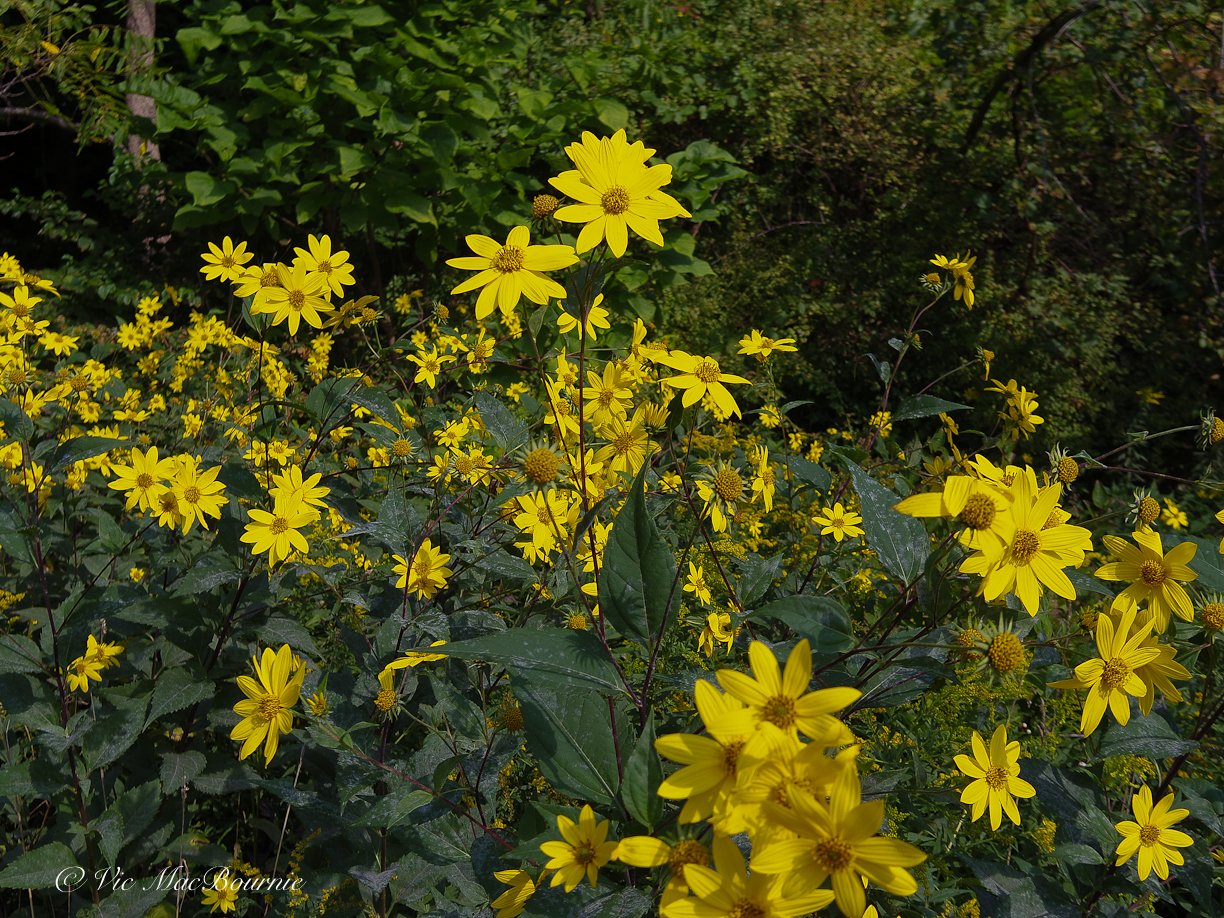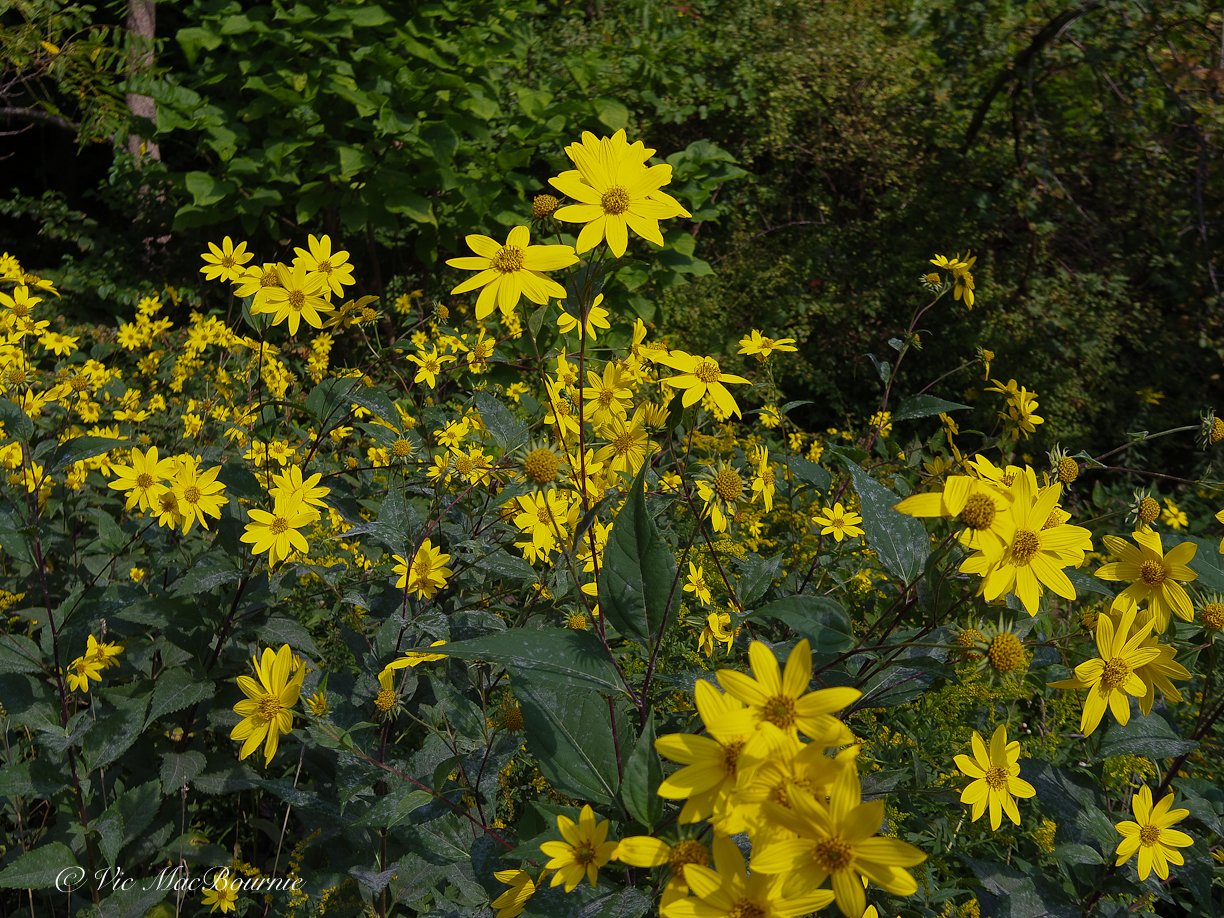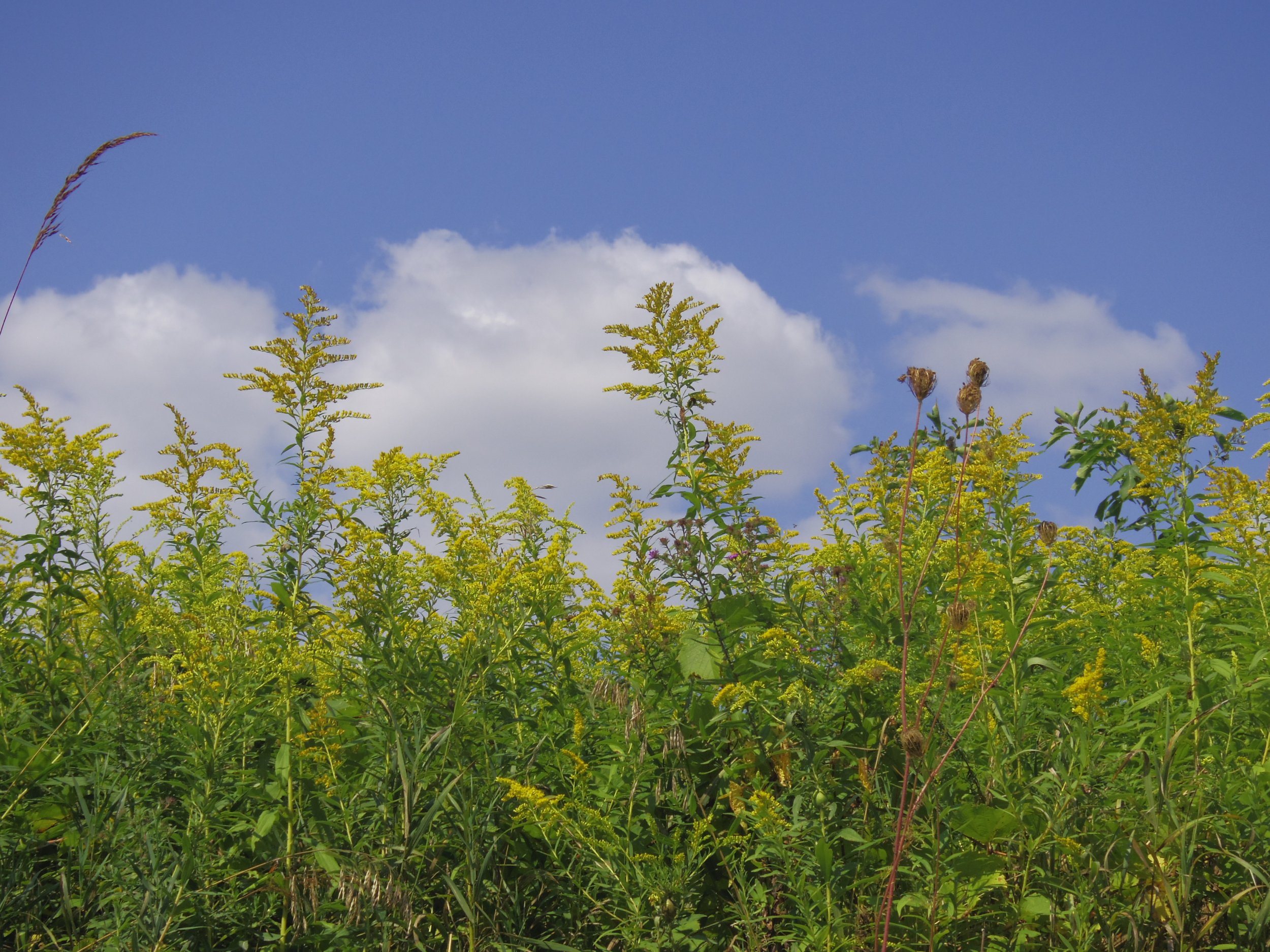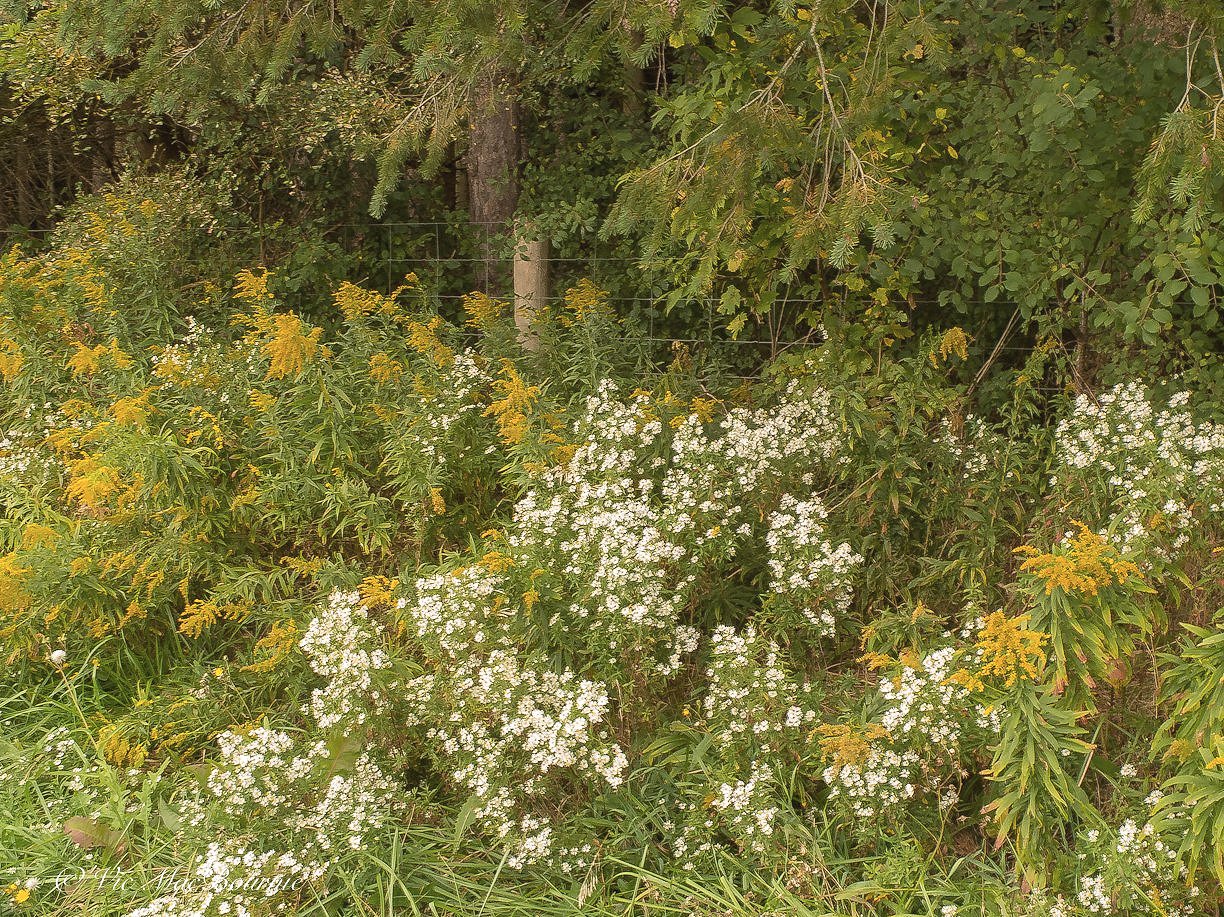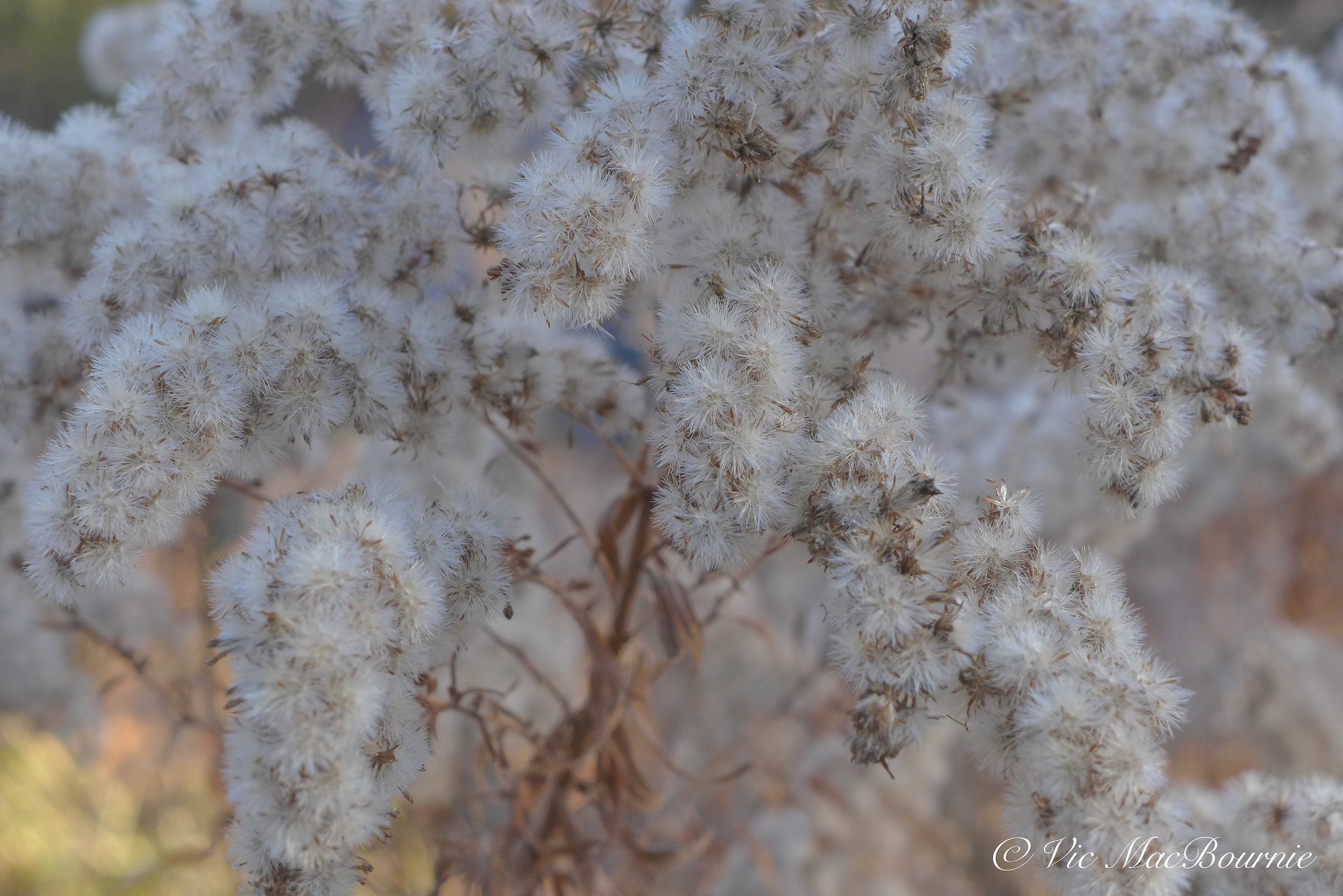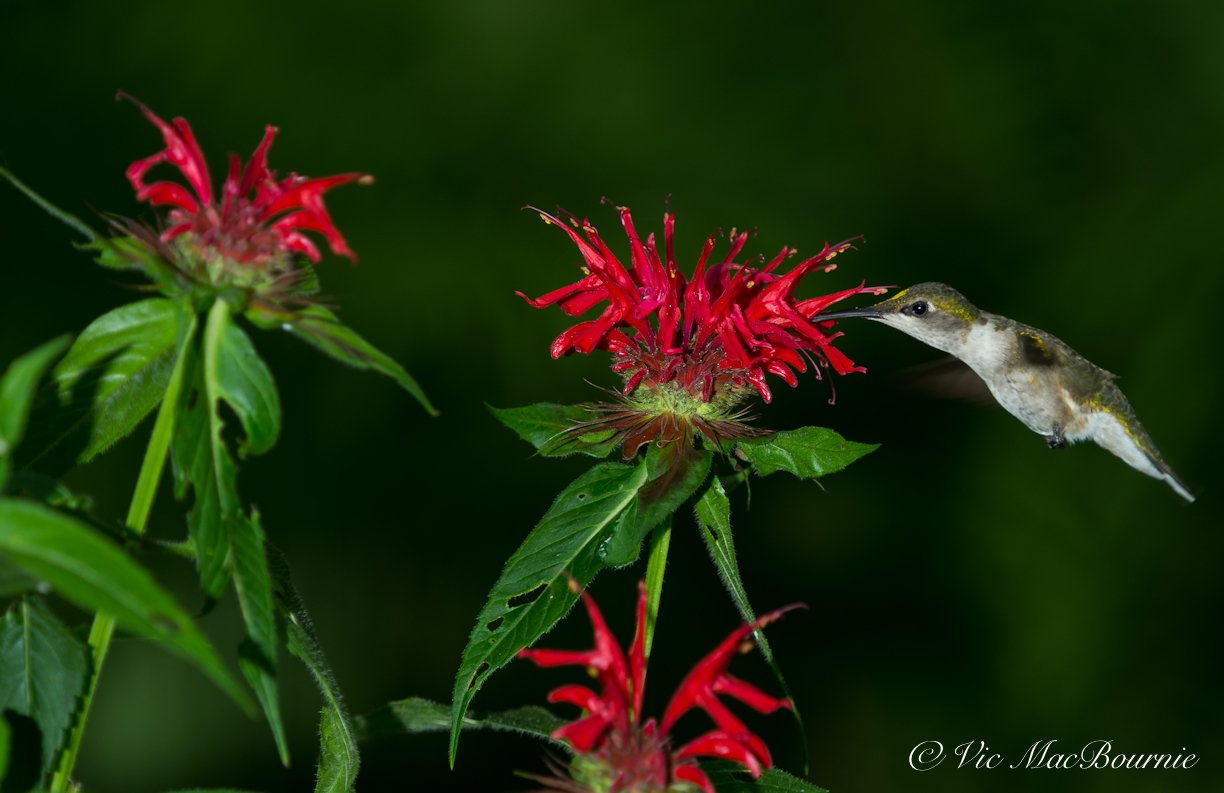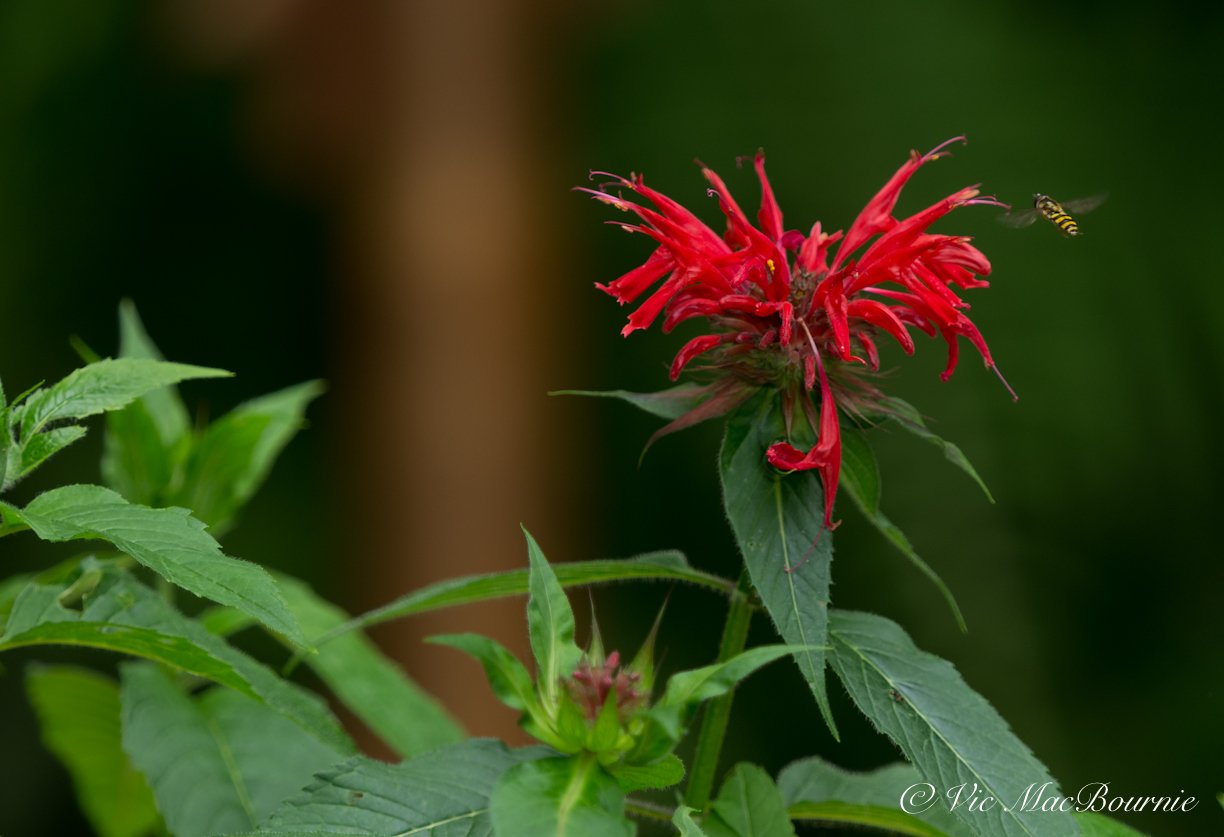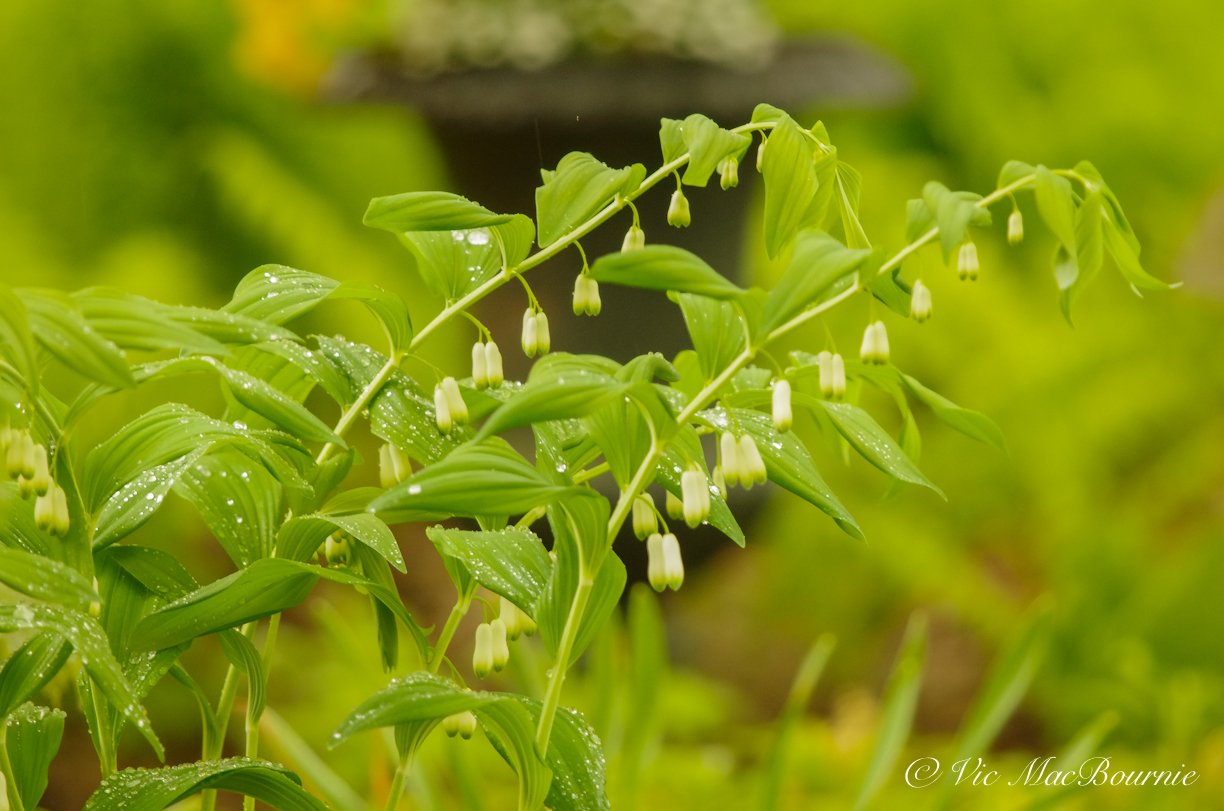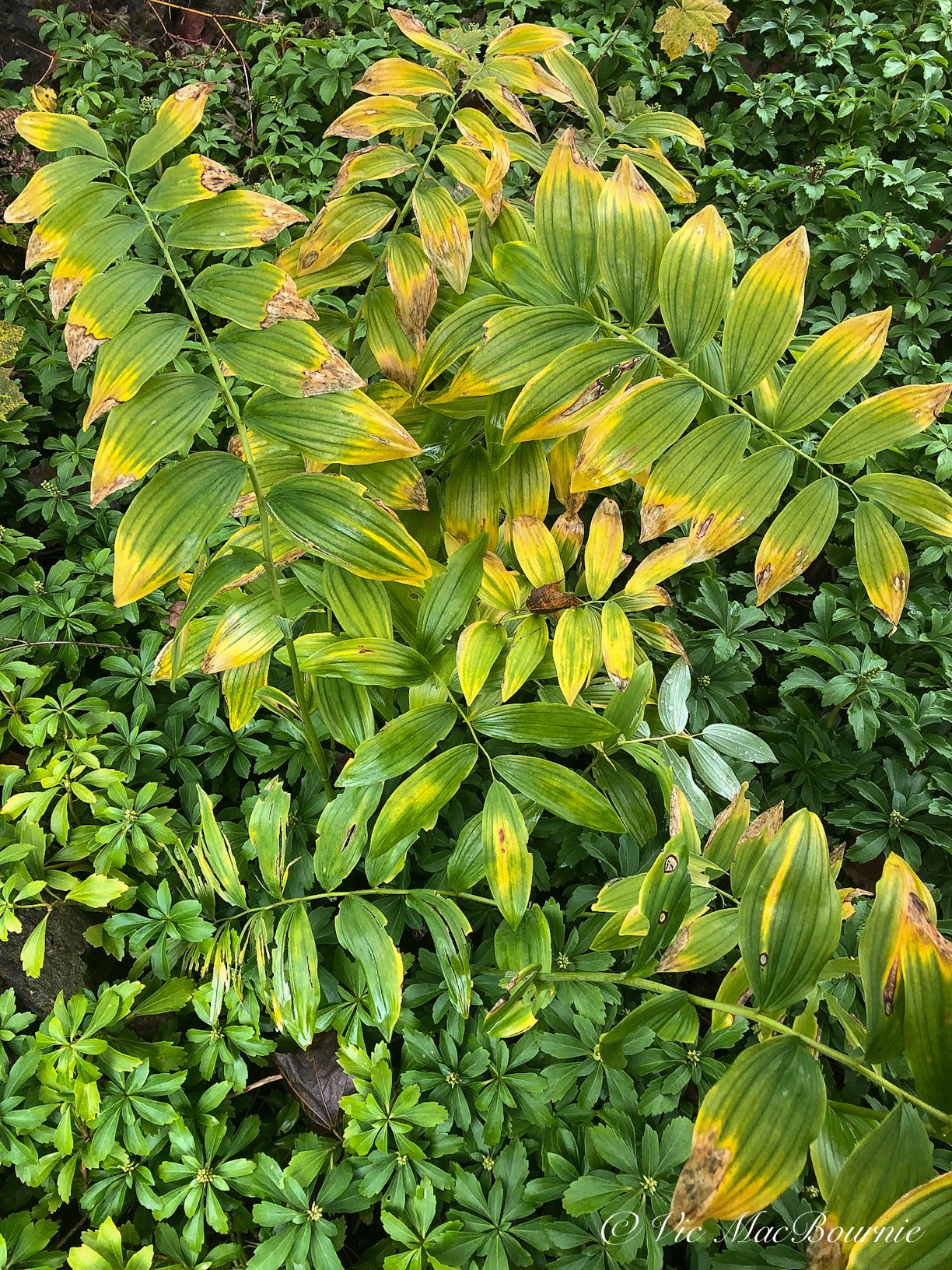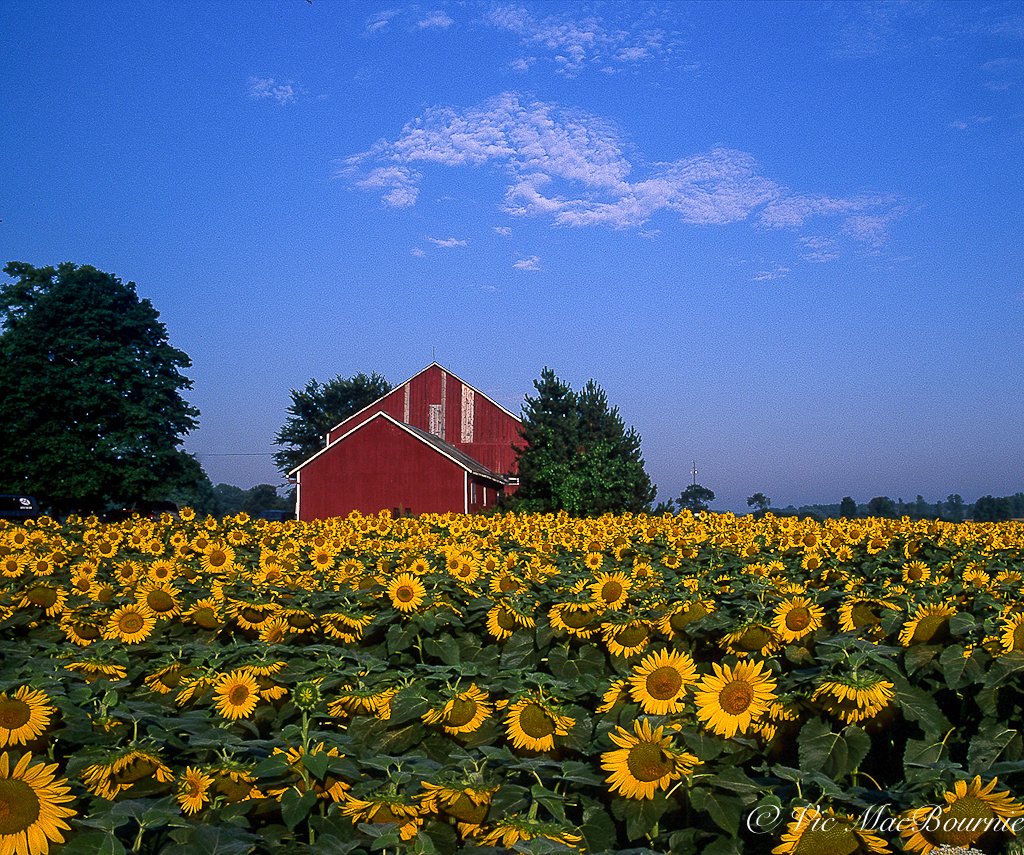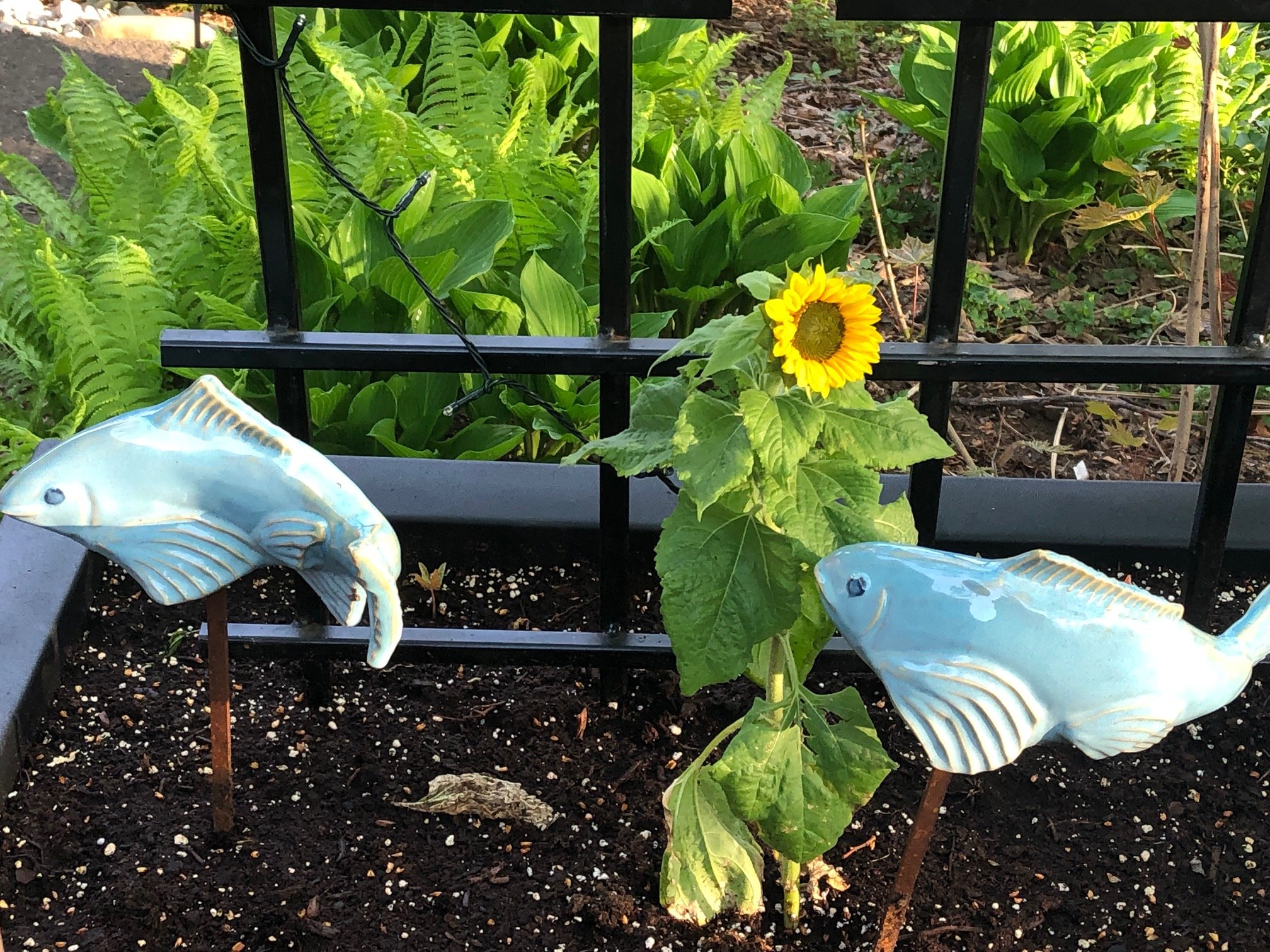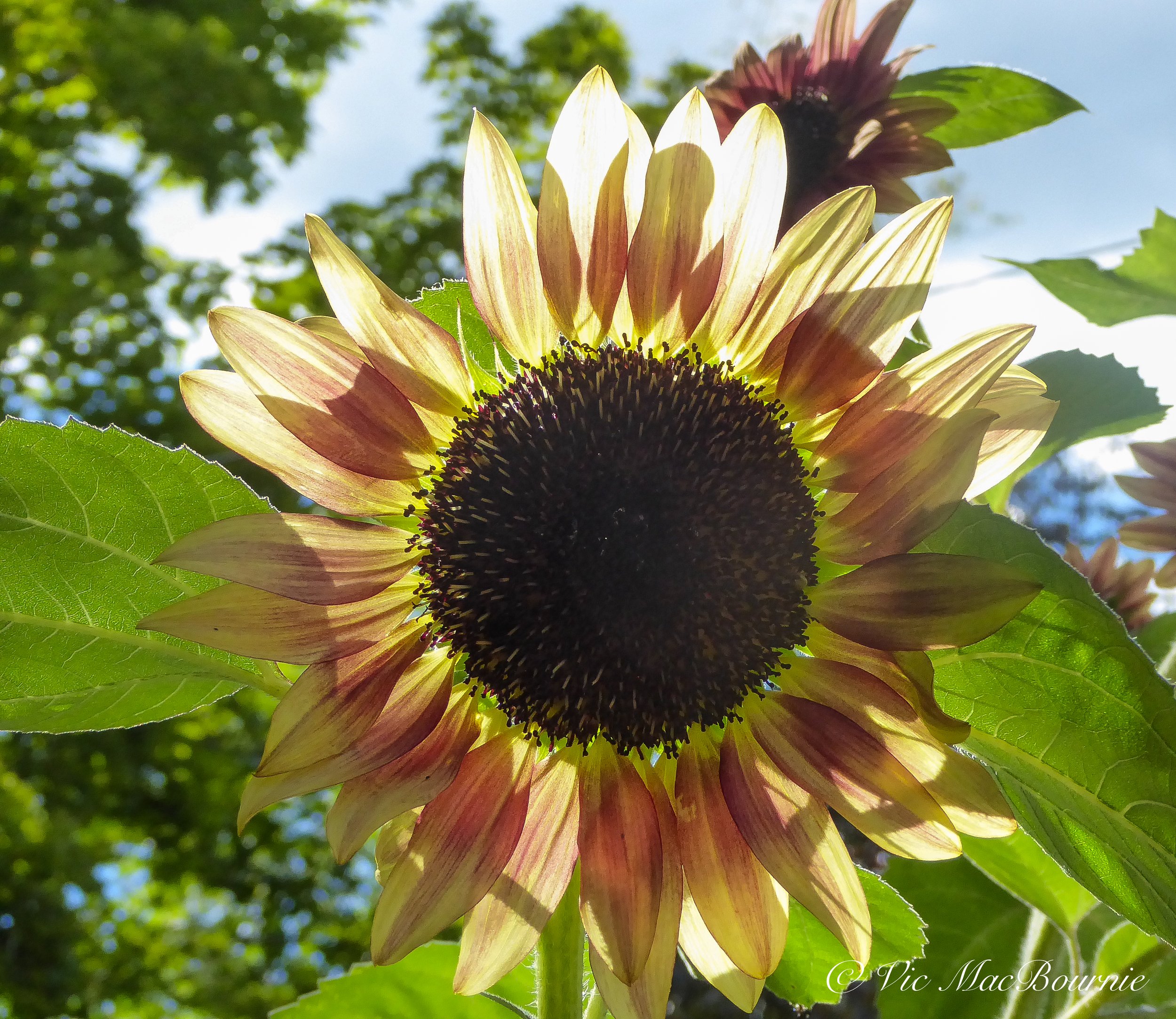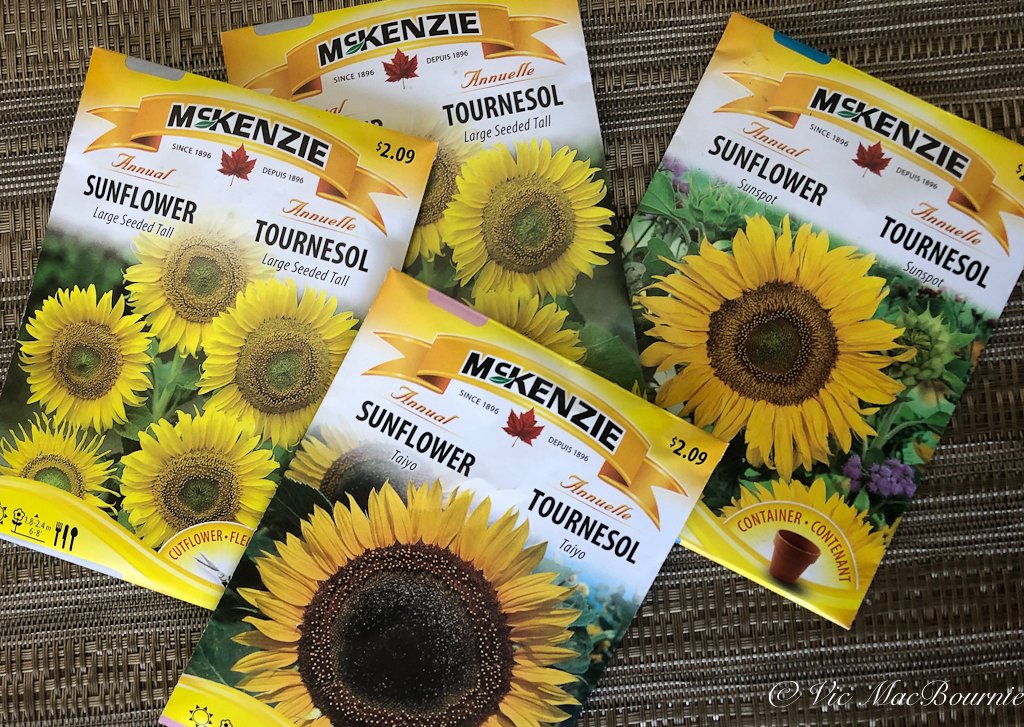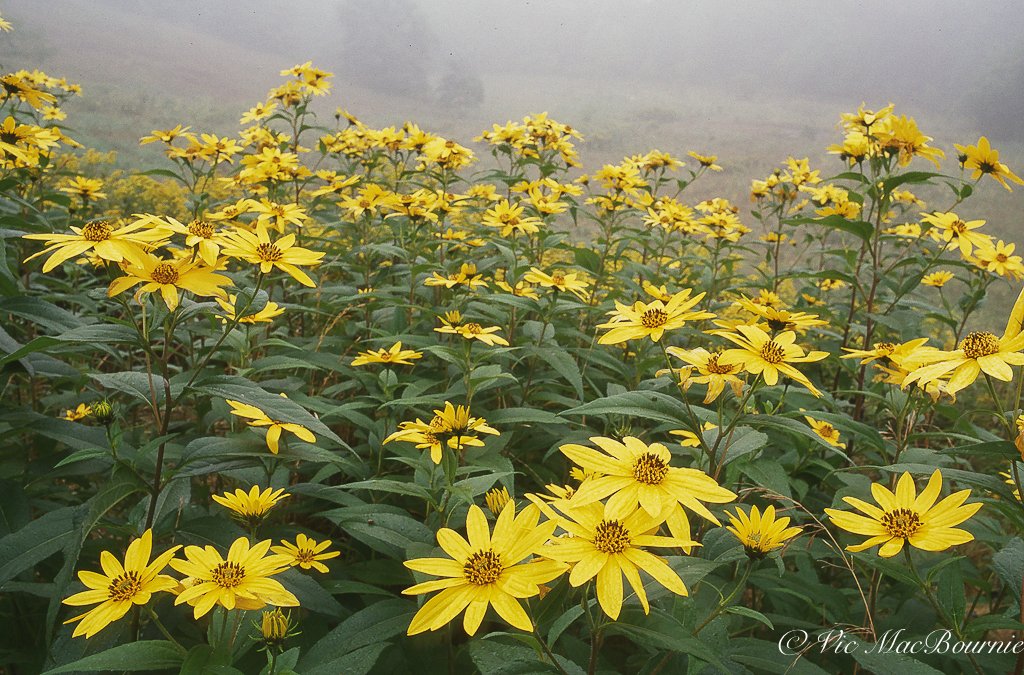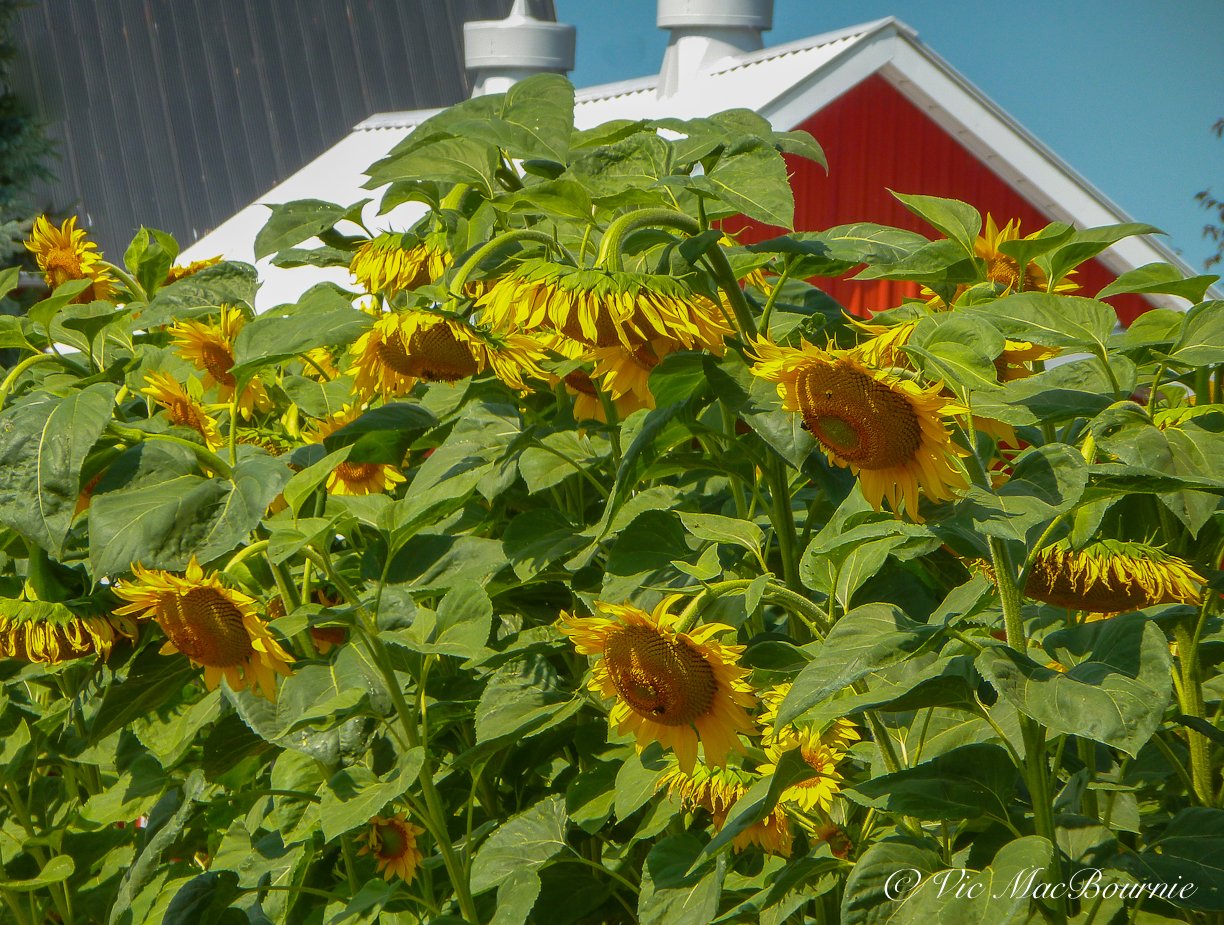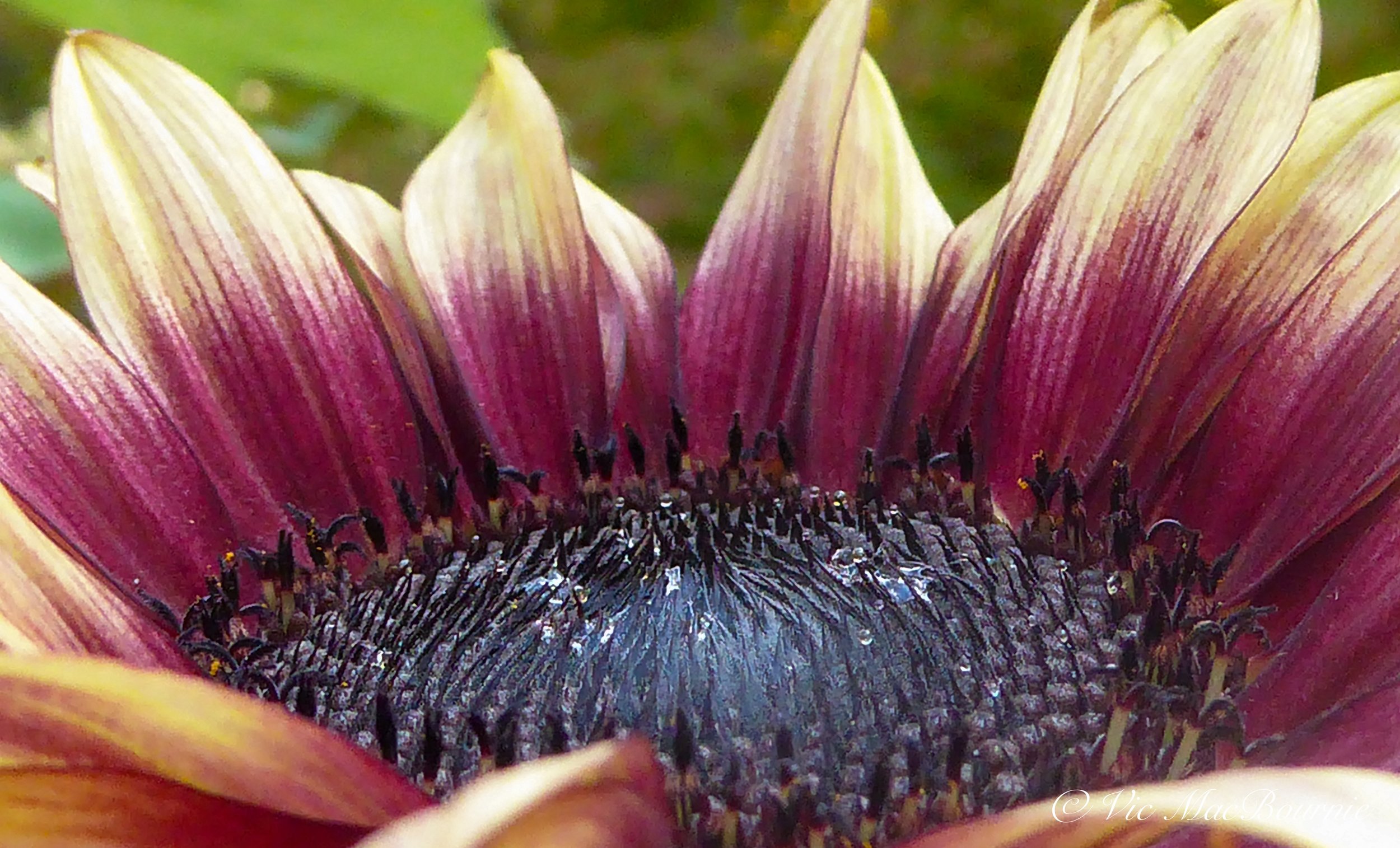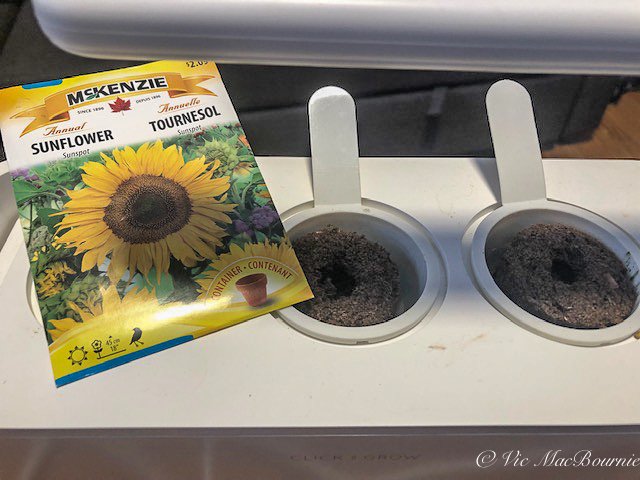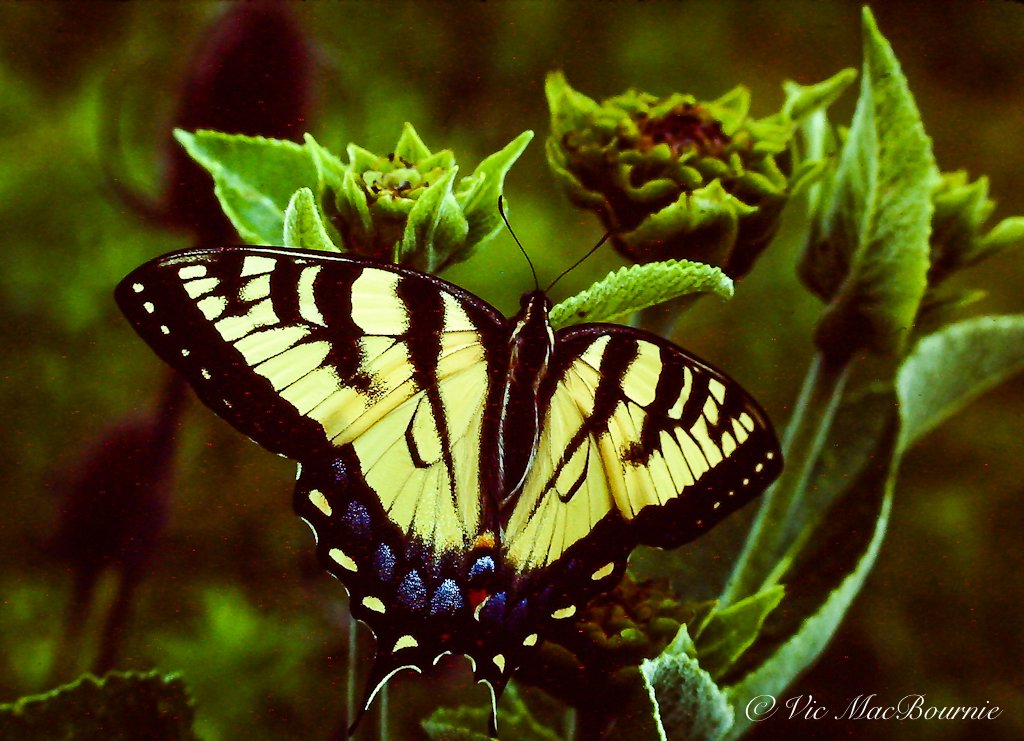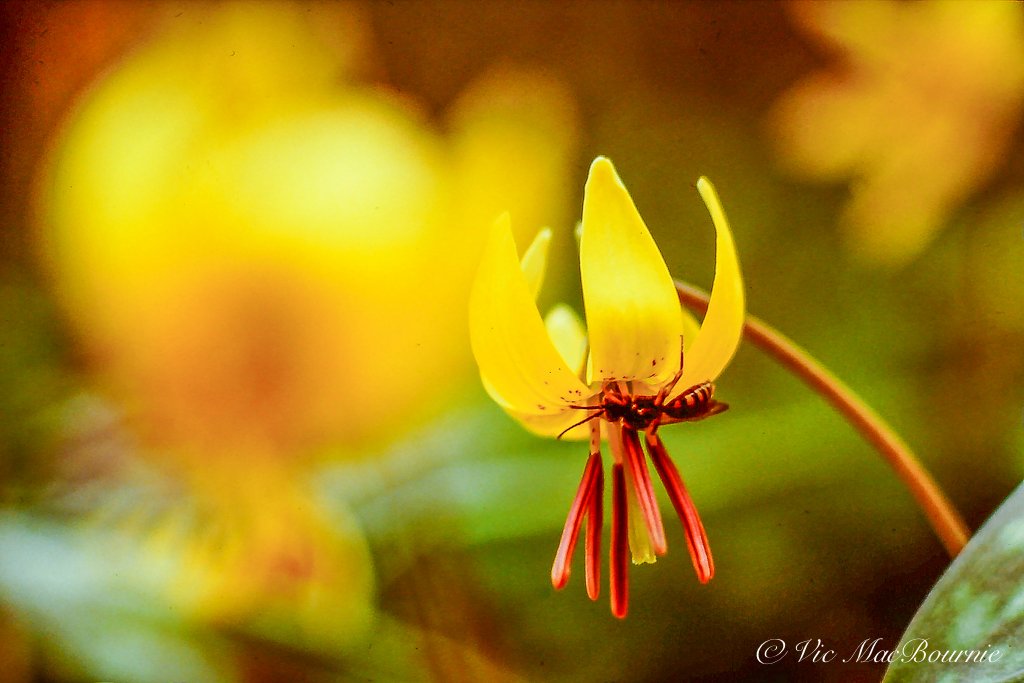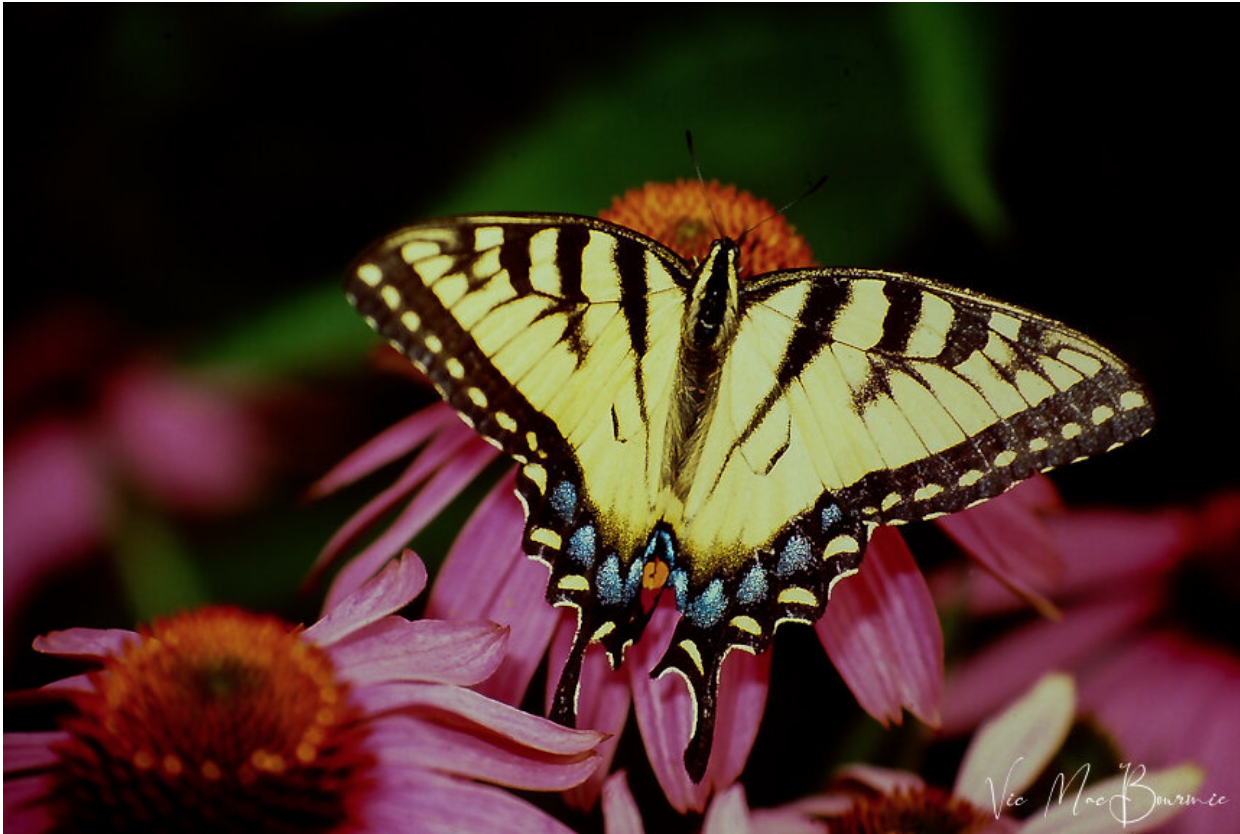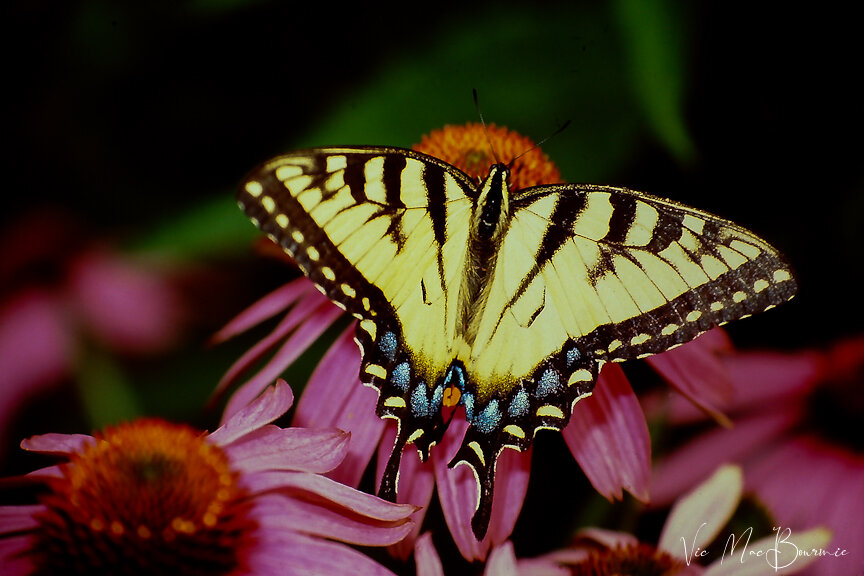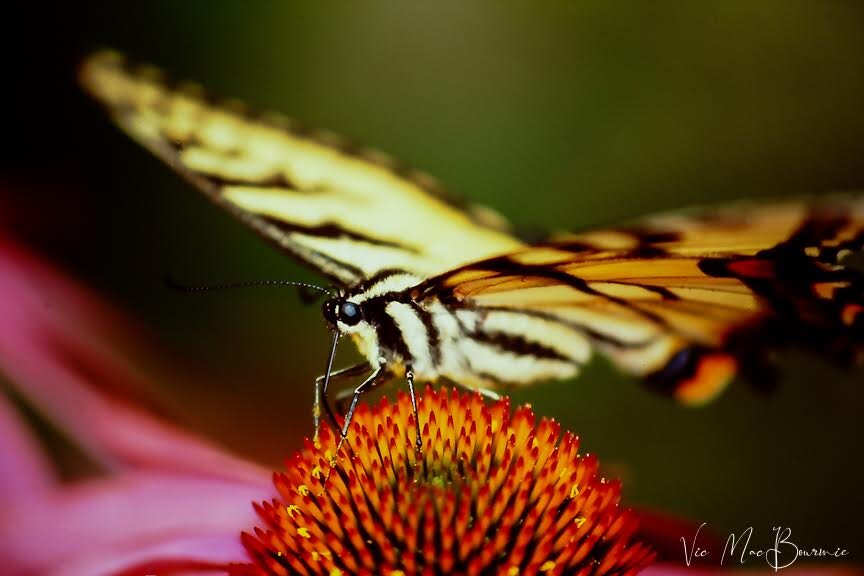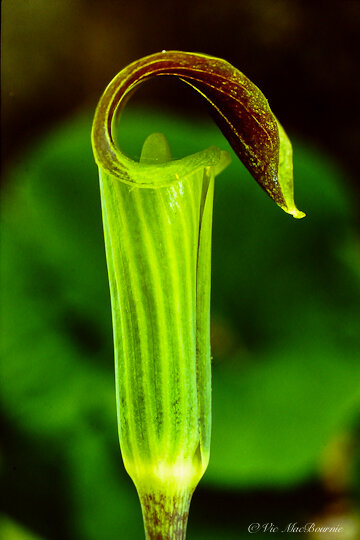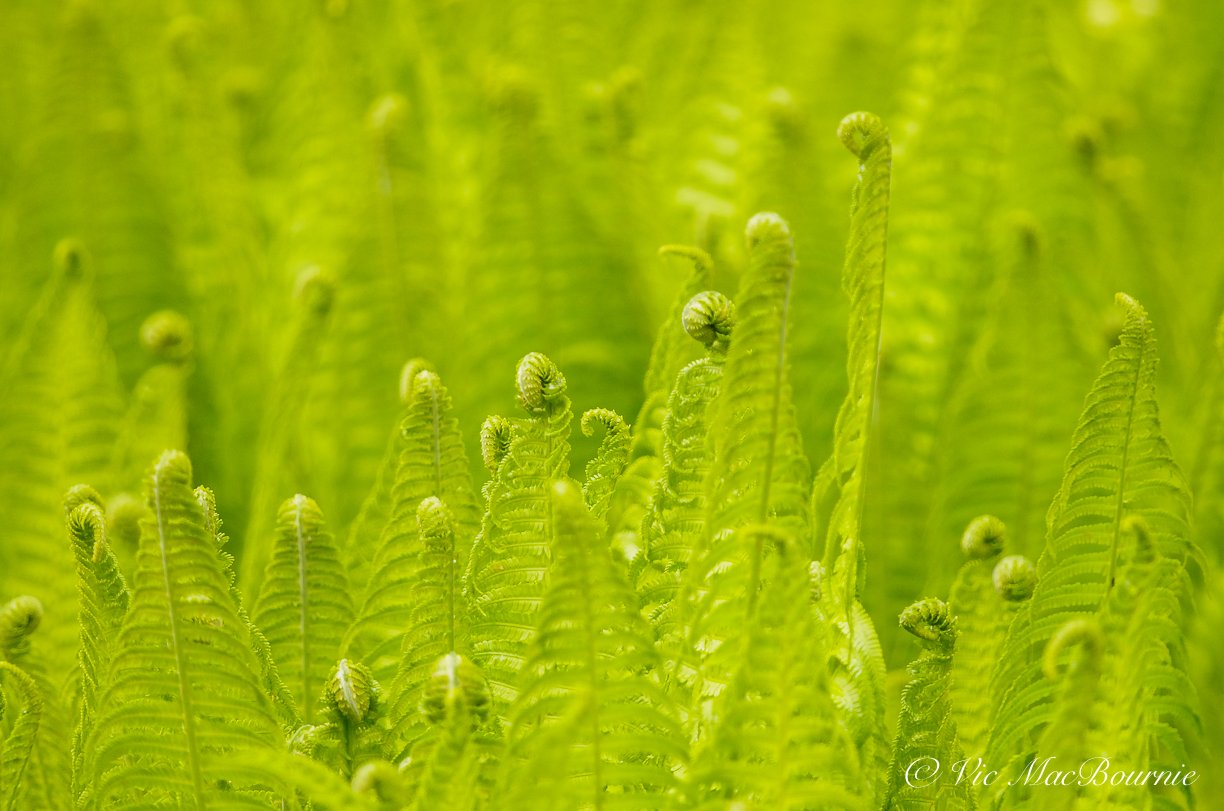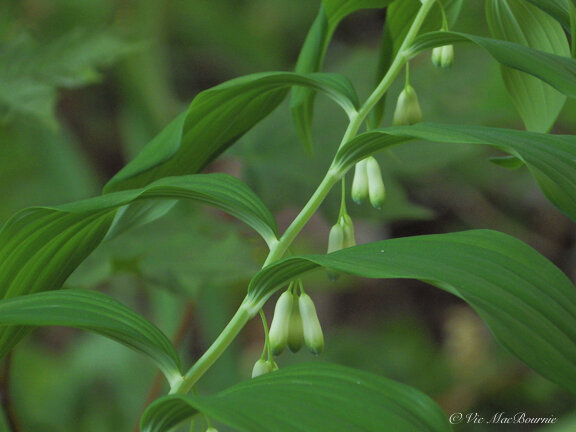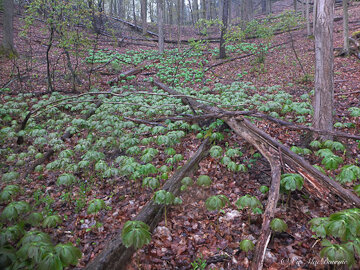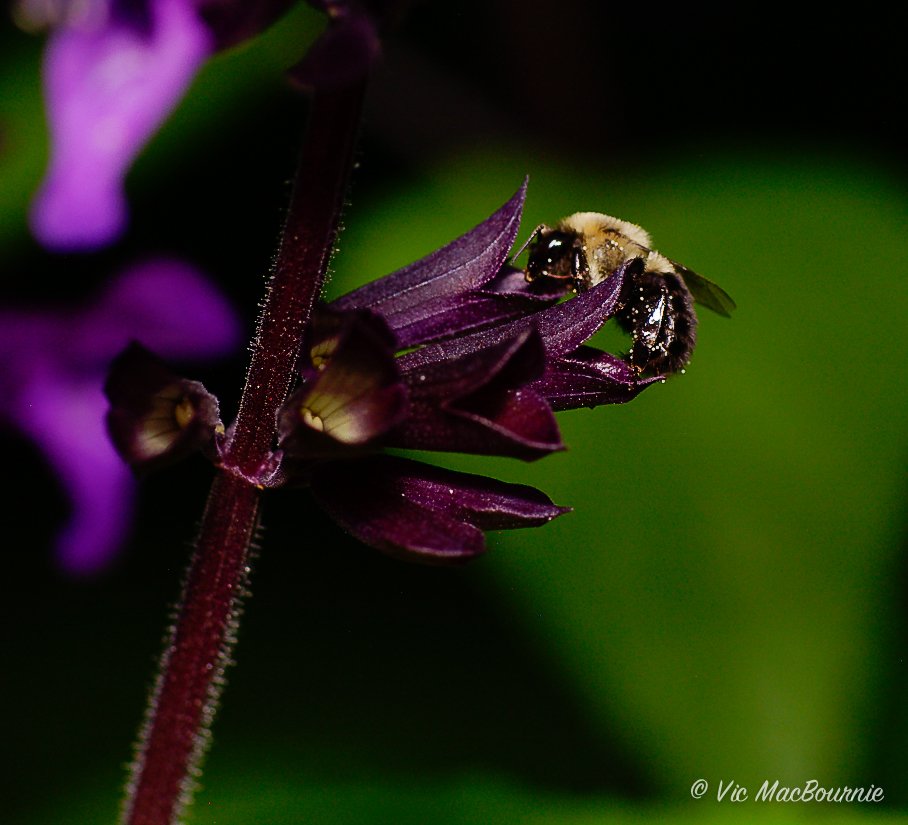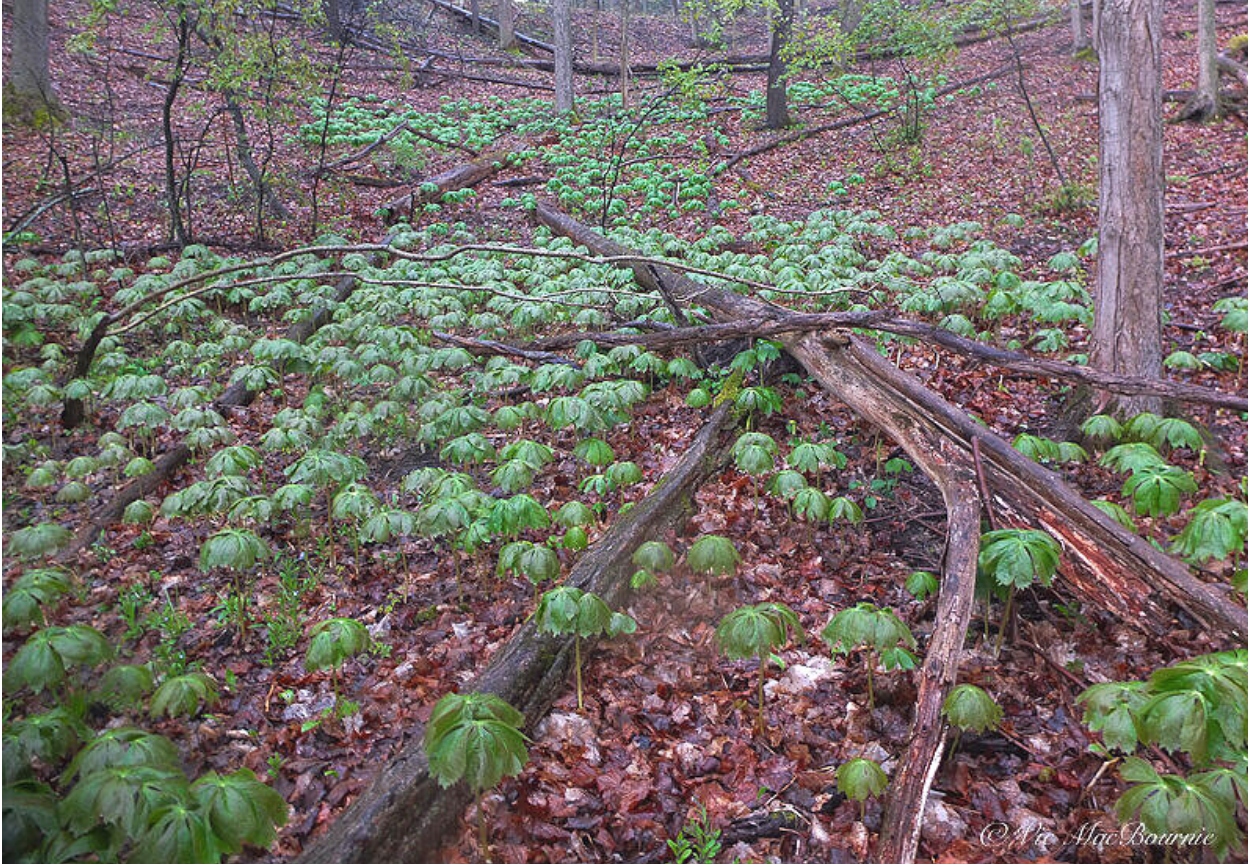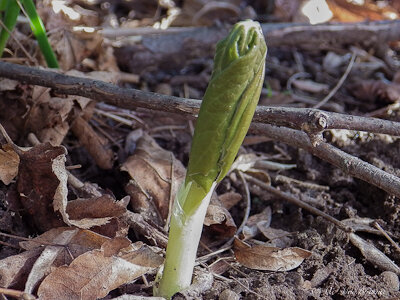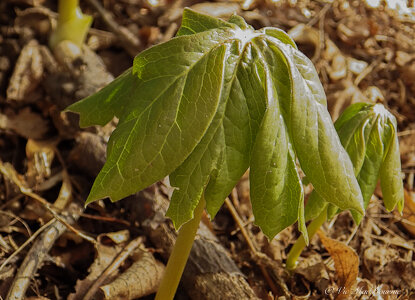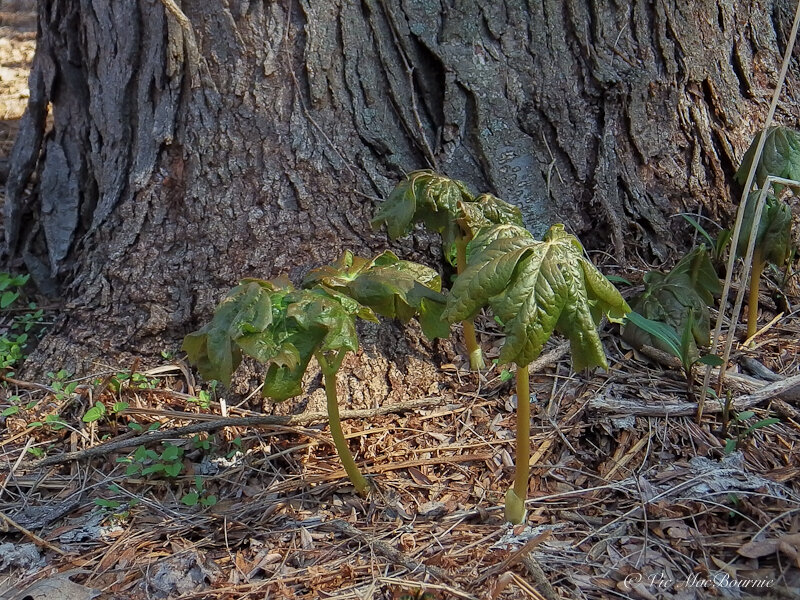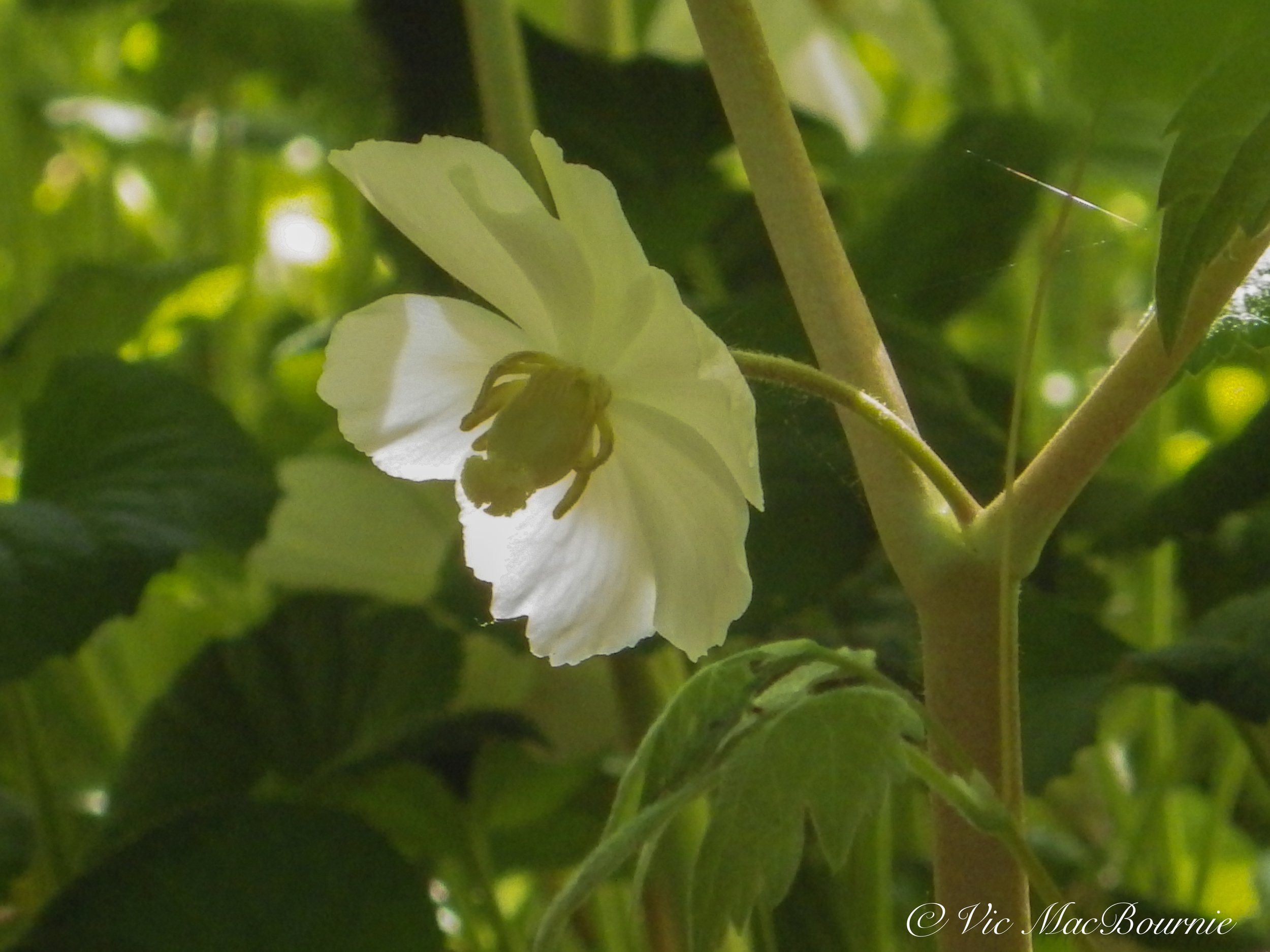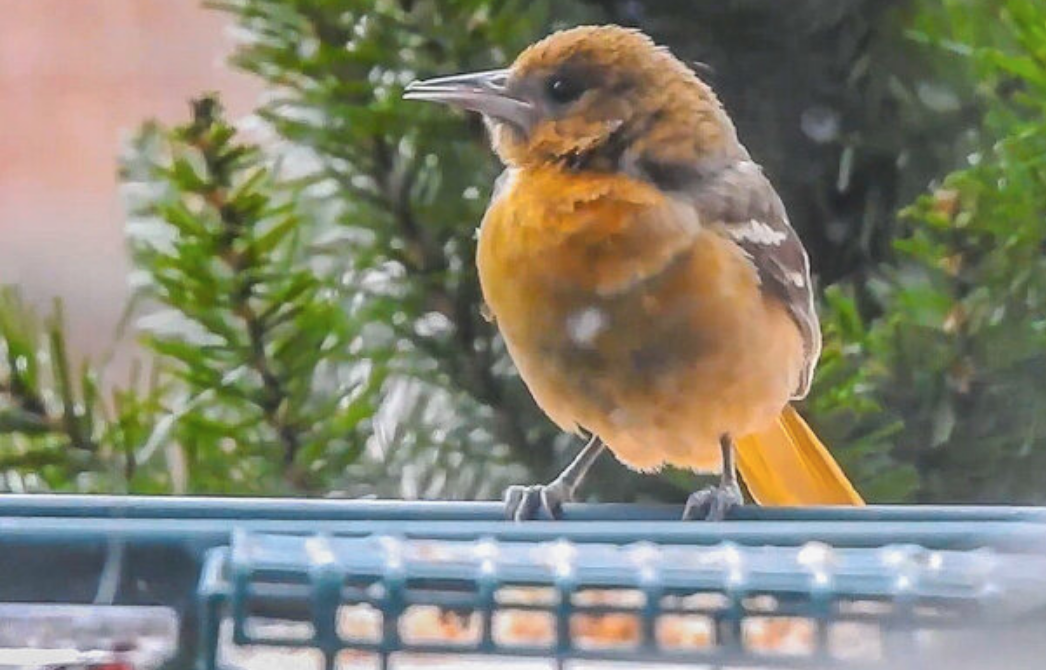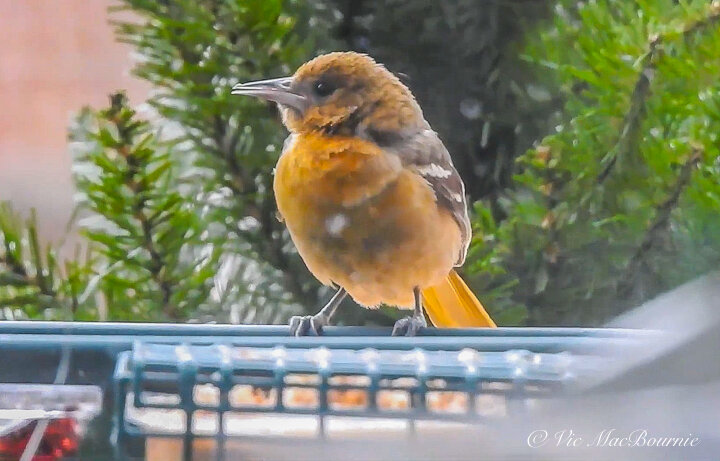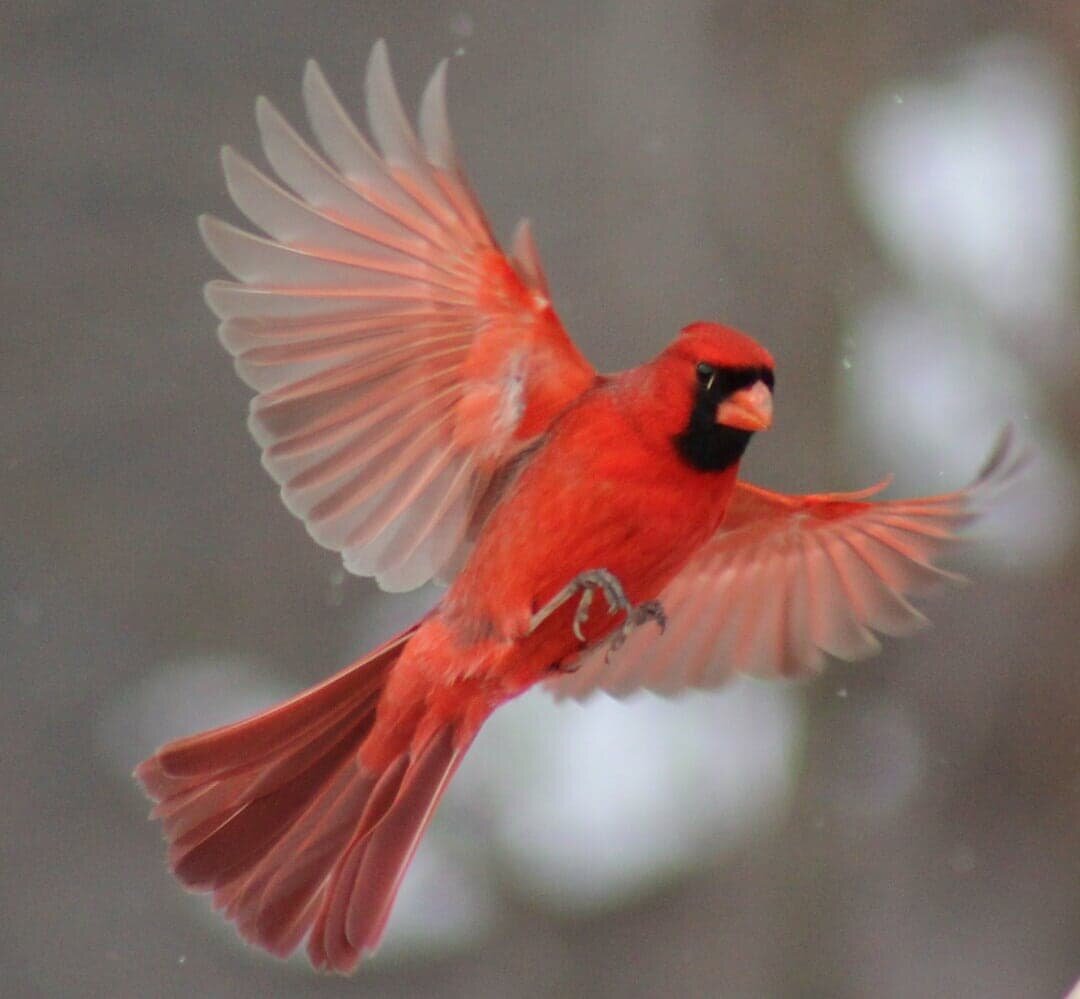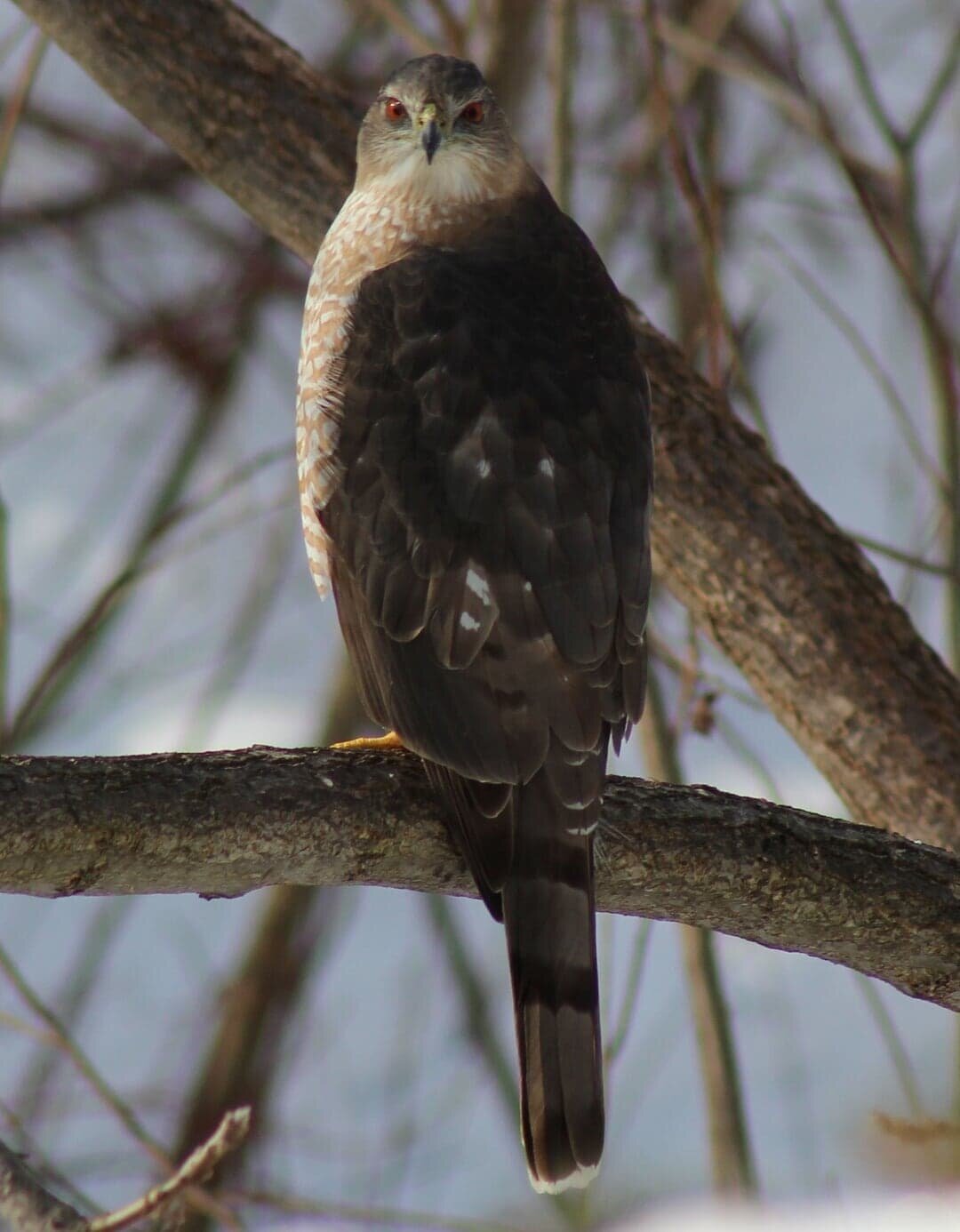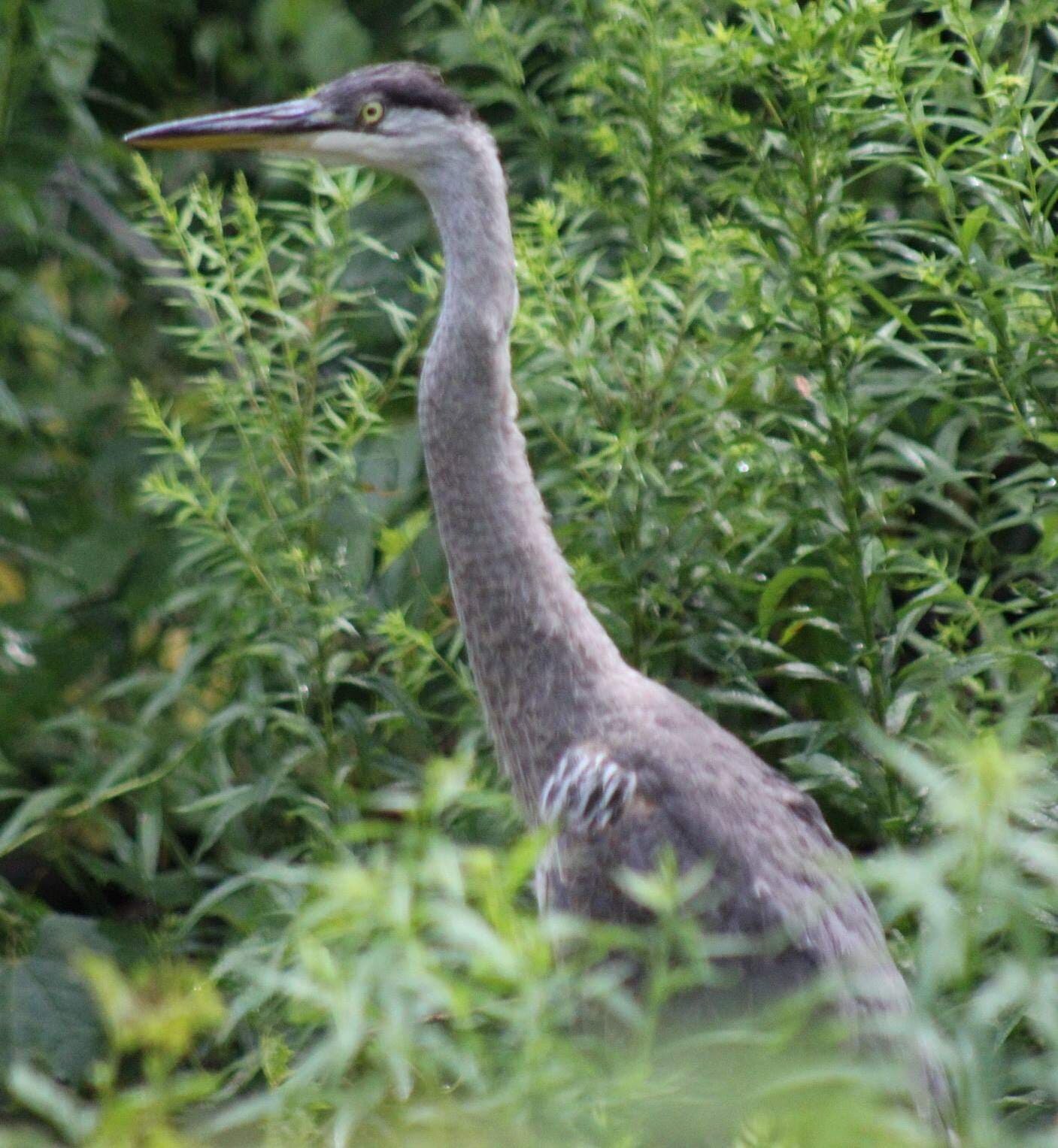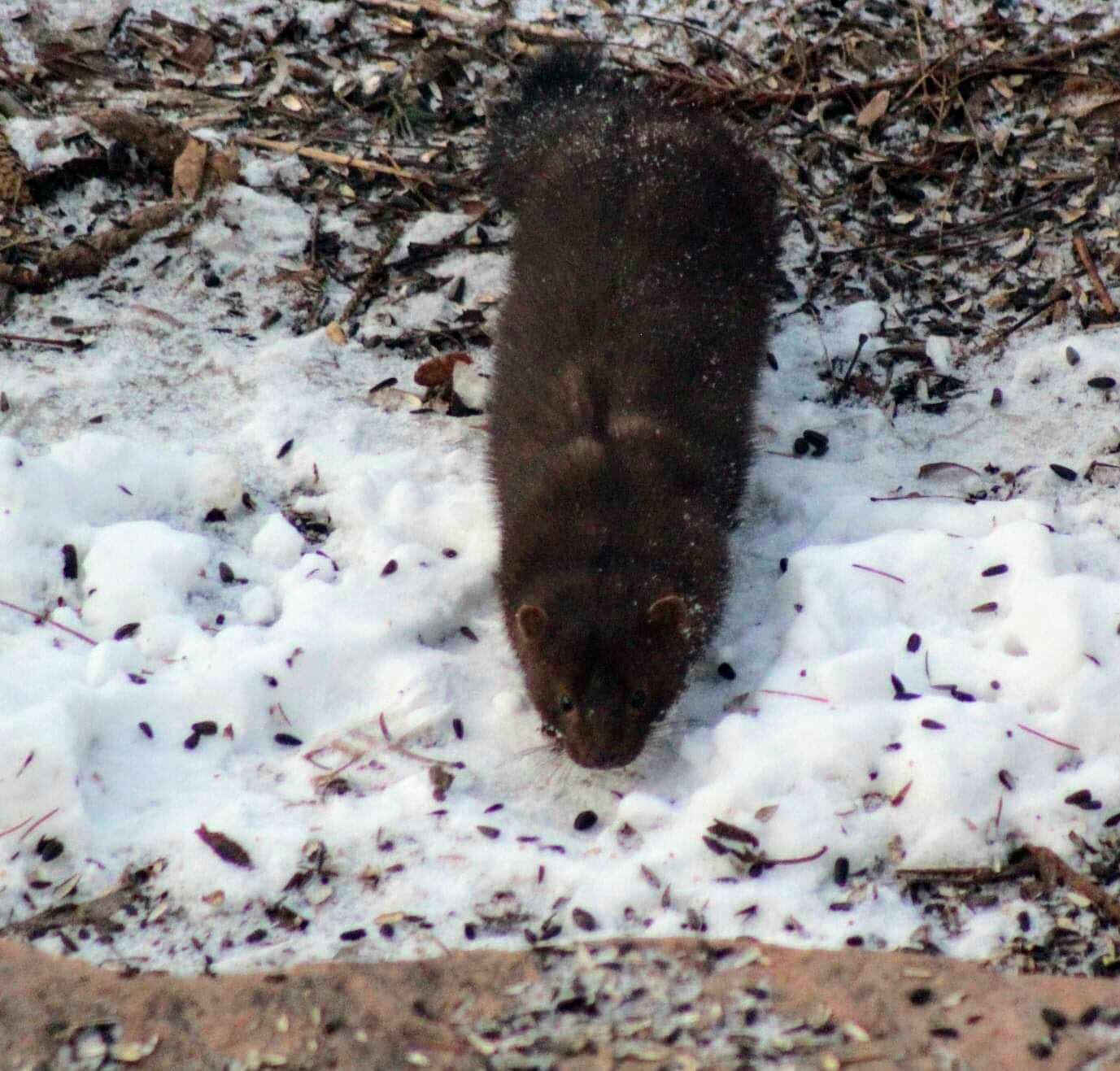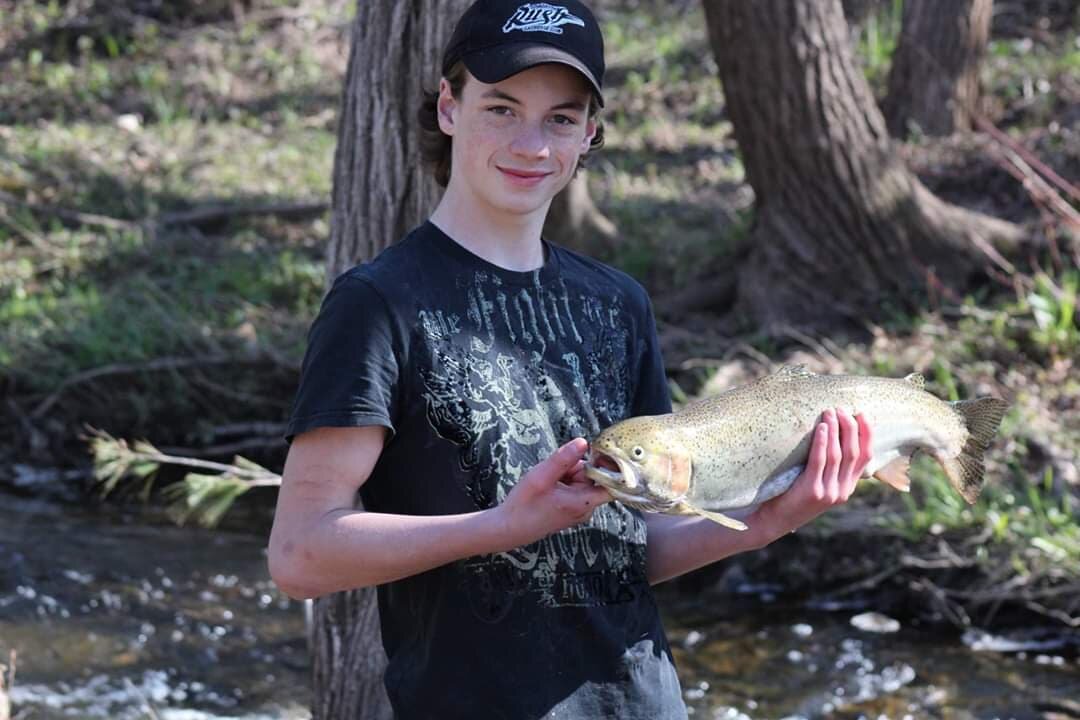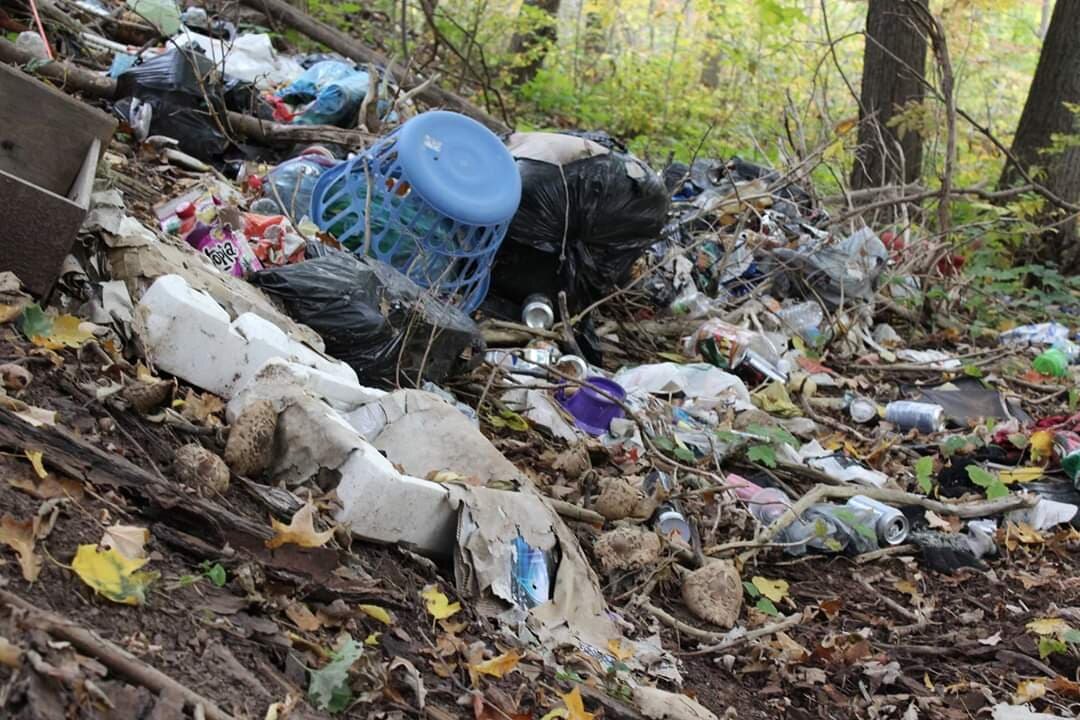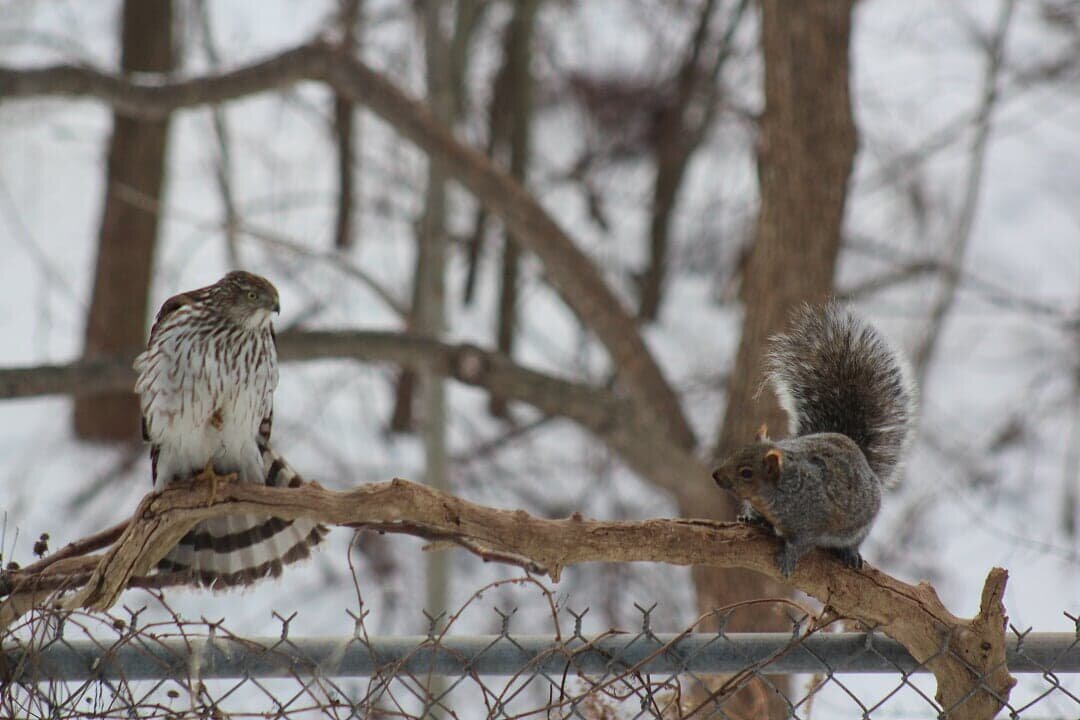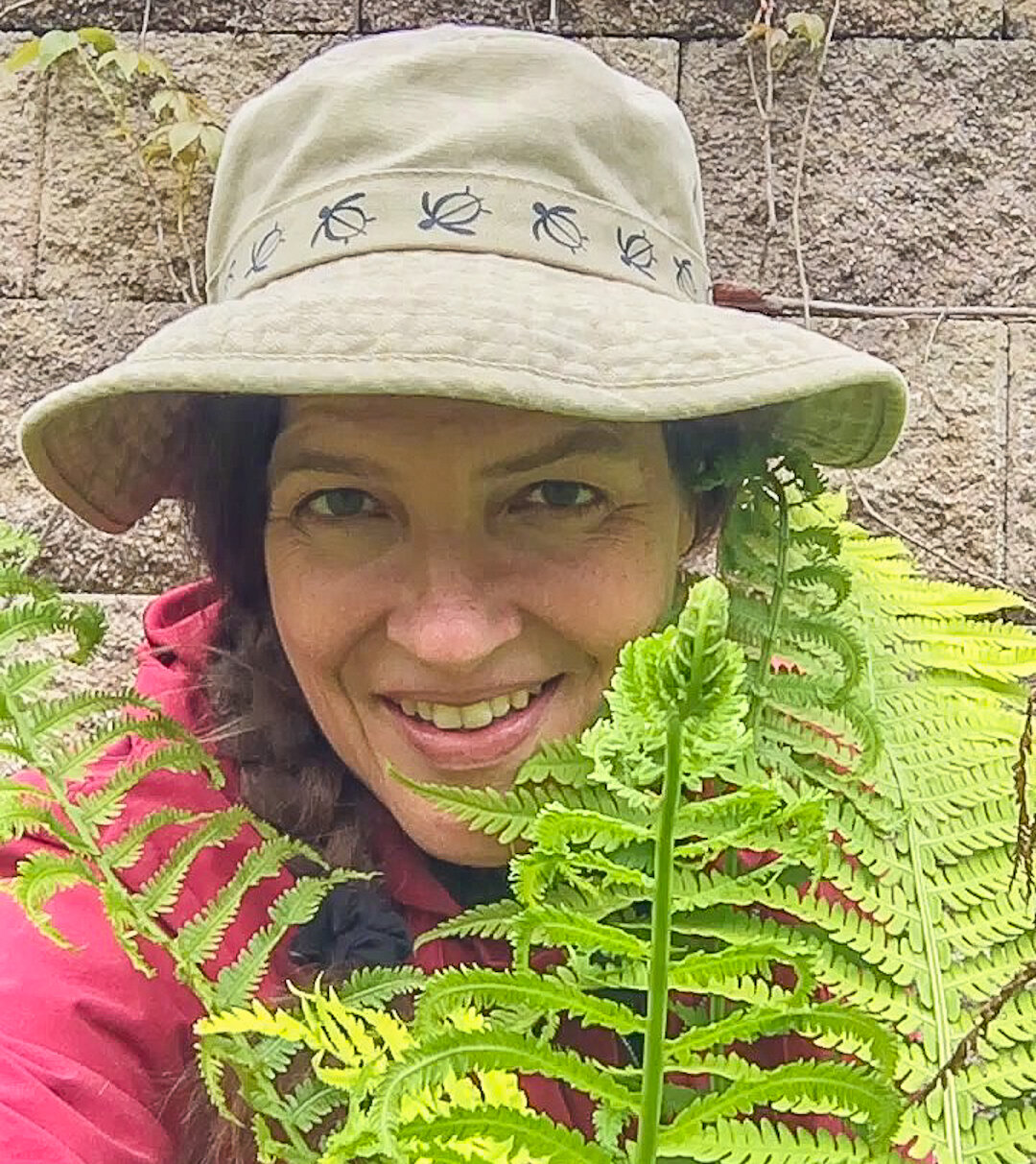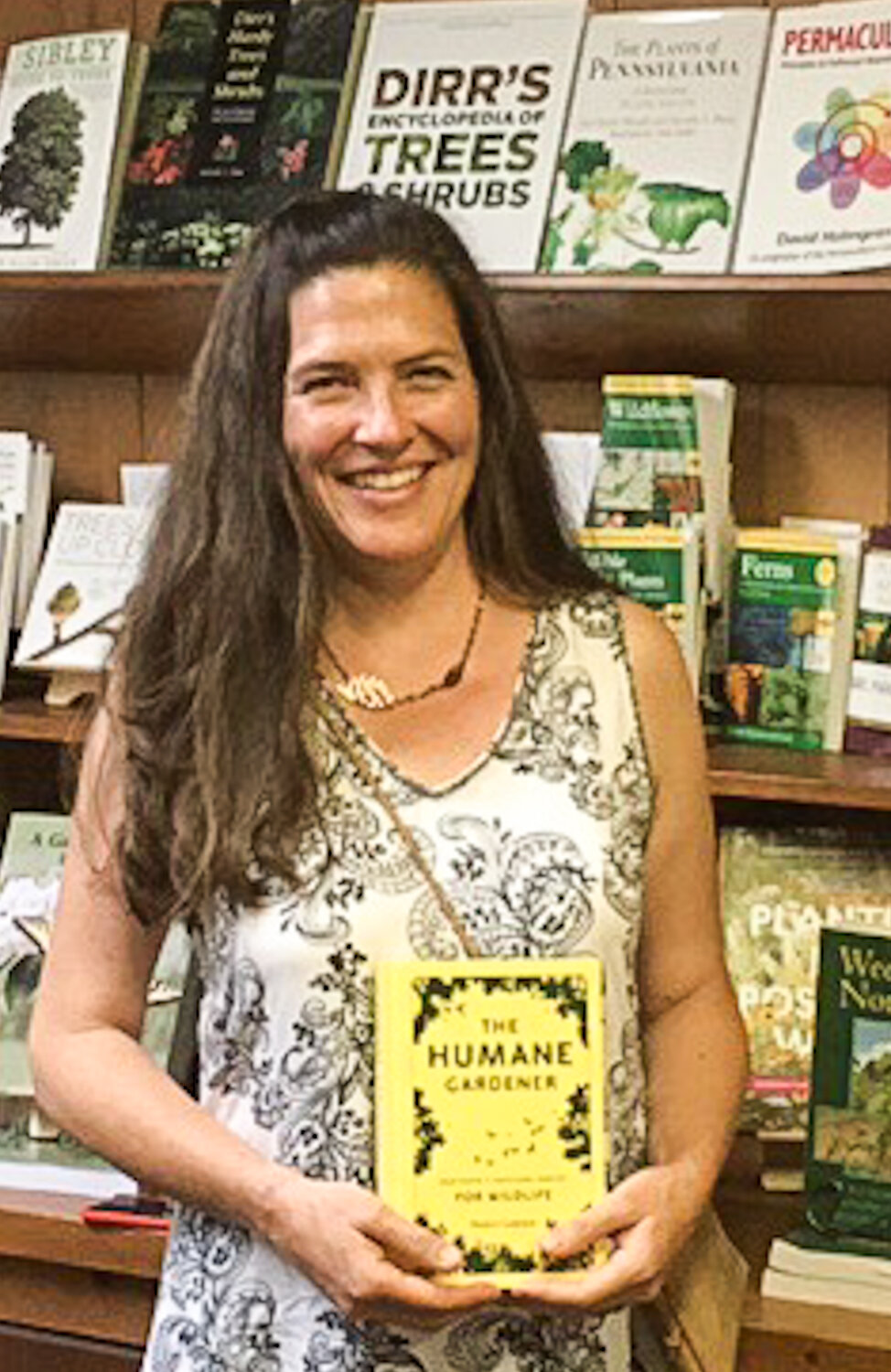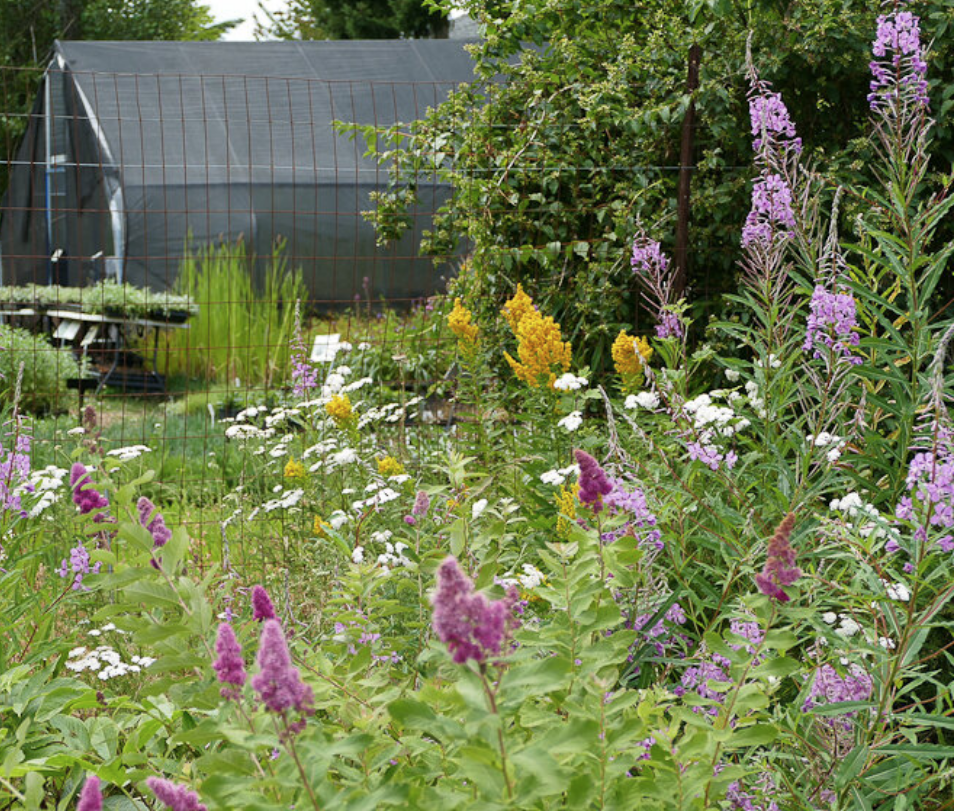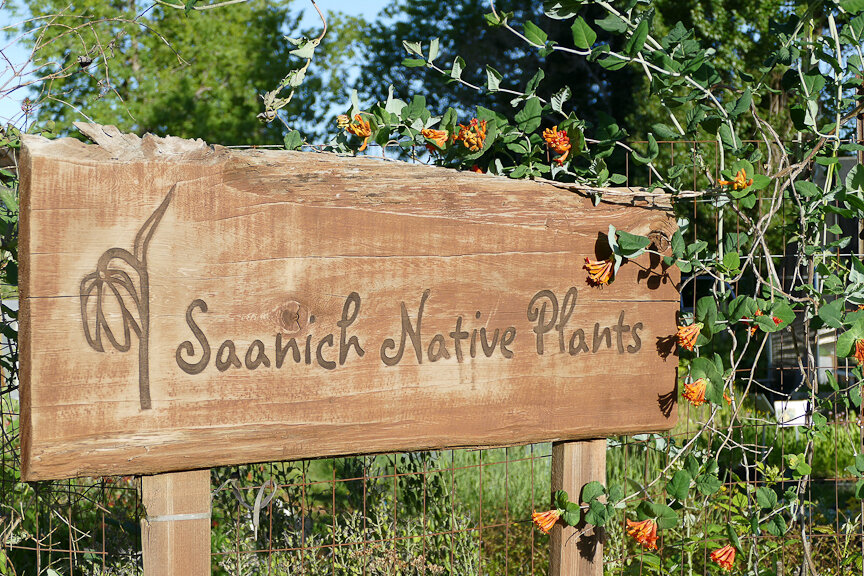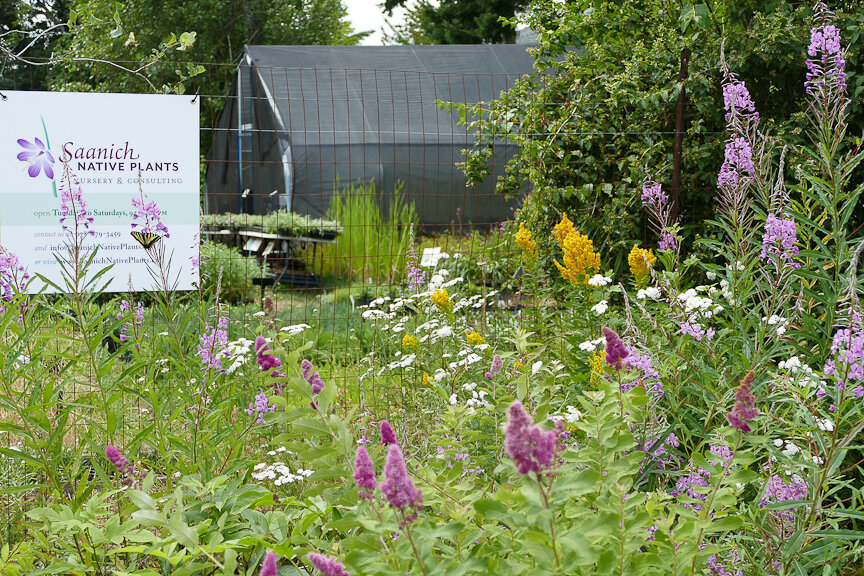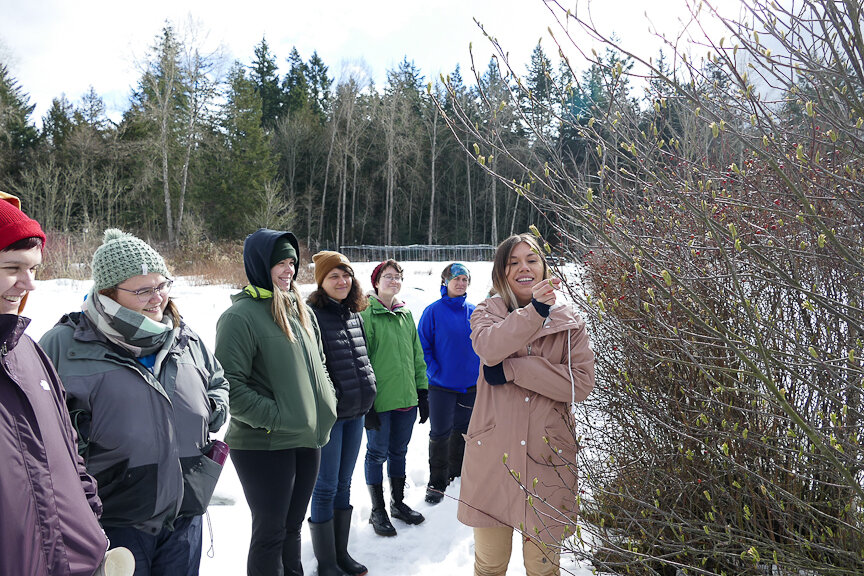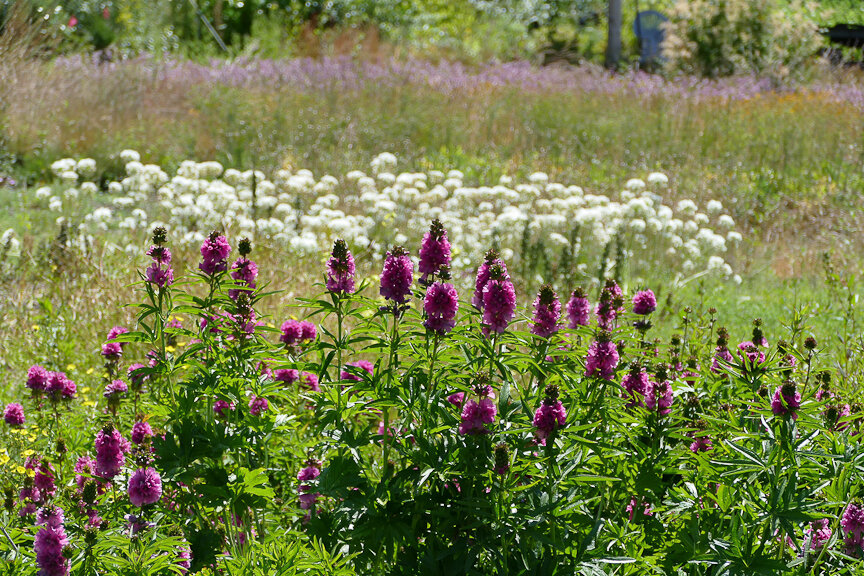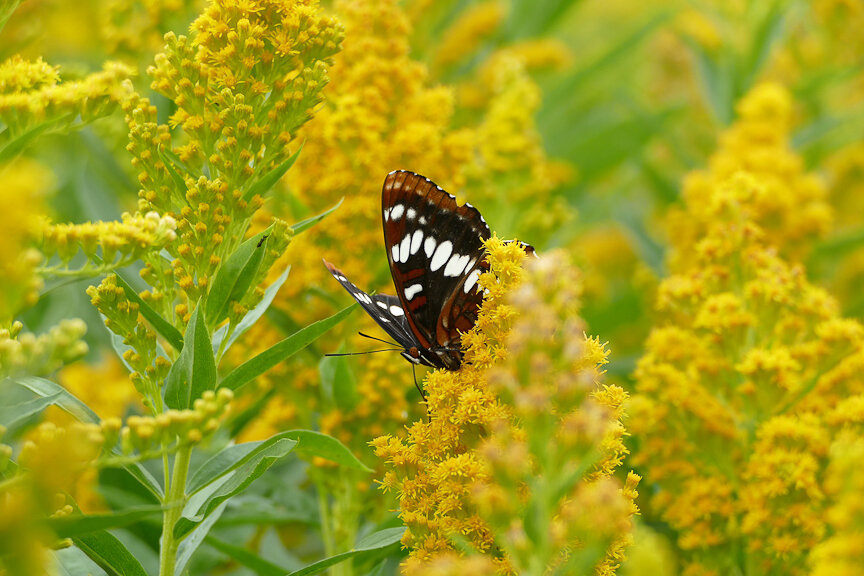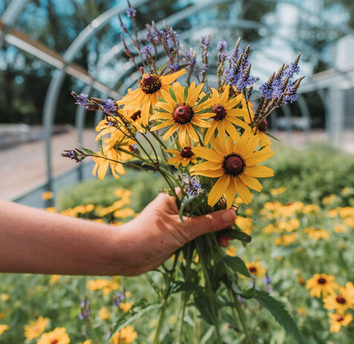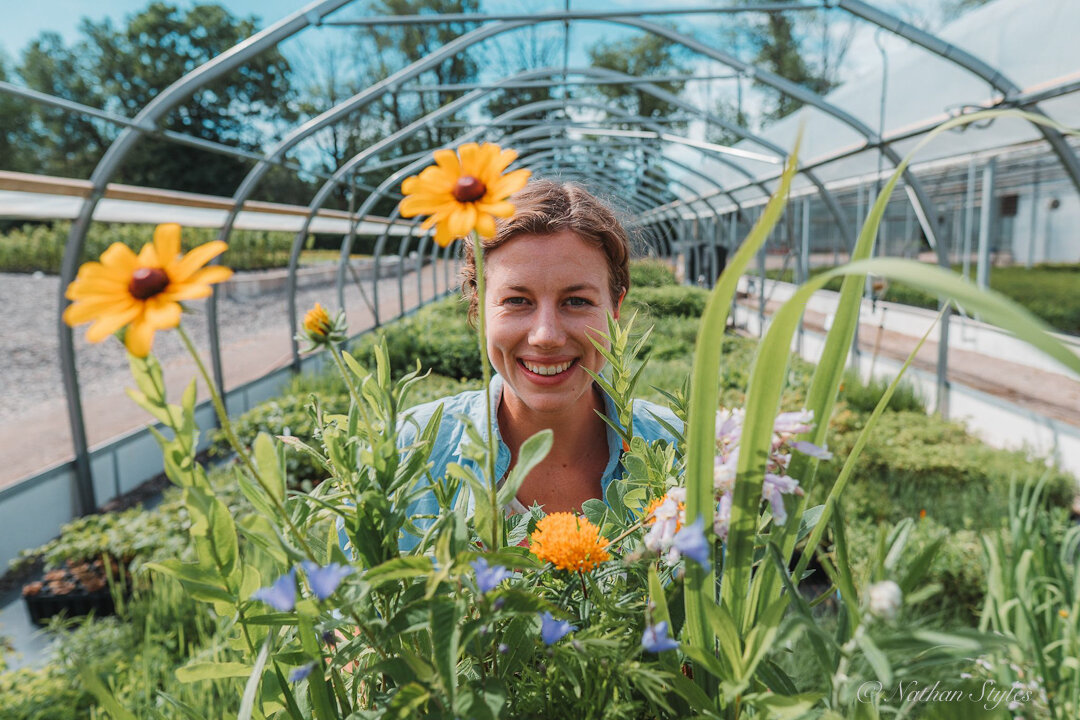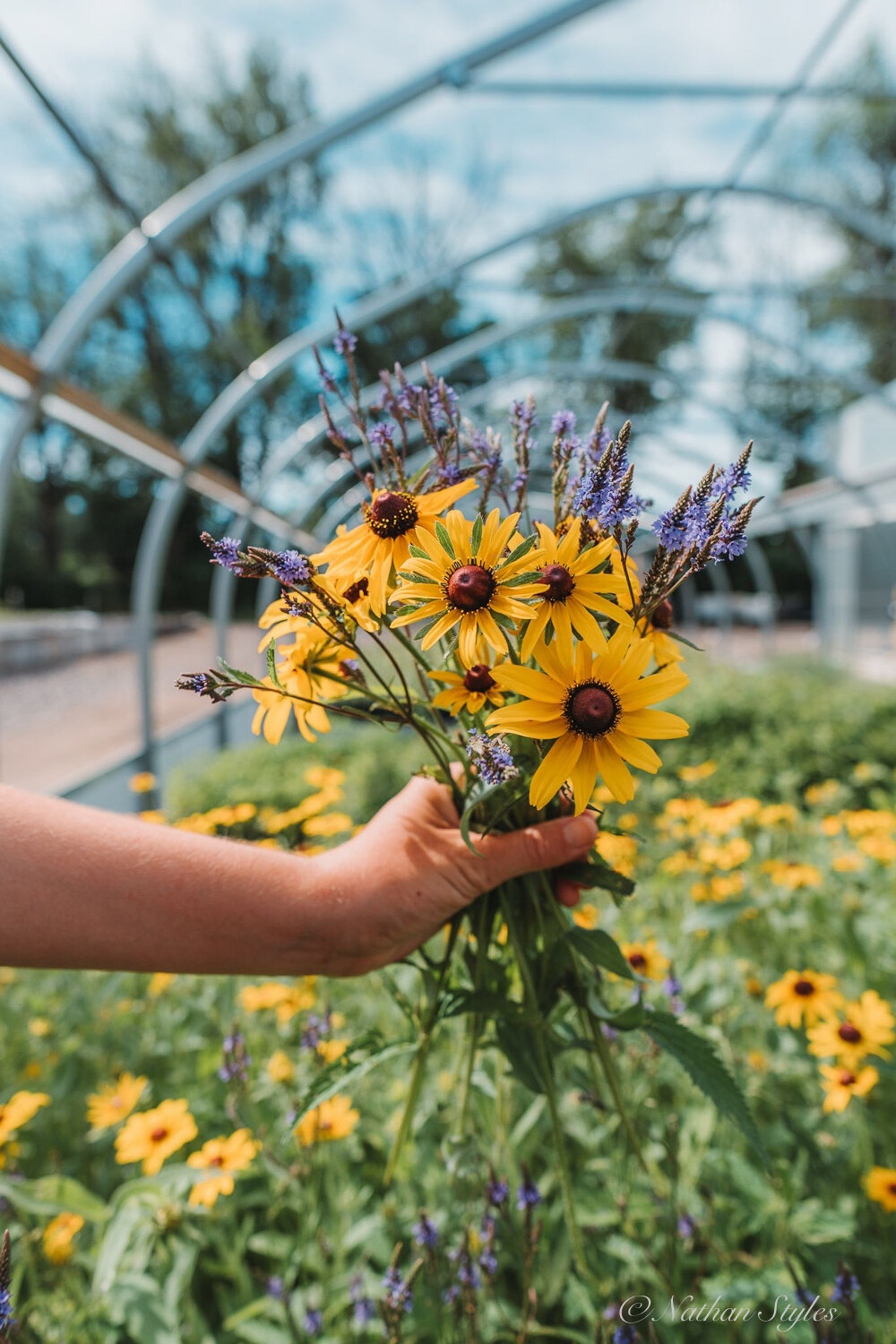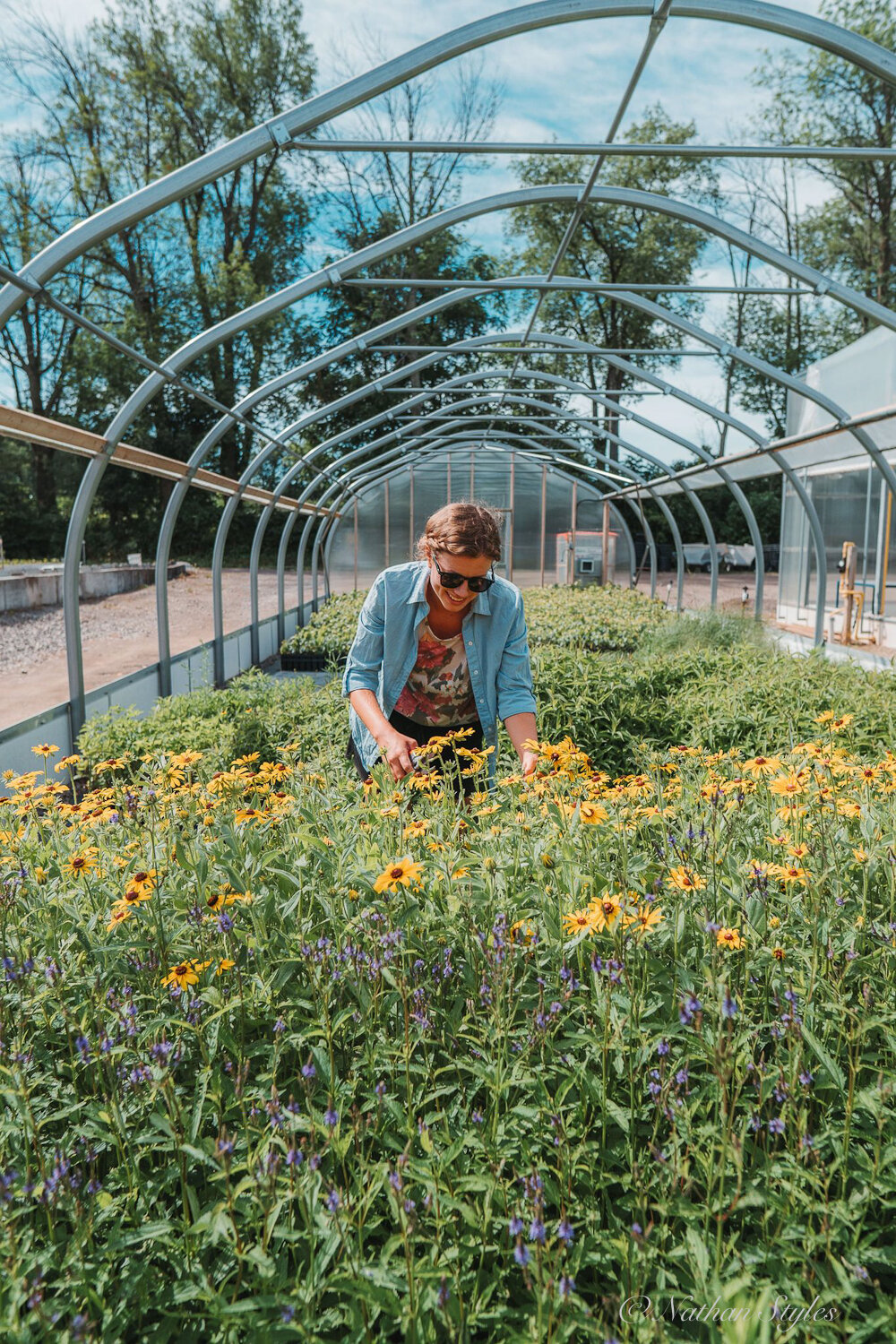The Garden Awakening will change the way you garden
Mary Reynolds’ The Garden Awakening is an important book during these troubled times. It is both a gardening book and a road map we all need to follow into the future. For some it is a treasure map to help them rediscover nature and themselves. For others, it will provide them with a new way of looking at their gardens, their land and their life. Please, click on the link for the full review.
The Garden Awakening
Designs to Nurture our Land & Ourselves
By Mary Reynolds
“If nature is left to its own devices and without imbalances in the ecosystem such as the overpopulation of hungry deer or an infestation of rabbits it will reclaim its territory and become Woodlands once more.”
This might be one of the most inspirational gardening books I have ever read.
It’s certainly not your average how-to gardening book. If you are looking for a typical gardening book, The Garden Awakening might not be for you.
Beautiful illustrations by artist Ruth Evans both on the cover and throughout the book.
But if you are interested in the environment, restoring your garden to a healthy, productive space and/or creating a Woodland naturalized garden, then you owe it to yourself to spend some time with Mary Reynold’s book, The Garden Awakening, Designs to Nurture our Land & Ourselves and her vision for the future of gardening.
Since this writing, Ms Reynolds has published a second informative book titled We Are The Ark. This follow to The Garden Awakening, expounds on her successful approach that each garden can be a small Ark in a world for where wildlife desperately needs our help.
For more information on using native plants to restore your garden, take a moment to check out my article on the importance of using native plants in your garden. For full post go here.
An important book at a crucial time
The Garden Awakening is an extremely important book for the time. It’s a reminder that we are destroying the very land we depend on for survival. It’s a reminder that the world we live in cannot continue to absorb this abuse and not unleash its own fury back upon us.
And, as climate change continues to change the world we live in, it’s important that we as inviduals take action to stem the tide.
But Reynolds offers solutions to problems that we need so desperately in these trying times.
Her inspirational book actually provides a roadmap for anyone interested in doing their part to not only protect but revive the land they live on. Along the way, she provides a “treasure map for finding your way back to the truth of who you are.”
“We are the ark” movement
Be part of the movement
Her movement, “We are the Ark” is bringing together like-minded people around the world to join her in creating a healthy environment, one garden at a time. It provides an important stepping stone to a better environment, a healthier garden and a more optimistic future.
“Gardens were like still-life paintings; controlled and manipulated spaces.... somehow, somewhere along the way gardens had become dead zones.”
If Ireland’s feisty Mary Reynolds is not familiar to you, I suggest you watch a movie called Dare to Be Wild, which maps her journey from an outsider to a gold-medal winner at the prestigious Chelsea Flower show. The movie used to be available on Netflix, but I notice that it is no longer available. (The link provided above will take you to Amazon where it is available as a DVD.)
The movie led me to her book, her vision and her unique and thoughtful approach to gardening.
To purchase the Mary Reynold’s book, here is a link from the excellent book seller Alibris: Books, Music, & Movies for The Garden Awakening. Below is the Amazon link.
For those without access to the movie, take note; Mary Reynolds was the youngest garden designer to win the highly coveted gold at the 2002 Chelsey Garden Show. That alone should be enough to interest you in her book.
Reynolds doesn’t waste much time getting to the point. She describes a vision of her embodying a crow flying over the landscape where she comes across a woman (let’s call her Mother Nature) in a forest clearing. She is then swept up high into the heavens and when she finally wakes up she comes to the instant recognition that she “shouldn’t make any more pretty gardens.”
She realizes that she must be guided by the natural world, rather than pure beauty, in her work as a garden designer.
Unlike nature, “gardens were like still-life paintings; controlled and manipulated spaces.... somehow, somewhere along the way gardens had become dead zones,” she writes.
Being in harmony with nature
The revelation that she was “failing to work in harmony with nature,” eventually leads her to unveil 5 garden design ideas in a system aimed at helping anyone, including gardeners, connect with nature.
Throughout the book, Reynolds returns to her Irish roots and uses folklore to help explain her spiritual views of nature and gardening.
Of particular interest to Woodland gardeners, Reynolds explains that all land strives to become a mature Woodland and the job of the gardener is to allow the land to become what it desires to be.
She also encourages people to design their own gardens and provides a road map in five chapters. Each chapter slowly opens up the world of garden design and includes suggestions for intimate garden areas; a nighttime place, a praying place, a gathering place…
In another chapter, she talks about designing with the patterns and shapes of nature. This all leads to a chapter encouraging readers to put their garden design concepts onto paper, including several illustrations and designs that help readers visualize their garden design ideas.
Throughout the book, Reynolds offers suggestions on plants, although these plants might not all be appropriate for all garden zones.
The book wraps up with a chapter on Forest Gardening, a style of gardening that seems to be once again gaining in popularity and importance.
Many would say that Forest gardening is a logical extension to Woodland gardening. It involves producing food by developing a multi-tiered Woodland where berries, nuts and root vegetables are encouraged to be grown.
Her forest garden includes seven layers beginning with the upper canopy including a shrub layer, a layer for herbaceous plants a ground cover layer, an underground layer and finally climbers or vines.
This is a book every Woodland gardener will enjoy and learn from. It’s a book that should be required reading for all gardeners at a time when our futures may well depend on it.
If you are interested in having Mary Reynolds help design your garden virtually, be sure to check out my post on Ms Reynolds’ virtual makeovers.
What are the benefits to growing native violets?
Our common native violets are important wildflowers that need to have a place in our gardens and even in our grass.
Native butterflies depend on our common violets
In our garden, common native violets are welcome wildflowers.
Whether they are growing happily in the grass or adorning wild areas of the garden, common violets will always have a home here.
I extol the virtues of commonplace violets due to their critical and pertinent role within our local ecosystems. Their vivid purple, yellow and white blooms are a delightful signal that spring has arrived, leading the way for other native wildflowers, which will continue to flourish right through to the summer.
But it is not just their charming appearance that makes them essential; it is their ecological significance that truly stands out.
These little plants serve as host for many butterfly species, particularly the fritillaries, as well as a range of essential insects. This interaction guarantees the perpetuity of these species. Recognizing the significance of this relationship is vital and therefore we should resist the impulse to remove these wildflowers from our yards.
Their presence is not just an aesthetic addition to our landscapes; it is a fundamental factor in ensuring the survival of our native wildlife.
Moreover, I must highlight that violets are not just a symbol of spring. They bloom from the early days of spring continuing into the colder months, bringing colour and life to our gardens even in early winter. This makes them not only a visual treat but also a constant source of sustenance for a variety of local insects and pollinators.
Rather than eliminate them, we need to applaud and appreciate the remarkable roles of such ordinary plants like the violet, in contributing to the biodiversity of our ecosystems.
Our common native violets are host plants to many charming fritillary butterflies such as the Great Spangled, the Aphrodite, Atlantis, Silver Bordered, and Meadow fritillary butterflies.
What does it mean to be a host plant mean, and why does it matter?
Host plants play an integral role in the sustenance of our indigenous wildlife. They are crucial in providing nourishment for the larvae of butterflies and other insects.
The colourful and captivating butterflies we so cherish are in fact bi-products of these caterpillars who, in their initial stages, rely heavily on these host plants for their sustenance and habitat.
However, the fascinating metamorphosis from a caterpillar to a butterfly is a process that requires a bit more elaboration. During this transformation, the host plants serve as the primary source of food and nutrients for the caterpillar. They also provide the much needed sanctuary for these creatures to grow and develop safely.
A prime example of a host plant would be common violets, these nurturing plants are known to host a variety of butterfly species.
In order to conserve these vital host plants, one simple practice we can adopt is to discourage the unnecessary weeding of our gardens and lawns. By preserving these plants, we provide more than just a home for caterpillars, we are supporting the lifecycle of butterflies, and in turn, the vibrancy and balance of our native fauna and flora.
The critical role host plants play is undeniable. Not only do they foster growth and development for caterpillars, they are instrumental support systems to our indigenous fauna and flora.
Where are common violets found?
The common blue violet (Viola sororia), also known as common meadow violet, purple violet, woolly blue violet, or wood violet grow in a wide range across eastern North America in the United States and Canada in areas ranging from zones 2 through 11.
A similar violet (Viola odorata) is a species in the viola family, native to Europe and Asia. Commonly known as wood violet, sweet violet, English violet, common violet, florist’s violet, or garden violet, this small herbaceous perennial has been introduced into North America and Australia.
Although our common blue violet are best known for their spring blooms, common violets can grow from spring into winter, making them extremely important wildlife plants.
There exists a wide variety of 35 Viola species throughout Canada, from the Atlantic to the Pacific Ocean, extending up to the northern treeline. These include varied habitats such as forests, prairies and marshlands. A notable species is the green violet (H. concolor) frequently seen in southern Ontario.
As we said earlier, these Viola species play a crucial role as host plants to a myriad of fritillary butterfly species. Preserving these plants will significantly aid in the survival of our native wildlife, particularly our cherished butterfly species.
Within the realms of the United States, the humble common violet has embedded itself in the core of its native ecosystems. The plant serves as a host to an array of Fritillary butterflies. The importance of its preservation is paramount. The robust flower thrives in zones 2 to 11, surviving from spring to winter, acting as a reliable food source for larvae. As such, it is imperative to reorient our gardening approach from removing these perceived ‘weeds’ to fostering these foundational aspects of our biodiversity.
Native plants in the Pacific Northwest
Gardening with Native Plants of the Pacific Northwest should be a garden bible for anyone lucky enough to call this area home.
How to best use native plants in your garden
The native plants of Vancouver Island and the surrounding areas in the Pacific Northwest forever changed the way I see gardening today.
Two visits to the island and the mainland way back in the 1980s opened my eyes to the beauty of a truly natural landscape, and it was that lush landscape that has burned itself in my memory of what a garden should strive to attain.
Unfortunately, we gardeners in the northeast can only dream of the lush gardens possible in the Pacific Northwest. This thing called winter gets in the way of our dreams of lush, year-round gardens full of unusual native plants that attract four –count them four – species of hummingbirds: Anna’s, Black-chinned, Calliope, and Rufous. Of the four species, Anna’s Hummingbird is the only one found year round in the Puget Sound region of western Washington.
Four species of hummingbird is reason enough to want to call the Pacific Northwest home. But there’s so much more, not the least the abundance of native plants gardeners have access to in the creation of their gardens.
This is where the Gardening with Native Plants of the Pacific Northwest (Third Edition) comes into play.
Gardening with Native Plants of the Pacific Northwest’s more than 370 pages of pure native plant gold is a treasure trove of information, inspiration and motivation for any gardener lucky enough to call this area home. Packed with 948 full-colour images showing the native plants – many in their habitats – as well as in the garden, authors Arthur R. Kruckeberg and Linda Chalker-Scott deliver in almost every way.
Even the introduction answers many of the questions most gardeners new to native plants want answered.
“The key to garden success (using natives) is the compatibility of a plant to its place in the garden,” they write. “This means that natives can easily coexist with exotics in the garden as long as the requirements of the plant – and the desires of the creator of the plantings – are met.”
A garden entirely made up of native plants may be most appropriate in a woodland or semi-wild setting in suburbia, in rural areas, or at the vacation cabin by the sea or in the mountains. And there is often good reason to emphasize natives in such places,” they write, before going on to show examples of dunes in Oregon, a subalpine meadow on Mount Rainier, a seashore at Cape Flattery, in Washington state.
“Planting salal, oceanspray, madrone, and huckleberry in a westside scene that contains Douglas fir can restore the beauty of a natural woodland setting. Once established, the native garden becomes a nearly self-sustaining, low maintenance setting.”
The book is published by the outstanding, garden-focused Canadian publishers Greystone Books. Visit their website at Greystonebooks.com for a complete selection of their books, including some of the most highly sought after gardening books.
Other Ferns & Feathers’ posts based from Greystone books include: The Hidden Life of Trees, The Heartbeat of Trees, The Hidden Kingdom of Fungi, Seed to Dust.
The book can often be purchased on the used market at Alibris Books on-line sellers. In this link there is a copy of the book for less than $4.00.
Still in the introduction to their book Gardening with Native Plants of the Pacific Northwest, the authors use Herbert Durand’s suggestions in his book Taming the Wildlings, to help readers understand where they can use natives. The result is, of course, almost anywhere but here’s the suggested list:
The small home garden: Perfect for defining boundaries, in borders and groups of shrubs. These natives need to be chosen with special care; matters of scale, quality of colour and texture, and habitat preference are particularly important in the small garden.
Suburban and rural places: Natives can restore “the original charm of neglected woodlands and develop the latent beauty of any forested area.”
The seashore, woodland, or mountain retreat: Natives are ideal for use in lands surrounding vacation homes in areas that were once wild. “The very purpose of a house in the wilds cries out for wildings.”
Parks, open spaces, and Estates: The authors call on more native plants in public gardens and large private estates as well as small parks.
Wildlife sanctuaries: Native plants have long been known to have a close relationship with wildlife and are vital for their future existence. “Plants from the surrounding wils for use in the re-created wildlife sanctuary should emphasize the attributes of shelter, nesting sites, and food. Most native trees and shrubs qualify without question; even though some might not have edible fruit or seed, they surely harbor insects and the like.”
Highway platings: the authors point out the success that has already been achieved with native plantings along highways and call out for more experimentation with different plants, trees and shrubs as well as a focus on rest areas that can be “best reclaimed by planting natives.”
Commercial, Industrial, and public sites: natives can be used not only to reclaim some of these areas but to screen their unsitely views.
Ecological restoration with natives: the authors point out that “Today, land management agencies and private landowners alike have turned ecological restoration into a thriving pursuit.” More ecological restoration using natives is needed in the future.
Icons help readers identify planting locations
What else makes the book particularly useful? How about icons used for each plant that identifies where it should be planted – drylands, rock gardens, seashore, meadows and prairies, shade, sun, restoration, wetlans and, of course, woodlands – all have their own icons.
Chapter by chapter of excellent information for plant enthusiasts
The authors actually spell out in the introduction how they tackle the task ahead beginning with a dicussion of the science of gardening, starting with the ecology of native plants in their natural environments.
In chapter 2, they provide practical advice for choosing, planting, and maintaining native plants that are best suited for your particular environment. (What more can a beginner native plant gardener ask for?) There are also tips for managing garden invasives.
Chapter 3 tackles the enormous task of providing descriptions of native trees, shrubs, herbaceous perennials, grasses and even some annuals worth considering.
If you’re a gardener in the Pacific Northwest you will want to tap into the authors’ incredible native plant knowledge that is covered in this book.
For more Ferns & Feathers articles on Gardening in the Pacific Northwest, you will want to check out the following posts:
• Native plant plan for a front garden in Seattle
• Understory Gardens aims to bring more sustainable gardens to the west coast
Ferns & Feathers readers already know the importance of using native plants in our gardens. This book simply emphasizes that importance in a part of Canada and the United States that is already inherently blessed with a gardening lifestyle that begs us to protect and restore not only the native plants, but the wildlife that depends on it for survival.
Gardening with Native Plants of the Pacific Northwest is an essential resource for gardeners to explore how to best use the natural gifts they are provided on a daily basis.
• If you are considering creating a meadow in your front or backyard, be sure to check out The Making of a Meadow post for a landscape designer’s take on making a meadow in her own front yard.
If you are on the lookout for high quality, non-GMO seed for the Pacific North West consider West Coast Seeds. The company, based in Vancouver BC says that “part of our mission to help repair the world, we place a high priority on education and community outreach. Our intent is to encourage sustainable, organic growing practices through knowledge and support. We believe in the principles of eating locally produced food whenever possible, sharing gardening wisdom, and teaching people how to grow from seed.”
About the authors:
Arthur R Kruckeberg (1920-2016) was professor of botany at the University of Washington for nearly four decades. He cofounded the Washington Native Plant Society and authored The Natural History of Puget Sound Country and Geology and Plant Life, as well as prior editions of Gardening with Native Plants of the Pacific Northwest.
Linda Chalker-Scott is associate professor of horticulture and extension specialist at Washington State University . She cohosts the Garden Professors blog, and her books include The Informed Gardener, The Informed Gardener Blooms Again, and How Plants Work.
Richard G. Olmstead is prefessor of botany at the University of Washington and curator at the University of Washington Herbarium, Burke Museum.
The book is published by the outstanding, garden-focused Canadian publishers Greystone Books. Visit their website at Greystonebooks.com for a complete selection of their books, including some of the most highly sought after gardening books.
Understory Gardens: Focus on sustainable west-coast landscapes
Alexa LeBouef Brooks is a west coast garden designer looking to convince people that we need a more sustainable approach to garden design in the face of climate change.
Garden designer’s favourite plants for the natural garden
Alexa LeBouef Brooks is changing the world around her, and she’s not alone.
Like so many other people her age working to protect the earth, Alexa recognizes that the environment is at a critical juncture – either something is done soon or we risk losing much of what we have in the not-too-distant future.
The 33-year-old landscape designer is fully aware of the environmental challenges that lay ahead for future generations and the precarious path humans could be facing in the future.
Alexa is part of a new breed of progressive landscape designers taking it upon themselves to reject traditional garden designs and embrace a new, more sustainable garden style – at least in the town she calls home. Her Pacific West-Coast designs specialize in developing a more sustainable, woodland or naturalized gardening approach – hence the name Understory Gardens.
(For more on West Coast garden designs and native plants, be sure to check out my post on Vancouver-Island-based Satinflower Nurseries, Native plants find a home on Vancouver Island.)
Also, if you are interested in native plants, be sure to check out my post on Gardening with Native Plants of the Pacific Northwest.
That love of woodland and natural garden designs has its roots in her childhood.
“Growing up in the Pacific Northwest my parents often brought me to the mountains or the river and seasides to go camping and exploring. From a young age I found myself in awe of our natural beauty,” Alexa explains.
“I think the development of my style of gardening grew from my desire to always be connected to the natural beauty I spent so much time in as a child. Although I embrace multiple garden aesthetics, the native and natural style of gardening keeps me rooted in the land I call home.”
Inspired by the work of Irish landscaper, author Mary Reynolds
Although her love for natural gardens has its roots in her childhood, Alexa owes much of her garden design approach to the work of famed Irish landscape designer and author Mary Reynolds who, rejected the traditional landscape design methods to focus mainly on restoring the land and habitats. She is founder of the environmental movement wearetheark.org, that encourages gardeners around the world to create more natural, sustainable gardens through the use of native plants.
If you are interested in getting more on the work of Mary Reynolds and her book Garden Awakening, you might be interested in my article Garden Awakening will change the way you garden.
Another landscape designer that has shaped Alexa’s work are the more classic designs of Miranda Brooks.
Although her passion is landscape design, Alexa’s real challenge is about combining beautiful, but ecologically sustainable landscapes for her clients.
Her long list of achievements has helped lead her to starting landscape design in 2018.
Vice chair and landscape designer for the Edmonds Architectural Design Board
Completed Edmonds Community College courses in specialty pruning and design
Member of the Plant Amnesty Gardener Referral List
9 years experience with organic Agriculture and animal husbandry
8 years experience with ornamental Horticulture
Plant Amnesty: Focus on maintaining ecology and environment
Through the excellent work of the Seattle-based, non-profit organization called Plant Amnesty, many of Alexa’s clientele are already aware of the importance of protecting the ecology of the area.
The organization’s focus is to educate the greater Puget Sound area on proper pruning, responsible gardening and land preservation.
“I find that most clients who seek gardeners and designers through Plant Amnesty have a shared interest in maintaining the integrity of our delicate ecology and environment. Even outside of my Plant Amnesty clients, when a potential client sees my business name and website, they are anticipating a particular style of gardening from my work. Most are open to the suggestions I make when designing their gardens and plugging in additional plants to an existing design as well as garden maintenance methods.
“The more I learn about the benefits of using strictly native plants, the more I turn to them,” Alexa LeBouef Brooks.
Designer is turning gardens into works of art
Alexa’s background in fine art certainly helped prepare her for the challenge
“In 2012 I received my bachelor’s degree of Fine Arts and Art History and pursued the art world in my twenties. I have always had my hands in the soil for as long as my memory serves me. I think that is why I enjoy art and art making so much, is because there is a tactile element that requires the use of hands and creativity, while getting a little messy along the way,” she explains.
“Somewhere along the journey I started getting interested in the design element of landscaping. I could use my creative skills on paper to transform beautiful outdoor living spaces. Landscape design has become the perfect marriage of all my interests in the art and landscaping world.”
Along the journey, she is playing a vital role in saving the natural environment and landscapes in her home town of Edmonds, Washington just outside Seattle, where she is the vice-chair for the Edmonds Architectural Design Board.
“I believe all homeowners should be stewards of their land, to preserve and maintain the diverse ecology of surrounding plants and species,” she explains.
Alexa is doing her part to help guide her clients along this path. Education plays an important role in her relationship both with her clients and the environment she creates for them.
“My design process includes an educational element in which I teach my clients about individual plant and seasonal needs. I like involving my clients in the design process because it inspires them to learn more about maintaining our natural environment, and their personal garden is the perfect tool to achieve this.”
I believe the natural landscape of the Pacific Northwest stirs inspiration in people of all ages to maintain its beauty.
She is quick to point out that, “responsible stewardship can also be achieved by creating designs for clients that integrate native and drought tolerant plants as well as plants that attract our resident pollinators.”
Alexa uses her extensive knowledge of the environment and use of native plants to guide her clients.
“I believe the natural landscape of the Pacific Northwest stirs inspiration in people of all ages to maintain its beauty,” she explains.
“It could be as simple as leaving most of the fallen leaves and using it as an attractive mulch for garden beds. Destructive methods include stripping the top layer of mulch and soil using powerful gas blowers and excessive raking. Not only does this negatively impact butterfly larvae populations as well as leave little nesting materials and berries for birds, but you are left with bare soil that does not retain moisture and nutrients for our increasing summer temperatures in the Pacific Northwest.”
Climate change: Awakening a new style of gardening
Alexa is the first to admit that climate change is awakening homeowners, who may have once dreamed for a certain style of garden, into realizing that a new, more sustainable approach to gardening is now needed.
“In the midst of our climate crisis and environmental destruction, Washington’s winters are bringing in more rain and colder temperatures while our summers are bringing in more drought and higher temperatures. What was a temperate climate is slowly becoming more extreme,” she explains.
“One of the biggest challenges we now face are forest and brush fires. Because of our increasing temperatures in the summer, many landscapers are implementing more California natives. The drawback is not all California natives thrive in our decreasing winter temperatures. So, instead of trying to control a shift in our plant hardiness zones, we must adapt and allow our plants to adapt. This, of course, comes with trial and often error. More and more clients are requesting drought tolerant plants in their gardens, and I am happy to oblige.”
(Be sure to check out the full story of Alexa’s Seattle-area garden design, including a list of native plants used in the design.)
Alexa’s favourite Understory trees for Pacific Northwest gardens
Acer circinatum (native Vine Maple) for its spectacular fall color and interesting structure.
Cornus nuttallii (native Pacific Dogwood) for its cascading branching and delicate flowers.
Cornus controversa 'Variegata' (giant Dogwood or Wedding Cake tree) for its gorgeous cake-like layers of branches and delicate variegated color.
Cercidiphyllum japonicum (Katsura) for its fall color and fragrance of leaves that smell like burnt sugar.
Magnolia macrophylla (Bigleaf Magnolia) for its broad leaves that provide a tropical feel.
Alexa’s favourite ground covers for Pacific Northwest gardens
Cornus canadensis (native Bunchberry dogwood) for its seasonal interest from flowers, to berries, to multi color leaves. (For more information on our native bunchberry be sure to check out my story here.)
Frageria chiloensis (native Beach Strawberry) for its fruit, flowers and evergreen interest.
Ophiopogon 'Nana' (Dwarf Mondo) for its hardy evergreen blades that can withstand heavy traffic.
Erigeron glaucus (native Seaside Fleabane) for its spring through fall blooms.
Erigeron karvinskianus 'Profusion' (Fleabane) for its delicate white and pink flowers.
Alexa’s favourite Shrubs for Pacific Northwest gardens
Vaccinium ovatum (native Evergreen Huckleberry) for its edible berries and sculptural element.
Ribes sanguinium (native Flowering Currant) for its vibrant flowers.
Arctostaphylos 'Howard McMinn' (California native Manzanita) for its red bark, bell shaped flowers and silver leaves.
Picea abies 'Pusch' (Norway Spruce) for its hot pink cones and pin cushion shape.
Rosa nutkana (native Nootka Rose), for its rose hips and just to add a bonus, Corylopsis spicata (Winter Hazel) for its winter flowers.
Incorporating natives and non-natives in the landscape
While Alexa strives to incorporate more and more native plants in her landscapes, clients needs often dictate the use of non-natives. In many cases, non-natives are already well established in the gardens.
“My designs meet the clients where they are, and I incorporate many different aesthetics that cater to the clients needs and desires. That being said, I will always see myself as a student in anything I pursue. The more I learn about the benefits of using strictly native plants, the more I turn to them, explains Alexa.
(If you are looking for more information on the importance of using native plants in our gardens, check out my comprehensive post: Why we need native plants in our gardens.
“There is a list of plants that I strictly avoid in our area. These include invasive species that drive out beneficial pollinators, degrade habitat, cause disturbance in the food web, and even chemically alter soil biology. This doesn't even cover genetically engineered plants which is an increasing technology being utilized that has known and unknown consequences. The most important act we can do as gardeners and landscapers is educate our clients on what is appropriate for our area and be cognizant of our watershed, soils and precious species.”
Alexa gives much of her success and knowledge of plants to her friend Bre Moravec.
“My friend and fellow gardener Bre Moravec, owner of Gaia Gardens is the perfect example of this. She goes the extra mile to educate herself to educate others. Because of Bre’s passion she has mentored me and other gardeners, teaching specialty pruning methods and in depth plant species knowledge and identification.”
How Covid changed the way we garden
When asked how important she thought it is for homeowners’ physical and mental health to surround themselves in a landscape they love, and how rewarding it is for her when her clients fall in love with their new gardens, Alexa responded: “It has always been important, but ever since the Covid pandemic it is more important than ever.
“There have been studies that time spent outside, specifically in a more natural setting improves sleep, lowers overall inflammation, enhances blood flow, repairs cells and tissues, and improves electrical activity in the brain. How amazing would it be if we can access this from our backdoor! I love helping my clients transform what was once an uninviting space into a space in which they and their families can retreat to, where it is safe because they know chemicals aren't being used, and they can enjoy all the benefits and pleasures that our seasons bring.
(If you are looking for more information on the importance of being outdoors in nature and in our gardens, you will want to check out my post Why kids need more nature in their lives.
And what does Alexa love most about her job?
“My relationships with my clients and time outside bring me most joy. The most difficult hurdle about this job is probably Washington’s weather. We’re known to get a lot of rain here!
For more information, or to contact Alexa about landscaping, visit her website at Understory Gardens.
If you are looking for more inspiration, you may be interested in Gardens of the Pacific Northwest.
If you are on the lookout for high quality, non-GMO seed for the Pacific North West consider West Coast Seeds. The company, based in Vancouver BC says that “part of our mission to help repair the world, we place a high priority on education and community outreach. Our intent is to encourage sustainable, organic growing practices through knowledge and support. We believe in the principles of eating locally produced food whenever possible, sharing gardening wisdom, and teaching people how to grow from seed.”
Sumac: First signs of fall in the garden
Staghorn Sumac is an excellent addition to the garden both to add architectural interest and provide a food source for birds and animals.
Important food source for birds and other wildlife
It’s early October and the native Sumac is already lighting up the roadsides and welcoming the first signs of fall in the woodland garden.
Along roadsides and escarpments, where this fast-growing native shrub or small tree (grows to about 30-feet high) gets plenty of sun, Sumac lights up with brilliant oranges, yellows and reds.
It’s often the first plant nature photographers focus on when in search of early colour in the fall landscape, and it’s a perfect addition to the woodland garden. Sumac has compound, serrated leaves that are a bright green in summer before taking on its fall cloak.
How did Sumac get its name?
There is no missing the velvety bark on the branches that cover Staghorn Sumac. This velvet resembles the velvet that covers the antlers of male deer (stags) throughout the summer, earning Sumac the name “Staghorn”.
There are more than 30 varieties of Sumac in North America with more native varieties in Europe, Africa and Asia.
Is Sumac a food source for birds and other wildlife?
Not only is Staghorn Sumac (Rhus typhina) an incredibly colourful addition to the woodland, its fall berries, that grow in large clusters atop the shrub’s branches, are also a very important source of high-value food for birds especially migrating birds.
Staghorn Sumac puts out small greenish-yellow flowers that attract pollinators. They grow in the shape of a cone in spring and become the reddish-haired fruit clusters as summer turns to fall.
These hearty fruit clusters, that often remain on the plant well into winter, are vital resources for hundreds of bird species including our backyard favourites like Cardinals, Gray Catbird and a host of woodpeckers ranging from the impressive Pileated to the small Downy and larger Hairy woodpeckers. Add to that list the American Robin together with other thrush species. In a more wooded natural area, don’t be surprised if it attracts Ruffed Grouse and wild Turkeys.
As an added bonus these plants are deer resistant.
Staghorn sumac is dioecious, meaning that it has individually male and female plants.
These shrubs/small trees are extremely hardy, and are both drought and salt tolerant. They prefer a sunny location and dry to moist soil and will not tolerate shade or wet soil. Use these fast growers as an erosion control plant if you have problematic areas.
Where I live, The Niagara Escarpment is the dominant geological feature that cuts through the landscape. The Staghorn Sumac lights up the many cuts through the escarpment and turns the roadsides into sparkling jewels at certain times of day.
Staghorn Sumac is native to the more southern half of Ontario, and eastward to the Maritimes.
Sumac species include both evergreen and deciduous types. They generally spread by suckering, which allows them to quickly form small thickets, but can also make the plants overly aggressive in some circumstances.
There are usually several varieties available at nurseries, but this attractive native is probably all you will need.
Other forms of Sumac
At one of my local nurseries there are three Sumacs listed including the Staghorn Sumac. The others are Fragrant Sumac, and a dwarf variety of fragrant sumac called fragrant gro low Sumac as well as Cutleaf Smooth Sumac.
Cutleaf Smooth Sumac (Rhus glabra Laciniata) is a smaller hardy shrub (hardiness zone: 2B) with finely cut tropical-looking leaves that add texture to the garden. Grown primarily for its ornamental fruit, and its open multi-stemmed upright spreading habit. It lends an extremely fine and delicate texture to the landscape and can be used as a effective accent feature. Click on the link for more information on the Cutleaf Smooth Sumac.
Gro Low Sumac is described as low growing and compact shrub with interesting foliage turning brilliant colors in fall and bright yellow flowers in spring. Makes an excellent ground cover as it tends to sucker, filling in areas quickly. Does well in shade. Click on the link for images and more information on the Gro Low Sumac.
Fragrant Sumac is described as a rugged and durable medium-sized shrub with interesting foliage turning brilliant colors in fall and bright yellow flowers in spring. Tends to sucker, forming a dense spreading mass, attractive for a garden background or for naturalizing, good in shade.
Plant Native Sunflowers for the bees, butterflies and the birds
Our native woodland sunflowers are not only beautiful but important plants for native bees, birds, butterflies and other insects.
A grouping of Woodland sunflowers in their prime light up the edge of a forested area. The sunflowers are a magnet for native bees and butterflies and their hollow stems provide winter nesting habitat for native bees.
Woodland sunflowers are native to Ontario and parts of the United States
It’s not just good looks that make our native sunflowers a must for the woodland garden. Their popularity among butterflies, native bees, birds and other insects makes these tall shrubby plants a popular choice for wildlife gardeners.
In our garden, the multi-flowering, bright yellow Woodland sunflowers (Helianthus divaricatus) grow at the back of the property alongside other meadow-style plants such as Black-eyed susans, New England and Wood Asters. They seem happy to grow beneath our crabapples where they receive mostly dappled afternoon and late afternoon sun.
If you are looking for more information on growing native flowers, you might be interested in reading my comprehensive article: Why we should use native plants in our gardens.
The Woodland sunflower is native to the eastern United States and Canada and can be found along roadsides and on the edge of woodlands and forested areas.
A large grouping of Woodland Sunflowers looking their best backlit against a dark background.
Hardy in zones 3 to 7, they work beautifully planted along woodland edges together with Black-Eyed Susan, Scarlett and Spotted Bee-Balms, and goldenrods. They will thrive and spread quickly in full sun but also do well in partial shade.
Generally these prolific bloomers, that can grow up to 6-feet tall, can be found growing naturally in dry, open woodlands, making them perfect for our woodland gardens.
The tall stems support the 2-inch (5cm) yellow flowers that sport 8-15 petals and a darker yellow centre disk. The flowers bloom from early summer to fall. The self-seeding sunflowers spread by rhizomes accounting for the large colonies often seen growing along forest edges and roadsides.
Besides dividing the clumps every 3-4 years to control spread and maintain the plants’ vigour, these Sunflowers are generally low-maintenance with no pest or disease issues.
A single woodland sunflower growing in our garden. You can see the buds of more sunflowers preparing to bloom.
Our deer have no interest in the woodland sunflowers probably because of the plant’s tough stems and rough leaves that make them less desirable.
Even Walnut trees are no match for the woodland sunflowers.
Without a doubt, they are a favourite of bees and butterflies where they act as a host plant for more than 73 varieties of butterflies and moths as well as a number of other insects that depend on the plant.
In turn, the caterpillars and insects that use the sunflowers as host plants, attract birds that depend on the insects as a source of food.
The Painted Lady, silvery Checkerspot and Gorgone Checkerspot are just three butterflies that use native sunflowers as a host plant for their larvae.
Birds and small mammals can often be seen eating the seeds right off the fading flowers.
Our native sunflowers are also an important plant for native bees that use the plants’ hollow stems for nesting. It’s important not to cut down the plants after flowering to give native cavity nesting bees a safe, warm place to overwinter their larvae. Leave the long stems in place at least until late into spring.
More native sunflowers
• Pale-leaved Sunflower (Helianthus Stromosus) grows to just 4 feet, in sun to part sun conditions in average to dry sandy loam.
• Other native sunflowers include Giant Sunflower (Helianthus giganteus) that grows up to 10 feet in sun to partioal shade in sandy loam.
If you are on the lookout for high quality, non-GMO seed for the Pacific North West consider West Coast Seeds. The company, based in Vancouver BC says that “part of our mission to help repair the world, we place a high priority on education and community outreach. Our intent is to encourage sustainable, organic growing practices through knowledge and support. We believe in the principles of eating locally produced food whenever possible, sharing gardening wisdom, and teaching people how to grow from seed.”
Native Goldenrod: Fall’s golden gift to wildlife gardeners and photographers
Goldenrod blooming in our gardens and along roadsides is a sure sign that fall is not far off. These are important native plants for a host of bees and butterflies that depend on the plants for late summer, early fall food sources.
Goldenrod might be the best addition to your fall garden
It might be common in your area along highways and open fields, but don’t underestimate the benefits of goldenrod in your garden.
This structural plant is not for the weak of heart. Mine stands more than six feet high, stretching up to the sky and, like a neon sign along a deserted highway, announces to every monarch, swallowtail, bee and butterfly in the area to come on over for some good eats. And they are happy to oblige.
In fact, the National Wildlife Federation, pointing to the work of author and biologist Doug Tallamy states: “Tallamy’s studies show that goldenrods provide food and shelter for 115 butterfly and moth species in the U.S. Mid-Atlantic alone. More than 11 native bee species feed specifically on the plants, and in fall, monarch butterflies depend on them for nectar to fuel their long migrations. Even in winter, songbirds find nourishment from goldenrod seed heads long after the blossoms have faded.”
If you are looking for more information on growing native flowers, you might be interested in going to my comprehensive article: Why we should use native plants in our gardens.
Goldenrod growing along the edge of a field bringing its fall early fall colour to the landscape and garden.
Does Goldenrod cause hay fever?
Let’s get this straight right off the bat – goldenrod does not cause hay fever – that would be ragweed. Goldenrod’s pollen is too heavy to be blown in the wind, while ragweed pollen takes to the air at the mere hint of a slight breeze.
It’s also important to note that not all Goldenrod is aggressive in the garden. It’s also probably a good time to note that Goldenrod is available in many forms – all beneficial to local pollinators.
We’ll get into all the different types and which ones might be good for your garden later, for now let’s just admire this native plant for what it is – a pretty, yellow magnet for bees, butterflies and other insects.
I just let it grow in my front and back gardens, not really worrying too much about its aggressive tendencies. But that’s just me.
Flower photographers love Goldenrod in the garden
I find it perfect for photography because, not only do the yellow masses of flowers form a great backdrop for the butterflies, the plants are so tall that I really don’t even have to bend over to get shots of the butterflies, insects and birds. Now, that’s a real bonus.
For more on photographing flowers in your garden, please check out my comprehensive post on Photographing flowers in your garden.
A native bumblebee works the goldenrod in our backyard as it comes into bloom.
Let’s take a closer look at this fall performer.
Goldenrod is actually a common name for a number of plants in the sunflower family within the genus Solidago. In fact, there are around 120 species of goldenrods native to the Americas, northern Africa, Europe and Asia.
In North America, about eight of these species are used as garden plants where they happily set roots in full sun to partial sunny areas in almost any average to below-average, well-drained soil. These herbaceous perennials, that are pretty much pest free, can grow from about 1.5-6 feet tall with a spread of 1-3 feet.
In very fertile soil, you may have to stake them to stop them from falling over when their heavily flowering tops get too heavy to stand on their own.
Although there are a number of hybrids that have a more compact size or flower more heavily, don’t bother with them. Stick to the native varieties and you will likely have fewer problems, help native wildlife more and sleep easier at night knowing you’re not introducing some weird, aggressive new plant to our already compromised natural environment struggling to fend off all the cultivars we have introduced over the years.
Goldenrod fills many roadsides in late summer and fall creating a tapestry of subtle fall colours.
Some native varieties to consider include:
Blue-stemmed goldenrod (Solidago caesia) is one of the more rare Goldenrod species and sports the common latesummer and fall bright yellow flowers. The plant gets its name from its arching purplish stems. This particular Goldenrod is noted because it not an aggressive spreader and produces good cut flowers. Plant it along with Smooth Blue Aster and New England Aster for some spectacular fall colour and pollinator action. Blue Stemmed Goldenrod is hardy from zone 4 through 7.
Autumn Goldenrod (Solidago sphecelata), is the native plant that horticulturalists like to use to make various cultivars from primarily because of its compact size. Autumn Goldenrod tends to stay to within a foot or two with its arching stems and plumes of yellow flowers.
Showy Goldenrod (Solidago speciosa) lives up to its name with its dense clusters of small yellow flowers that grow in a pyramidal- or club-shaped column, sitting atop the 1-5-foot tall reddish stems. It is considered one of the showiest of Goldenrods.
Sweet Goldenrod (Solidago odora) This is a more compact native variety that reaches two- to four-feet. You’ll find it growing naturally in dry, sandy, open wooded areas thickets and ravines. It’s distinguishing feature is its anise-scented leaves and the fact that it is another goldenrod that is considered less aggressive in a garden environment. It is a clump-forming, easy to grow, low maintenance plant that reaches up to 4-feet high and attracts birds, bees butterflies and hummingbirds. It’s found growing naturally in meadows or open woodlands.
White Goldenrod (Solidago bicolor) you guessed it, rather than sporting the typical yellow flowers, this goldenrod likes to show off white blooms.
Wrinklelfeaf or Rough Goldenrod (Solidago rugosa) if you have a moist area in the garden, this three- to five-foot goldenrod is the one to use. It’s distinctive narrow, toothed, rough-surfaced leaves and rough, hairy stems earned the plant its name.
Even as cut flowers the Goldenrod looks great in the garden but be careful, they’ll still be attracting the bees.
It’s time for a little gold in the garden
Just about the time the Black-eyed Susans get into full swing, the Goldenrods come along and add even more gold to our landscapes. They ride that gold right into late fall and are still adding to the beauty of the garden when the snow falls and forms a little blanket atop the browning flower clusters.
Throughout fall, the goldenrod and asters form a perfect combination of warm golds and cool blues along our roads and in meadows creating incredibly textured landscapes throughout Ontario and into the north-eastern parts of the United States.
The activity these plants create among the remaining bees, butterflies, hummingbirds and other backyard wildlife is reason enough to grow our own patches of these lovely native plants. We let ours grow wild where the seeds land, but these plants can be tamed and grown in the back of gardens with great success.
If you don’t already have them in your woodland/meadow garden, put them on your list for next year.
You won’t be disappointed.
Monarda and Cardinal flowers: Native reds Hummingbirds can’t resist
Monarda and Cardinal flower are two native reds Hummingbirds can’t resist. Both have similar tube-like flowers that are perfect for hummingbirds and other pollinators.
A female Ruby-throated Hummingbird works the bright red Bee Balm.
Add these two fine reds to your garden and enjoy the pollinator party
Hummingbirds love reds and the combination of Monarda and Cardinal flowers prove just too irrisistable for them.
You could almost say these native red flowers combine the natural sweet flavours that keep our hummingbirds, bees and butterflies drunk with excitement over the natural abundance of their favourite food. But, that might be pushing the whole red wine thing a little too far.
In our garden, the Monarda begins to bloom in early July and the hummingbirds quickly add them to their daily feeding rounds. I notice, however, that the Cardinal flowers – growing just a few feet away – are not far behind the Monarda. Within weeks the area beside our patio will be a haven for hummingbirds looking to fill up on the sweet natural nectar that these two native reds provide.
If you are looking for more information on growing native flowers, you might be interested in going to my comprehensive article: Why we should use native plants in our gardens.
Our feeders, too, are nearby but given the choice, Hummers will prefer to visit the more natural nectar sources. It’s a good idea to keep this in mind when you are trying to attract hummingbirds and other garden pollinators. Provide their natural food and chances are they’ll visit more often and stay longer.
If using native plants to feed birds and pollinators in your garden interests you, you might want to check out this post on feeding birds on a budget.
Create a natural stage for Garden photography
In addition, the more natural stage for the hummingbirds and butterflies will turn you into a master when in comes to garden photography. There’s nothing like the male Ruby-throated Hummingbird, with its red throat, working the bright red Monarda and scarlet Cardinal flowers. Set up your camera and telephoto lens nearby, grab a glass of your own favourite “red” and just wait for the hummingbirds to arrive. It shouldn’t take long before you are rewarded with some great photographs.
How to grow Bee Balm (Monarda)
Monarda (Monarda didyma) often referred to as Bee Balm is a member of the mint family (Lamiaceae). It joins Wild Bergamot (Monarda fistulosa), that features light lavender to pinkish-white flowers, in the Lamiaceae family that counts 16 species native to North America.
(Go here for my full story on Wild Bergamot )
Monarda can really put on a show. Blooming for up to 6 weeks through mid summer to early fall on tall (up to 4 feet), sturdy square and hollow stems, these attractive perennials have deep roots with shallow rhizomes that account for its spreading habit. It can form large drifts in your garden creating a magnet for hummingbirds and other pollinators including those cool Clearwing hummingbird moths, native bees including bumblebees and, of course, Ruby-throated Hummingbirds.
Like it’s sister, Wild Bergamot, the Monarda flower is actually a cluster of 20 or more flowers (fistulosa) arranged in a round head. The fistulosa (tubular or pipe shapes) make them ideal for long-tongued insects, bees, moths and butterflies to feed on. The plants’ nectar is so sought after by insects that you may notice holes carved out of the flower stems where “tongue-challenged” insects have bore through to get at the nectar.
The plants easily take to a garden and are at home growing along other garden plants, in a sunny meadow-style planting or as specimens in sun, part-shade. Bee balm actually prefers average soil (too rich and you are liable to have tall, lanky plants that don’t hold up well on their own.) Powdery mildew can be a problem if the plants are grown in a wet, humid area without good airflow.
Keep the plants watered but not wet and you’ll be blessed with a great show all summer.
• If you are considering creating a meadow in your front or backyard, be sure to check out The Making of a Meadow post for a landscape designer’s take on making a meadow in her own front yard.
How to grow Cardinal flowers
Cardinal flowers prefer a more wet environment than Monarda so growing them side-by-side will be difficult. Ours grow several feet apart and through hand watering I am able to keep the Cardinal flowers’ feet in more moist soil. Our Cardinal flowers have found a home on the outside edge of a yellow magnolia so also get get less sun than the Monarda plants.
Take a moment to check out my full feature on growing the native Cardinal flower.
Cardinal flowers are considered short-lived perennial but by spreading the seed in your garden, you can enjoy the flowers for years to come. Try placing the spent flower heads atop the soil in a moist part of the garden and you should be blessed with more and more flowers each year. They grow on long spires that can reach up to 4 feet. The flowers bloom as they make their way up the stalk.
In conclusion: Two reds can make a right
Planning your patio should involve more than where the best seating options are, unless, of course, you’re planning the seating options around the best wildlife viewing spots. By making an effort to plant attractive native plants such as Cardinal flower and Bee balm that attract hummingbirds, butterflies and birds, your patio or deck transforms from just a place to sit and entertain, into a place to be entertained.
As summer heats up, I can’t imagine a better time than being outdoors on the patio or deck with my favourite red and a couple of feathered friends dropping by on regular visits.
Solomon’s seal is solid choice for the woodland or shade garden
Solomon’s seal’s arching branches reveal the dangling cream flowers that highlight the spring woodland garden.
Is Solomon’s seal a native North American wildflower?
Solomon’s Seal (Polygonatum), with its elegant arching stems that rise up in clumps through the forest floor, deserves a prominent place in any woodland garden.
This unassuming, eastern North American native plant is completely at home in the woodland or shade/semi-shade garden where it forms patches of attractive plants that spread – always under control – through underground rhizones.
The Graceful arches of the Solomon’s seal reveal the drooping creamy flowers dangling from beneath the leaves.
Like a lovely hosta, Solomon’s Seal is more of a textural plant that might not steal the show with colourful flowers in early spring or even striking berries. Instead, this native wildflower quietly reveals itself in early spring as individual, zig-zag arching stalks that will eventually stretch out to 1-5 ft. long, begin to emerge from the soil. Solomon’s seal has alternate, smooth leaves that grow up to six inches long and about three inches wide with parallel veins. A waxy coating on the round, smooth stems creates a blue-green colour.
How to use Solomon’s seal in the landscape
In the landscape, the Solomon’s seal are best used as an understory plant that helps create height with its arching stems and attractive leaves.
Eventually, clusters of up to one to four white or off-white tubular-shaped flowers dangle beneath the lance-shaped leaves. The flowers grow to about half-inch to 1-inch long.
A variegated form is available that adds a little more interest to the plant if the all-green variety just doesn’t cut it for you.
Although the plant is attractive throughout the spring and summer, its fall foliage really shines in the woodland garden. The arching stems turn a bright yellow as they age and become tattered over time.
For more on using Solomon’s seal in the garden, take a moment to read my article on using textural plants in the landscape.
How to grow Solomon’s seal
Like many native woodland flowers, Solomon’s seal will grow best in moist, loamy, woodsy soil in light shade. Don’t be afraid to cover them in late fall with fallen leaves to protect the clumps during freezing temperatures and eventually build up the soil around the plants.
Solomon’s seal arching branches show off the cream flowers following a spring rain.
In our landscape
We have had both the more common green native plant as well as the variegated form in our front woodland garden for several years where it happily grows through the ground covers creating interesting form for visitors walking up our garden path.
Do Solomon’s seal attract pollinators?
Because it is another early spring bloomer, Solomon’s Seal is an important plant for pollinators ranging from a variety of native bees, including (Bumble bees, digger bees) that gather nectar and pollen from the white or creamy flowers.
Do Solomon’s seal attract hummingbirds?
In addition, Ruby-throated hummingbirds take advantage of the early flowering plants as a source of nectar flying beneath the leaves to sip from the druping, tubular flowers.
Solomon’s seal shows its early fall colours in this image. The native plant is a highlight in the fall garden as yellow slowly envelops the entire plant.
What birds eat the berries from Solomon’s seal?
In late summer, woodland birds will zero in on the resulting blue berries providing nourishment to the birds that help to spread the seeds throughout the garden. The berries are eaten by Eastern Bluebirds, Hermit Thrush, American Robins, Veery and Wood Thrush. In addition the native wildflower attracts insects, which, in turn, help to attract insectivorous birds looking for a quick meal.
I would like to say that the native plants are deer resistant, but they are not. Don’t be surprised if you go out in the morning to find many of the plants munched by our four-legged friends. Deer predation is no reason not to grow these native plants. Instead, think of them as a little natural food for our forest friends.
How to grow sunflowers
Looking to grow sunflowers this season? Here is a guide to growing them in your landscape as well as in containers, including growing tips on the massive, single-flowered variety as well as the smaller, multi-flowered varieties.
Are sunflowers difficult to grow?
Everyone loves sunflowers and growing them is generally simple.
The majority of annual sunflowers (Helianthus annuus) ask for nothing more than lots of sun and water combined with average soil. Generally speaking, the more sun they get the larger the flower will be and the stronger the stems will grow to hold up the large flowers. Fertilizer is unnecessary – maybe some added compost – but mulching will help to hold moisture in the soil. Sunflowers have a very deep tap root that is more than capable of finding water several feet (up to four feet) below ground.
Woodland gardeners, however, may find that their gardens’ lack of sun requires a little more effort and planning to ensure success. Adding to a lack of sunny areas, if deer are regular guests in your garden, there’s a good chance you will also have to take extra steps to get the plants to adulthood.
The rewards of planting sunflowers are many: Fun cheery flowers from summer into the fall and even longer if planted in succession; a tap root that helps to bring nourishment from deep in the soil to the surface; and, especially a natural food source for birds and other backyard wildlife that put sunflower seeds very high on their nutritional needs. (Check out my complete story on providing birds with natural food sources.)
Growing your own sunflowers is great for the birds, bees and butterflies, but don’t overlook the fun you will have photographing them as they brighten up your garden when they begin to bloom. For my comprehensive post on taking a creative approach to photographing sunflowers and ten tips to capture them go here.
A dwarf sunflower in early May grows in one of our new containers.
In this article, I’ll take readers step by step – over the course of a spring and summer – through the process of growing sunflowers and bringing them to maturity both in containers and in the landscape. I’ll be starting some early under lights in our Click and Grow (link to my article) complete with its automatically timed grow lights and self watering system.
We will also be growing sunflowers in small peat containers that will later be transplanted into the landscape. Other seeds will get their start later in spring in our outdoor raised planters away from hungry deer and still others will be directly sown in our large outdoor planters. Finally, I’ll plant a number of seeds directly into our garden and do my best to get them to maturity despite an abundance of deer and other fauna that visit the garden.
For more on the value of sunflowers in our gardens, check out Fields of Gold: Sunflowers and Goldfinches.
Do deer eat sunflowers?
Let’s start with our number one question: Do deer like to eat sunflowers? Anyone with a bird feeder knows that deer love sunflower seeds, but we are more concerned with them eating the plants rather than the flower head and seeds when it matures.
Deer love the tender shoots of sunflower when they first emerge and will nip them off until the stems begin to get more robust and they thicken and grow too tough to be appetizing. If we can get the plants to this stage, the deer tend to leave them alone for the remainder of the growing season.
I’m sad to say that I did not have much luck getting the plants to this stage before squirrels, deer and rabbits decided to dine on them. (I think part of the reason for this is that I started to grow the plants inside too early and the green plants stood out in the otherwise brown landscape just a little too much. This spring I’ll wait another couple of weeks to put them out into the garden when there is more for the wildlife to dine on.)
Sunflowers offer perfect opportunities for garden photography looking as good death as they do in bloom.
(Early June Edit) It’s early June and so far we have had mixed success. The dwarf sunflowers that were grown in the Click and Grow lighting system did well. They grew fast and I was able to get them into several containers by mid May where they continued to grow. Three of these dwarf varieties have bloomed, but it wasn’t long before chipmunks and squirrels went in for the kill and decided the flowers were there for their lunch.
Two small sunflowers (dwarf varieties) growing in a new large container were attacked by squirrels and decapitated but luckily I was able to get a flower from it. (See second and third images above.)
• I planted a multi-flowered variety in a large container in the front garden that was doing very well until a squirrel or chipmunk decided to use it as a swing. The plant was healthy and about 3-4 feet tall with a large bud forming getting ready to flower before it was broken off. I thought growing it up through a trellis should provide a little protection and give it support. But in the end it was broken off before flowering.
If a sunflower bud is broken off will it regrow a new one?
Unfortunately it is unlikely that a sunflower will regrow a bud once the main one has been broken off. Even if the stem is alive and appears to be doing well, once the bud has been broken off or removed, the chance of flowering is unlikely. If it is a clean break, and you get it early, or if the bud is broken but still hanging on, you may be able to save it by taping it up with a gardener’s tape.
July Edit: Forget everything I wrote directly above about regrowth after the stem has been broken. Our multi-flowering sunflower suffered several bud-stem breaks from squirrels or chipmunks, but it now has 7-10 sunflower buds on it. So, to answer the question “If a sunflower bud is broken off will it regrow a new one?” the answer is YES they can. Sunflowers, especially multi-flowering varieties, can regrow buds after the main leader has been broken off. The image above is an example of the plant in flower.
What are the best sunflowers to grow?
There are many different sunflowers we can grow including a perennial native wildflower and an assortment of annuals. When it comes to annuals, there are basically two types – single and multi-flowering. The single-flowering sunflower sports a large (sometimes greater than 12 inches) flower on a tall, stout stem that can easily reach 8-16 feet tall.
The multi-flowering form combine several flowers usually consisting of a main flower with smaller secondary ones on a stem that can reach 6-8 feet high but is more often 4-6 ft.
One annual cultivar that is popular is the everblooming sunflower from Proven Winners called Suncredible Yellow that flowers on a heavily-branched plant with blooms that are about 4 inches across and do not need deadheading to continue blooming. The plant grows to about 3 feet tall and blooms longer than similar sunflowers lasting well into the fall.
A lovely stand of native perennial sunflowers growing wild in a nearby field.
The native perennial (zones 3-7), Woodland Sunflower (Helianthus divaricatus) is a lovely multi-flowering wildflower that will attract bees and many butterfly species including Checkerspot and Painted Lady. The flower is much smaller than the traditional annual variety. It can be planted along woodland edges in full sun or partial shade along side Black-Eyed Susan for example and, unlike the annual plants, is deer resistant. (Check out my post on why we should be using native plants in our garden and how they help birds and other predators.
Our woodland sunflowers are beginning to show buds and I expect flowers to begin emerging in the near future. This will be the second year the woodland sunflowers will be in the garden, so I am hoping for a good show this year.
Large sunflowers planted in large clumps can be impressive and extremely important for both pollinators and birds.
Last spring, I planted the native perennial woodland sunflowers in a back part of our garden and am looking forward to seeing how they perform this year.
But, we are here to talk about the wide assortment of annual flowers ranging from the massive flowering types, to the medium ones good for both containers and in the landscape, as well as smaller dwarf varieties that are ideal for containers.
All are excellent choices, but consider how best to use them in your landscape.
A Click and Grow kit that includes an experimental kit to allow gardeners to grow whatever plants they like including native widflowers as well as sunflowers.
What are the best sunflowers for containers
If you are planning to use the sunflowers in containers, use a dwarf variety for best results, unless the container is quite large. Remember that the root systems of sunflowers are extensive and include a large and aggressive tap root. (There is a list below of some of the better multi-stem and dwarf varieties.)
The dwarf variety that I started in the Click and Grow have done well and made it into the garden containers in mid May. Most flowered quickly before the beginning of June and are now providing our chipmunks and squirrels with early snacks.
The big boys are probably best at the back of the garden or used as a large windbreak or privacy screen in a long line of plants. If you are planting them in this way, it’s always a good idea to stagger the plants to give them room to grow and air around them to circulate to prevent mildew and fungus problems. Leave at least six inches between plants (more is probably better) and make sure they get all-day sun or close to all-day sun.
The mid-size sunflowers are an excellent choice providing the sunny cheerfulness that only sunflowers can provide, but in a more manageable size coming in at 5-6 feet in height.
Here is a short list of some of the better sunflowers.
A closeup view of a sunflower.
Tall single-flower sunflowers
Skyscraper: Sunflowers can reach heights of up to 12 feet and produce 14-inch petals.
Sunforest Mix: Rises from 10-15 feet.
American Giant: This sunflower can reach up to 15 feet and a flower face that grows up to a foot tall
Russian Mammoth: Expect heights of 9 to 12 feet with a huge flower face.
Sunflower seeds placed inside the soil from the Experimental kit and ready to be grown through the systems automatic timed grow lights and self watering system.
Smaller, dwarf sunflowers include:
Sundance Kid: This bicolour red and yellow flower grows from between one to two feet tall.
Little Becka: Is a pollenless sunflower that sports red and yellow petals and grows between one to two feet tall
Pacino: This muti-flowered plant has a bright yellow face and grows to between 12-16 inches.
Sunny Smile: Another plant in the 12-15 inch range with bright yellow petals and a dark-brown centre.
Coloured sunflowers include such show stoppers as Moulin Rouge with its solid red petals, Terracotta sporting cream and orange petals, and Chianti: dark purple petals and dark centre.
If you are on the lookout for high quality, non-GMO seed for the Pacific North West consider West Coast Seeds. The company, based in Vancouver BC says that “part of our mission to help repair the world, we place a high priority on education and community outreach. Our intent is to encourage sustainable, organic growing practices through knowledge and support. We believe in the principles of eating locally produced food whenever possible, sharing gardening wisdom, and teaching people how to grow from seed.”
Celebrate No Mow May along with the butterflies, birds and bees
The No Mow movement is sweeping the world after getting its start in Britain. It is now being picked up by environmental groups, cities and towns and individual homeowners looking to do their part to help native flowers and fauna.
The No Mow May movement is picking up steam around the world. We can all play our part by just doing less.
Plantlife gives birth to No Mow May movement sweeping the world
Turns out we have permission not to mow our grass in May.
Not only do we have permission, some very important people, environmental agencies and lovable tree huggers are actually encouraging us not to cut the grass. Instead, just let it go and see what comes up. They promise we might even be pleasantly surprised.
Turf grass has long been considered a waste of time and money, but ever increasing information points to extensive turf grass being extremely detrimental to native fauna from insects and pollinators to mammals, amphibians and reptiles that are losing habitat at an alarming rate.
Need proof? Check out my earlier article about why we need a whole lot less grass in our lives.
We can thank some folks in Great Britain at Plantlife for this little grass-cutting reprieve. In their own words: “Plantlife is a British conservation charity working nationally and internationally to save threatened wild flowers, plants and fungi . We own nearly 4,500 acres of nature reserve across England, Scotland and Wales. We have 11,000 members and supporters and HRH The Prince of Wales is our Patron.”
Talk about working to save native plants, Plantlife can boast some pretty serious achievements.
For example, Plantlife, with its HQ in Salisbury and field staff spread across Britain including national offices in Wales and Scotland, was instrumental in the creation of the Global Strategy for Plant Conservation and is a member of Planta Europa, a pan-European netwok of more than 60 wild plant conservation organizations.
So Plantlife might have led the way, but now environmental groups, cities, towns you name it are jumping on board to declare May as No Mow Month to kick off spring and provide a healthy boost to native flowers and grasses, and the bees, butterflies, birds and other wildlife that thrive in more natural landscapes.
• If you are considering creating a meadow in your front or backyard, be sure to check out The Making of a Meadow post for a landscape designer’s take on making a meadow in her own front yard.
Letting areas of the yard go back to nature can result in native wildflowers springing up in places you would never expect.
Cities and towns take No Mow May to new levels
Here in Ontario, for example, a town outside Toronto, East Gwillimbury, is actually encouraging residents not to cut their grass to “ help support pollinators during this crucial spring period as they are seeking their first food sources of the season such as dandelions and other flowers typically found in lawns. This movement is important as research indicates a mass extinction of insects is underway. Of particular concern in recent years, is the decline of the bee population.”
Residents are asked to avoid mowing lawns until June with the goal of preventing disturbance of overwintering insects and amphibians that may be burrowed or hiding in leaves and lawns, and to increase food sources to pollinators.”
And, if that is not enough, they are turning it into a competition where residents sign up for the challenge, pay $5 and receive a lawn sign to “show neighbours” they are supporting No Mow May.
All the donations are going to the David Suzuki foundation Butterfly Way. The Butterfly Project has expanded to hundreds of communities throughout Canada with more than 1,000 volunteer Butterfly Rangers who, together with recruits planted pollinator patches in thousands of yards, gardens, schools and parks in 2021.
Greenpeace gives No Mow a boost
Even Greenpeace has jumped on board to promote the No Mow May Challenge. In an article on its website, Greenpeace points to why a flowering meadow is so much better than a well-mown lawn.
Greenpeace states: “By compiling several European and American studies in a meta-analysis, the Université du Québec à Trois-Rivières has revealed that lawns create manufactured ecosystems with low biodiversity, a condition that worsens as the intensity of mowing increases. Lawns that are mowed more frequently are linked to a decrease in the number of invertebrates and have less plant diversity, while the presence of pests and invasive species goes up. We have every reason to think twice about our obsession with perfectly manicured lawns.”
Bee City USA joins in the No Mow May fun
In the United States, similar projects are underway. Bee City USA, an initiative of the Xerces Society, has been promoting No Mow for a number of years and report that in 2020, residents of Appleton Wisconsin, a Bee City USA affiliate, convinced their City Council to suspend their weed ordinance for the month of May. More than 435 registered property owners participated in the campaign and the local university joined in to study the results.
The Bee City USA website points out that the findings were very impressive. “Not only were the abundance and richness of bees higher in the yards of properties participating in No Mow May, but they were way higher. Participating yards had three-times higher bee species richness and five-times higher bee abundance than nearby parks that had been mowed.”
Getting back to Plantlife, the originators of No Mow May. The website reports that last year (2021) the conversion to wilder lawns resulting from the No-Mow approach, saw records of bee orchids, snake’s-head fritillaries and eyebrights. To further dru home the results, it Plantlife reports that a “three-acre meadow can be home to 9 million flowers producing enough nectar to support a half million bees every day.”
if that’s not reason to take a break from mowing in May, I’m not sure what is.
And don’t forget, Letting the grass grow is a big step in creating the perfect environment for fireflies to breed.
Okay so you just can’t live without a well-manicured lawn for a month. Maybe you are having a garden party or some important event that means not cutting the grass is not an option.
What else can you do if No Mow is a No Go
You can help pollinators throughout the spring and summer by:
Planting a specialized pollinator garden in the backyard. Look for a variety of native flowering plants, such as Asters, Bee Balm, Milkweed and Coneflowers, or other natives depending where you garden. Try to achieve varying bloom times that begin blooming in spring and continue through until fall.
Maybe you can find a small section of your yard that can remain uncut all summer long. Even a small area in an out-of-the-way corner of the yard left uncut can make a difference to pollinators, insects and other wildlife looking for natural habitat.
Consider decrease the mowing frequency throughout the summer. Let your lawn grow a little longer than normal, cut it higher when you do cut it and keep the mowing to only once or twice per month.
Mow at the highest setting. This allows low lying flowers to continue to grow and decreases re-flower time for those that are mown.
Purple coneflower: Great native plant to attract butterflies and birds
Perfect for building a wildflower meadow
Few flowers light up a garden with bees and butterflies quite like Purple Coneflower.
Plant the native species of purple coneflower, spread the seeds around your garden and enjoy the benefits of these strong, upright native prairie-based plants that are truly magnets for swallowtails, painted ladies, monarchs, and an assortment of fritillaries.
Birds like them too, including hummingbirds that are attracted to the plant while it is in bloom and goldfinches, blue jays and cardinals who depend on the plants for its abundance of seed throughout the winter.
Stick with the Native coneflowers
More recently, coneflowers have become so popular that they are now available in a variety of colours including white, yellow, orange, red and even green. Plant them if you wish, but make sure the native species of coneflower (Echinacea purpurea) has a prominent spot in the garden.
The yellow coneflower (Ratibida pinnata) and thin-leaved purple coneflower are perfect companion plants to the more traditional purple cousin. They are also easy to grow, do well in a variety of soil types and are hardy from zones 3-7.
This beautiful yellow swallowtail stops at our purple coneflower to drink in its rich nectar.
A prairie meadow in your backyard for the bees, butterflies and birds
Most of us in southwestern Ontario stretching up into northeastern United States define our living and gardening area as the deciduous forest zone.
While this holds true for the most part, Lorraine Johnson writes in Grow Wild! Native Plant Gardening in Canada, parts of our gardening zones fall in “the most easterly range of the tallgrass prairie ecosystem.”
She writes: “For the gardeners whose lots are treeless and, for whatever reason, have no plans to plant trees, this sunny-meadow model can form the basis of a native-plant garden.”
What better opportunity to experiment with the Coneflower family along with black-eyed Susans and meadow grasses. Even a large sunny area in your woodland garden would be the ideal spot to create a native wildflower meadow garden.
The importance of these gardens cannot be underestimated.
In her book Our Native Bees, (see my article here) Paige Embry explores the concept of turning turf, or at least a portion of the lawn, into a prairie meadow to attract native bees and butterflies. She points to efforts made in the United States by golf courses to take advantage of great swaths of high-maintenance lawn and turn them into low-maintenance native prairie meadow.
“If the idea of flowers growing in the grassy lawn isn’t quite achievable yet, there’s always the golf course route. Take out some of that lawn and convert it into a home and dining hall for bees. It’s all a matter of rethinking normal,” she writes.
As one researcher at the University of Minnesota explains: “the hardest part of getting a bee lawn into use isn’t developing the seed mix; it’s dealing with people’s vision of what a lawn should be….”
If you are interested in creating a naturalized border or mini meadow, be sure to check out my post Fields of Gold: Sunflowers and Goldfinches.
Yellow Swallowtail sips from a purple coneflower.
Plant coneflowers from seed to save money
Don’t be surprised if your plant dies out after a time. In some situations, purple coneflower can be considered a short-lived perennial. Although your main plant may die off, by sprinkling the seed about the garden you should have a nice regular supply of the plants.
The good news is that they are great plants for those looking to save money and don’t mind growing them from seed. (For more ways to save money gardening, check out my earlier story here.)
They are easy to grow from seed. Collect the seed from your own plants, or from a neighbour’s plants (after asking them of course) or you can purchase them at your local nursery.
The seeds benefit from a cold-moist stratification method to break down the hard seed coat and ensure that it germinates at the proper time, however, coneflowers are not dependent on this for germination.
Germination is improved if the coneflower seeds are placed in a container of damp sand and placed in a refrigerator for about two months. In spring plant them directly in the garden or get a head start by using grow lights.
If all that sounds too complicated, just sprinkle them throughout the garden in the fall in areas you would like to grow a clump of them and exercise some patience. Nature will take care of th stratification process and the seeds should germinate in spring provided critters, including birds did not find them first.
Learn to know what the seedlings look like so you don’t mistake them as weed seedlings.
Are Purple Coneflowers easy to grow?
The plants are easy to grow in most soils, are not bothered by pests, require little to know fertilizer and can take some shade. For best performance, a sunny location is best.
The coneflower is hardy from zones 3-9, and native to Eastern and Central United States from Canada into more southern areas.
How large do coneflowers grow?
It grows to about 4-feet high, but can get to 5-feet under the right conditions. Flowering begins in about mid-summer and continues to flower through to the fall. Like Black-eyed Susans, definitely leave the flowers on throughout the winter months not only for their aesthetic value but, more importantly, as a valuable food source for birds.
The coneflowers’ strong stems and spent flowers stand high above even heavy snow accumulation to provide perfect landing spots for birds to feed on the abundance of seeds.
Plants grown from seed, either manually or naturally spread around the garden, can bloom in the first year, but expect to wait a full growing season before you see blooms on the plants.
Foliage and texture in a woodland garden design
Woodland gardens are dependent on foliage texture for much of their subtle beauty. Three native plants, ….. Jack in the Pulpit, Solomon’s Seal and Mayapple are three plants that are standouts in the woodland garden for their foliage rather than their subtle flowers.
Jack in the Pulpit shown in lovely light in our front woodland garden.
Three native plants to consider: Jack-in-the-Pulpit, Solomon’s Seal and Mayapple
Woodland gardeners know that not all flowers need to be colourful, but all gardens benefit from incorporating highly textured foliage plants.
In fact, some of the most interesting woodland plants are very understated: flowers are often green and are even hidden beneath the plants’ own leaves.
Unlike the often bright colours found in many traditional perennial gardens, woodland gardeners have learned to appreciate the subtle beauty of these foliage-based plants. They know that it is the highly textured foliage of these plants, the different shades of green, leaf shape, fall colours and even the colourful berries, that make these understated plants extremely valuable in the woodland landscape.
When it comes to understated plants that rely on textures and foliage, three plants come to mind: Solomon’s Seal, Jack in the Pulpit, and Mayapple. But there are many others that add interest to our woodland floor that often go unnoticed.
Ferns, mosses, stonecrops, and so many other plants help to build the tapestry that make up a woodland garden.
In her book Foliage & Garden Design, garden writer Marjorie Harris turns her focus on the importance of using foliage as the star in garden design.
“The foliage garden is a restful place where beauty unfolds more slowly than in a perennial garden,” Harris writes. “It’s a place where the textures of leaves are far more important than the colours of flowers. Foliage plants can have blossoms and berries, lure butterflies and birds and provide a sanctuary and a shelter.”
She goes on to explain an important concept in a shaded woodland garden.
A fern glen in the woodland garden creates a large exapanse of texture in a sea of green.
“Establishing a foliage garden means entering a more sophisticated world both aesthetically and visually,” she explains.
Compared to the perennial garden that is often so dependent on great drifts of colour, gardens based on foliage are more muted and subtle. “Verticals and horizontals; distance and perspective; positive and negative spaces; mass and shape – these become your tools,” Harris explains.
If you are interested in pursing more about designing a garden with foliage, the Harris book is still available on the Amazon.com used market here.
Why are some plants’ flowers so understated?
In a world where colour plays an important role in attracting pollinators, birds and butterflies for a plant’s survival, the question needs to be asked: Why are some woodland wildflowers so understated? It’s possible that many plants in the woodland are understated for their own survival. By staying under the radar, they are able to escape many of the animals that might want to browse on them for dinner.
Whatever the reason, it’s important for gardeners to learn to appreciate their presence in the shady areas of our woodlands.
Three subtle plants that add interest through foliage
Jack-in-the-Pulpit stands above the crowd: Arisaema triphyllum, commonly named Jack In The Pulpit is a favourite in our garden as much for its unusual shape, as it is for its bright red berries that emerge in the fall.
The plant, which is found throughout the north-eastern United States and stretching into Ontario, Quebec and the Maritimes, earned its name for its resemblance to a preacher standing in a pulpit.
Dominated by a large, cylindrical and hooded flower that grows almost unnoticeable at first from beneath two large, glossy leaves, this mostly green flower with brown stripes can grow to between 1-3 feet tall.
By late summer, the flower is replaced by a large cluster of bright red berries that is an attractive meal for many birds and mammals. (Note that the roots and berries of this plant can cause blisters on the skin and irritation in the mouth and throat if ingested.)
Each berry in the cluster contains 1-5 seeds that are attractive to wood thrushes and wild turkeys as well as squirrels and even box turtles.
A 1980 study found that fungus gnats may be the most effective pollinators of these unusual plants. Pollination is performed when the gnat or other small insect makes its way to the spadix or column often referred to as the “Jack.” The columnar ends with a sheath called a spathe. The spadix contains male or female flowers (or both). Pollinators crawl beneath the hooded spathe, down the spadix collecting pollen from the flowers.
According to the Nature Conservancy of Canada, Jack-in-the-pulpit is being threatened in natural woodlands by invasive alien species such as garlic mustard and buckthorn.
Solomon’s seal is a favourite for shade gardeners
The arching stems of Solomon’s Seal rising above other plants in our front woodland garden is always a welcoming site in spring.
Polygonatum, also known as King Solomon’s-seal or just Solomon’s seal, is known for its zig-zag arching stalks that can grow up to 5 feet long and sport nodding, greenish-white, tubular flowers that hang in pairs below the stalks.
Their tubular whitish flowers, often among the earliest flowers to bloom in the woodland, droop down beneath the stalk and are attractive to hummingbirds.
Check out my complete article on Solomon’s seal.
Butterflies are also attracted to the delicate spring blooms of the Solomon seal flowers.
The green flowers eventually transform into large blue berries that are favoured by the Veery, American Robin, Wood Thrush and Bluebird
Solomon’s seal prefer a woodsy soil of moist, rich acidic soil but can also be found growing in more sandy or even clay loam.
If you are looking for a plant to grow at the base of a tree, consider growing a clump of them at the base of a tree.
Mayapple: An ideal shade-loving ground cover
The Mayapple earned its name from the large, apple-like fruit that grows under the umbrella of its large leaves where it often goes completely unnoticed by woodland gardeners.
The early spring wildflower, which can be highly poisonous provides much needed nectar for pollinators and the large, “apples” are eaten (only when competely ripe) by raccoons, skunks, opossums and even box turtles.
The mayapple can spread to incorporate large swaths of woodland where the conditions are right and are therefore excellent for use as a large, bold groundcover.
Mayapple is one of the first Carolinian zone wildlflowers to emerge in the spring in the woodlands of southern Ontario and the northeastern United States, so it became a magnet for many of us photographers just looking for something, anything, to focus on in the early spring woodlands.
So, you can imagine that it didn’t take long for me to start growing a clump in my yard. Turns out it was so successful that I was able to spread it around where it continues to thrive in swaths throughout the garden.
The Mayapple is actually in the Barberry family and grows naturally everywhere in the eastern half of the United States stretching as far north as Quebec and south to Florida and Texas.
For more on the Mayapple, go to my earlier post located here.
• As an affiliate marketer with Amazon or other marketing companies, I earn money from qualifying purchases.
How to attract Native Bees to your wildlife garden
It’s time our 4,000 native bee species took centre stage rather than playing second fiddle to European honey bees. In her book Our Native Bees, Paige Embry puts native bees in the spotlight where they belong.
Creating a lawn for native bees: Time to rethink normal
The value of our native bees can’t be underestimated, but every day, every year, every growing season they play second fiddle to those “other” bees.
Their role in the natural world could not be any more clear than their importance to native plants.
(For my article on the important role of native plants, go here.)
In a world where insects and other creepy crawlies get a bad rap, solitary bees are the Rodney Dangerfield of the Bee world.
They certainly don’t deserve that disrespect.
Our Native Bees is a stunningly beautiful book that explores the importance of North America’s endangered pollinators. it is pictured here with a WeeBeeHouse native bee home.
Considering the work native solitary bees do for us, they should actually be celebrated as one of the most important contributors to the natural world and a vital part of our agricultural economy.
Why don’t they get the respect they deserve?
Paige Embry, author of the Our Native Bees book is a true solitary bee aficionado. “It annoys her — rightly — that most people know next to nothing about the 4,000 species of native bees nesting in the ground, in trees and in the sides of our houses,” points out the New York Times, in a review of her book.
“The hardest part of getting a bee lawn into use isn’t developing the seed mix; it’s dealing with people’s vision of what a lawn should be…If we didn’t have to worry about our neighbours, I think there would be a much more diverse look.”
Count me among those who knew “next to nothing about the 4,000 species of native bees.”
I never really gave bees much thought even though the solitary native bees are regulars in our backyard.
After reading her book (Published by nature and garden book publishers Timber Press in 2018) and my own research, I still consider myself a novice when it comes to native bees. There is so much to learn, but Embry’s book is a good beginning for anyone wanting to explore the world of native solitary bees.
Our Native Bees: North America’s Endangered Pollinators and the Fight to Save Them is clear and concise, mixed with entertaining stories and anecdotes about author Embry’s journey into discovering North American native bees from her childhood to present day. The book is by no means a dry, complex, scientific or academic approach to protecting and attracting native bees.
It’s their story and she tells the troubled tale with the novice native bee lover in mind.
“Native bees are the poor stepchildren of the bee world,” she writes in the introduction of the book. Honey bees get all the press – the books, the movie deals – and they aren’t even from around here, coming over from Europe with the early colonists.”
She goes on to point out that in 2015 the U.S. federal government “issued a plan to restore 7 million acres of land for pollinators and more than double the research budget for them.”
Sounds great, where’s this disrespect you talk about?
The disrespect came in the name of the new program: the “National Strategy to Promote the Health of Honey Bees and Other Pollinators.”
As Embry aptly points out: “Four thousand species of native bees, not to mention certain birds, bats, flies, wasps, beetles, moths, and butterflies, reduced to ‘other pollinators.’ ”
It’s the sad tale of our native bees. But with the efforts of Embry, bee researchers and entrepreneurial dreamers who are working hard to help our native bees get the respect and recognition they deserve, there is certainly some reason to be optimistic for the 4,000 species of native bee that call North America home.
No-one is kidding themselves, however, the story of their survival is still being written and there is no guarantee it will have a fairy-tale ending.
Let’s make this clear from the beginning, Embry has nothing against honey bees.
“They dance and make honey and can be carted around by the thousands in convenient boxes, but from a pollination point of view, they aren’t super-bees. On cool, cloudy days when honey bees are home shivering in their hives, many of our native bees are out working over the flowers. Bumble bees do their special buzz pollination of tomatoes, blueberries, and various wild species…. The trusty orchard mason bees are such hard-working yet slovenly little pollen collectors that several hundred can pollinate an acre of apples that requires thousands of honey bees.”
Embry asks: “Where are the book and movie deals for these bees?”
Where indeed?
Our Native Bees book, however, is a good beginning.
The little black, 195-page gem of a book is actually written in two halves: The first half focuses on the commercial importance of native bees in the agricultural world and tells the story behind California’s massive almond industry among others; the second half explores the importance of the native bees in nature and efforts made to save them including an unlikely pairing between the future of native bees and intensive work being done at a U.S. golf course to create ideal habitat for them and other pollinators.
The Power of Bees
In her final chapter of Our Native Bees, Embry writes about the power of these extremely docile native bees. Here are a few excerpts from that chapter:
Bees have power: They have the obvious power of pollination and supplying us with many of our favourite foods. they also have an unexpected superpower – the ability to form connections and build community among people. … People come together to volunteer at bee labs or help with bee surveys. Some use vacation time to take bee classes and hunt for bees.
Bees are reselient: If we just stop kicking the bees quite so hard, we can help them – and see the results immediately. Renounce pesticides. Plant flowers that bees in your area like. Be a little slovenly in the garden; leave some old broken stems and a little bare dirt show. The bees will come.
Bees are diverse: Most people think of honey bees when they hear the word bee or, even worse, they envision a yellow jacket or some other kinds of wasp. Twenty thousand species rife with differences being reduced to either a very unusual outlier of the group or something that is not a member of the group at all.
In the first half of her book, Embry sets up the difference between imported honey bees and our native bees.
For a complete novice, when it comes to the importance of bees and their role in agriculture, I have to admit that the information Embry provided was both enlightening and fascinating.
Embry’s love affair with bees and her subsequent book actually had its roots with the the tomatoes of her Georgia childhood.
“The summertime table in my house always had a plate of sliced tomatoes on it. … When I grew up and moved away, I too, grew tomatoes…, she writes in the book.
“Some pollination happens as a result of wind just shaking the plants, but more and bigger tomatoes result with the help of bees. Not just any bee can do it, though. It wasn’t until I was nearly fifty that I learned that honey bees can’t produce those tasty red and orange globes. Tomatoes require a special kind of pollination called buzz pollination, where a bee holds onto a flower and vibrates certain muscles that shake the pollen right out of the plant.”
“If the idea of flowers growing in the grassy lawn just isn’t quite achievable yet, there’s always the golf course route. Take out some of that lawn and convert it into a home and dining hall for bees. It’s all a matter of rethinking normal.”
So, it turns out that bumble bees and other native bees are the keys to tomato pollination.
Embry goes on to devote an entire chapter to the question: “Did Greenhouse Tomatoes Kill the Last Franklin’s Bumble Bee?”
You’ll have to read the book to get the answer to that question, but it raises a concern about big agriculture and the future of our native bees.
Native versus naturalized bees
In case you were wondering what’s the difference between Native and Naturalized bees, Embry explains it in the following way: “The North American bee is one that evolved right here. The honey bees we know are not native because they came over from Europe with the early colonists. Some of those early bees escaped into the wild (they went feral), where they did quite well. Those feral bees are considered naturalized, not native.”
Native Bees’ economic value
Like many of us, I had not given much thought to how fruit and nuts get to our table and the importance of pollination to that end.
Little did I know that the pollination of massive orchards and fields were so dependent on bees and that non-native honey bees were the key pollinators. All this despite the fact our native bees are more efficient, harder workers and free for the taking if only we could figure out a way of attracting them to acres and acres of endless orchards and agricultural fields.
It should not come as a surprise that the story of our bees, both honey and native bees, are rooted in the agriculture industry and the bees’ future could very well depend on that same industry for good or bad.
Much has been written lately about the future of bees and other pollinators and how their numbers are being threatened by pesticides.
But enough of that. The agricultural story and the work being done behind the scenes is a fascinating part of the native bee story. The fact that Canadians, more specifically New Brusnwick, played a key role in their story, and not in a good way, furthers my interest in the plight of these fascinating little bees.
Native Bees’ value in our gardens
It’s in our gardens, however, where our focus lies.
Native bees have quickly become a favourite of concerned homeowners many of whom are taking actions in an attempt to save them. Even if it’s nothing more than putting up small bee habitats on their properties where the solitary bees can safely procreate and live their lives. (For my post on WeeBeeHouse native bee habitats see below)
Gardener’s Supply Company, in Burlington, Vermont also offers an impressive native bee house for readers looking to begin provding a home for native bees. Their page also includes an interesting video of the bee house in action. To view it, click here.
Best five things I learned from Our Native Bees
1) There are at least 4,000 species of native bees in North America in every shape, size and colour you can imagine.
2) Sweat bees – beautiful green iridescent native bees – get their name because some like to lick up sweat
3) Most native bees are small, live alone and do not sting either because they have no stingers or are so docile that it would take a life and death situation to get them to sting.
4) Native bees vary in size from the mighty carpenter bee (about an inch in length) to the tiny Holeopasites calliopsidis that isn’t much bigger than Roosevelt’s nose on a dime. And it’s not even the smallest native bee in the United States. That honour goes to Perdita Minima.
5) There are 20,000 species of bees worldwide that are responsible for the seeds of rebirth of three-quarters of the flowering plants in the world.
Bees in the Grass: Rethinking Normal
We all have to take a serious look at the acres of grass that dominate our urban and rural neighbourhoods. (For my post on removing lawns see below.)
Embry wastes little time advocating for a change in the way homeowners see their carpets of monoculture they call grass. She uses an example that is both shocking and encouraging.
She turns her focus to golf courses and goes into great detail about two programs at American golf courses that encourage setting aside natural areas on the golf course for native pollinators.
The first program stems from a 2002 report from the Xerces Society for Invertebrate Conservation who teamed up with the U.S. Golf Association to write a report called “Making room for Native Pollinators: How to create Habitat for Pollinator Insects on Golf Courses.”
The second program, and one she turns her attention to, is a program out of Europe, Operation Pollinator, started by Syngenta, one of the world’s largest agrochemical comanies (another name for a pesticide company).
The program started in the United Kingdom in the early 2000s after a survey of golfers revealed that what they liked most about going out for a round of golf was the nature they sometimes stumbled across in the more natural areas of the course. That, together with the desire to reduce the costs of operating a course, lead to the unexpected marriage between nature and a massive pesticide company.
By creating a natural area for pollinators, the pesticide company was able to use their expert biologists to turn perfect turf into pollinator-friendly areas. The plan cut down on the cost of pesticide while at the same time providing more nature for the golfers.
“Operation Pollinator for golf courses came to the United States in 2012, and by 2016 more than 200 golf courses in twenty-nine states had an Operation Pollinator plot. The plots range from half an acre to more than a hundred.”
To say the program has been a smashing success for native bees is a huge understatement.
This program, of course, brings us to our own lawns and gardens.
Embry asks: “What golf courses are doing with Operation Pollinator is going a step beyond just adding some flowers to the grass. They are removing turf in areas that don’t need to be grass and replacing it with flowers for pollinators. That’s one approach, and it works in some places. Sometimes, though, you want a lawn to be a lawn , a place for play, picnics, and soccer pitches. What if a lawn can be all that and a place for pollinators too?”
She goes on to talk about incorporating more clover, and the thirty-seven bee species found on clover in grass in a Minneapolis study.
This simple addition to turf allows for the soccer pitches, while still providing some native bee habitat.
From the simple addition of clover into the lawn Embry moves on to the “making of a bee lawn.”
The transformation from golf-course turf to the perfect bee lawn has been the focus of many studies and creations that has met with varied success over the years.
As one researcher at the University of Minnesota explains: “the hardest part of getting a bee lawn into use isn’t developing the seed mix; it’s dealing with people’s vision of what a lawn should be…"
“If we didn’t have to worry about our neighbours, I think there would be a much more diverse look.”
Embry goes on to explain as a possible solution: “If the idea of flowers growing in the grassy lawn just isn’t quite achievable yet, there’s always the golf course route. Take out some of that lawn and convert it into a home and dining hall for bees. It’s all a matter of rethinking normal.”
Yes, Ms Embry, it certainly is.
Thanks for shedding some light on our native bees.
The Mayapple: Carolinian zone woodland native wildflower
Early spring is the time for Mayapples to spread out across the forest floor and our woodland gardens. The spring ephemerals are native to southern Ontario and northeastern United States but stretch as far north as Quebec and as far south as Florida.
Tips for growing Mayapple in the woodland garden
Inspiration in the garden comes from many sources.
Gardens around our neighbourhood are often a good starting point. So too are our favourite gardeners on social media like Instagram and Youtube. The gardeners I follow are a constant source of new ideas and inspiration.
But for woodland gardeners the best source of inspiration is undoubtedly a local woodlot full of native plants trees and shrubs. (For article on the importance of native plants in the garden go here.
My woodland Mayapple inspiration can be traced back 20, maybe 30 years when, as a nature photographer, I roamed the woods in southern Ontario photographing wildflowers and anything else I could focus on.
That’s where I first encountered the Mayapple (Podophyllum peltatum).
This lovely swath of Mayapple grows wild near our home. When I stumbled upon it in the early spring it inspired me to consider growing large swaths of the ephemeral, underutilized native wildflower in our woodland garden.
Mayapple is one of the first Carolinian zone wildlflowers to emerge in the spring in the woodlands of southern Ontario and the northeastern United States, so it became a magnet for many of us photographers just looking for something, anything, to focus on in the early spring woodlands.
So, you can imagine that it didn’t take long for me to start growing a clump in my yard. Turns out it was so successful that I was able to spread it around where it continues to thrive in swaths throughout the garden.
The Mayapple is actually in the Barberry family and grows naturally everywhere in the eastern half of the United States stretching as far north as Quebec and south to Florida and Texas.
You’ll find Mayapple most often growing in moist, open woods and often growing on the edges of boggy meadows in zones 3 to 8. Although it enjoys moist woodlands, it does well in dry woodlands where, once colonized, can tolerate some drought.
These handsome plants are not just lookers, they are a larval host plant for the golden borer moth and the Mayapple borer.
Large colonies of Mayapple can be found growing from a single underground rhizoid stem where the central stalk of the plant emerges wrapped in either a single tightly furled leaf or a pair or more of leaves that slowly unfurl revealing mature specimens stretching 14 to 18 inches (30-40 cm) in height and blanketing large patches of ground completely shading the forest floor. The single leaf stems do not produce a flower or fruit, while the stems with two or more leaves produce 1-8 flowers in the axil between the leaves. The umbrella-like leaves can spread out 20-40 cm in diameter with 3-9 shallow to deeply cut lobes.
Any other plant with deeply-cut leaves like the Mayapple would be a superstar in most gardens but our native Mayapple suffers from a lack of notoriety in most traditional gardens.
Its beauty is certainly subtle.
Unlike the trillium that shines on the forest floor and lets all of us know when it’s in bloom, the Mayapple goes to great lengths to disguise its flower and the resulting fruit (a small golden apple-like fruit), even creating an umbrella to hide its large white flower from peering eyes.
Much like a hosta in a traditional garden, the Mayapple is mostly a quiet groundcover in the woodland garden. In fact, if you don’t get down on your hands and knees and peek under the large umbrella-like leaf, you may never even know that the plant is sporting a flower in the early spring and yellow fruit in the summer through fall.
Where to plant Mayapple in our garden
But that’s okay. We all need a little quiet in the garden and that’s where the Mayapple really shines.
As I write this in late April, my woodland garden is quite bare. But the Mayapple have already poked their heads out of the soil and are unfurling their large leaves to create a lush sea of green that continues to spreads each year throughout our woodland.
Anywhere in the garden where you have open shade or dappled sun and are looking for a natural groundcover is a good spot to consider planting Mayapple. Although it is considered a spring ephemeral and will go dormant in the summer, its spent leaves, stem and fruit are on display for a good part of the year.
Like many spring ephemerals, Mayapples like moist, humusy well-drained, slightly acidy to neutral soil.
The fruit ripens by late June into July and provides a food source for the fauna in our garden.
“Growing a natural habitat garden is also one of the most important things each of us can do to help restore a little order to a disordered world.”
Also known as Mandrake or the ground lemon, it’s important to note that the Mayapple is a toxic plant. The fruit, even the seeds of the fruit can be toxic. As the fruit ripens it becomes less toxic but unless you do your homework on this plant, it is best to grow it for the fauna in the garden rather than consider it edible in any way.
Chances are the neighbourhood raccoons and squirrels will get to the pungent odor of the ripened fruit long before you do anyway. The fruit ripens by late August and is a real treat for the deer and chipmunks in our garden who know precisely when it is safe to eat.
If you have not yet tried Mayapple in your woodland garden, consider growing a few plants in a quiet, shady corner of your garden. It won’t take long before you appreciate this seldom used plant for its early spring carpet of green, and interesting large leaves that will ring in your spring woodland garden.
Don’t be surprised if it makes itself at home and forms a lovely spring carpet of green right at the time you are craving a little green growth in the garden.
More links to my articles on native plants
Why picking native wildflowers is wrong
Serviceberry the perfect native tree for the garden
The Mayapple: Native plant worth exploring
Three spring native wildflowers for the garden
A western source for native plants
Native plants source in Ontario
The Eastern columbine native plant for spring
Three native understory trees for Carolinian zone gardeners
Ecological gardening and native plants
Eastern White Pine is for the birds
Native viburnums are ideal to attract birds
The Carolinian Zone in Canada and the United States
Dogwoods for the woodland wildlife garden
Bringing Nature Home by Douglas Tellamy
A little Love for the Black-Eyed Susan
As an affiliate marketer with Amazon or other marketing companies, I earn money from qualifying purchases.
Toronto couple team up to save oriole the “snow bird”
A Baltimore Oriole that overwintered in Toronto had a couple of friends to help her. Two Toronto University professors went to great lengths to provide food and warmth to the young oriole during a long cold winter. Violet, as they aptly named her, survived the winter and is ready to celebrate spring.
Young Baltimore Oriole survives Canadian winter with a little help from her friends
Toronto’s little orphan oriole has made it through a brutal Canadian winter thanks to her adoptive parents Stella and Gord.
It took lots of love, caring and work but Violet – the name the couple have given their little “snow bird” – not only survived winter, but seems to have come out the other end in good health. After all, the young Baltimore Oriole dined on an assortment of Stella’s finest, homemade “almond bites” in her fully heated, big-city Pied-a-Terre where the couple worked vigilantly to provide everything the oriole needed to survive the frigid Toronto temperatures.
The specialized, homemade roosting box included a heated floor to help the oriole escape the most frigid temperatures, and even a small, heated birdbath that she used more as a source of water than a place to bathe.
The female Baltimore Oriole, who chose to remain in her favourite Canadian city throughout the winter, probably owes her life to the Toronto couple – both Toronto university professors – who noticed the oriole hanging around late last fall and realized that it was not going to fly south with its family for the winter. That’s when they stepped in to ensure the bird was not going to succumb to a Toronto winter.
Violet, the little Oriole who survived a difficult Canadian winter with the help of two Toronto professors who went to great lengths to help the little Oriole survive.
Several biologists and birder friends suggested that the Oriole was probably born in the summer of 2020. The couple are now hoping that the young bird continues to fly solo until the other Orioles return in the spring so she can reconnect with her own.
"Maybe she'll even have a family,” Stella told Toronto Blog earlier this winter when they were trying to find ways to help the Oriole. “We realize she may not stick around our ‘hood’ once the warmer weather arrives. This is par for the course. We have not done anything to encourage her to let her guard down around humans; we keep a distance. She needs to be her natural Oriole self, with a good healthy caution around people, their cats, and other mammals,” explained Stella.
Her adventure began in late fall after a summer of feeding the birds in her Toronto west backyard, including groups of local orioles. That’s when she noticed something unusual.
“I started putting suet out in November and one day around November 15 I happened to notice this young little female clinging to the suet cage, and I knew it was likely she wouldn’t migrate. After that I started keeping an eye out for her, and the little food experiments started,” Stella explained to Ferns and Feathers in an email communication.
For more on Orioles, check out my posts on attracting orioles with oranges and jelly and the best oriole feeders.
“There were several female Baltimore Orioles in New York state that were documented all winter, and a couple of males in that same state which were not regularly documented/updated.”
Earlier this winter, Stella told Toronto Blog that her husband Gord “is super handy with wood, and we spent days sketching out designs for several feeders that would discourage Starlings and House Sparrows and still allow other species to feed.” She explains that after “some trial and error, lots of observing and moving things around, (Violet) started frequenting a certain feeder that was free of the invasive mobs.”
But Stella and Gord didn’t stop there. Drawing on their educational backgrounds, the couple set up a camera to keep a close eye on Violet while she was inside the roosting box and use that information to focus in on her favourite foods and how they could keep her safe from the more aggressive birds.
“We have set up a Blink security camera system, and we put a few cameras around the Oriole’s platform," she explained in an email to Ferns and Feathers.
“It has a motion sensor feature, so whenever she visits (or when other birds/squirrels visit), I get a notification on my phone,” Stella explains.
Violet enters her custom roosting box complete with heated floor and assortment of food. Video provided by Stella Bastone.
“The system records up to 30 seconds of footage at a time. This has been instrumental in helping me come up with tweaks to the feeding stations and foods for her! Every time I make a little change, I watch the short footage clips carefully to gauge whether I should make more adjustments. (For example, I make what I call “almond bites” for her – consisting of a base of ground almonds and pure lard – and there are a variety of natural additives. With careful observation and some research I’ve come up with 4 “flavours” that she likes. One set is “Red” – with powdered strawberry and raspberry. One is “Green” – with powdered hemp hearts, ground pumpkin seeds. One is “Orange” – powdered orange, chopped dried apricot. One is “Purple” – chopped dried blueberries, powdered berries. I can also see what she eats first, what’s her least favourite, how she’s able to eat foods of various densities and sizes, etc.”
Online community also lends a hand
Stella and Gord were never alone in their quest to help the oriole. The very active online birding community followed along with Violet’s journey and the couple were able to hook up with others in Canada and the United States who were caring for their own orioles that chose not to fly south to Mexico and Central America for the winter.
“There were several female Baltimore Orioles in New York state that were documented all winter, and a couple of males in that same state which were not regularly documented/updated,” explained Stella.
“There is a male Baltimore Oriole who has survived all winter in Haliburton Ontario, and is still doing well. And at least several others in states south of NY. On a less positive note, there was a very well-document female Baltimore Oriole north of Barrie who disappeared in January, as did a Summer Tanager who was wintering near there,” she added.
“A wonderful woman named Marlene was the one looking after the female near Barrie, Ontario. She and I connected regularly to compare notes. Like the others helping out wintering Orioles, she was offering grape jelly and oranges (neither of which my local Oriole cared for), and she also mentioned she was offering live mealworms – that’s where I got the live mealworm idea,” explains Stella.
Video of Violet getting a drink in a heated bird bath during a snowstorm. Video provided by Stella Bastone.
The live meal worms which she was able to get from a local branch of Wild Birds Unlimited proved to be a favourite for Violet providing much-needed protein to keep the bird’s fat content high.
Earlier this winter, Stella told Toronto blog that strangers have been “so eager to reach out to us: ‘thank you for being good humans’, they say. We are amazed. In recent weeks I’ve connected with several others who are also caring for wintering Orioles, or even Tanagers, in Canada and northern States. We are sharing our observations and notes on our efforts.” she says.
Drawing on their education background, the couple designed learning exercises for Violet. The goal was to teach the bird to use the shelter for quick food pickups. Violet seemed eager to learn, not only finding the shelter quickly but learning to quickly fly in and out of the shelter for quick bites.
Oriole proves to be a quick learner
Other, more aggressive, non-native birds discovered the roosting box and more action was necessary to ensure Violet’s survival.
Stella explains that just recently they have had to “set up a few additional feeding spaces since there were all kinds of “breaches” happening in her shelter – squirrels and Starlings started entering.”
“Since I anticipated something like this, I had already started leaving orange ribbons next the feeder bowls inside the shelter, so that our smart little Oriole would associate her food with the orange ribbon and be drawn to orange ribbons elsewhere. So, after the breaches, I set up another semi-enclosed area nearby, with the food bowls mostly out of sight, but with orange ribbon visible, and sure enough the Oriole discovered it right away. Then I did this again with a third little feeder enclosure slightly farther away, and she discovered that quickly too. Eventually I will have to dismantle her raised platform (which is up against our dining room window) so I am glad she knows about the third enclosed area – this will soon have tall ferns growing all around and concealing it, but with any luck the Oriole will continue to flourish and will know to go to that feeder for her mealworms and almond bites. Of course we’re also bracing for the possibility she will stop returning to our yard someday!”
As spring settles in around her Toronto neighbourhood, Stella awaits the return of the Orioles and other birds that she has been feeding in her approximately 40X75-foot backyard.
She explains her yard is larger than a typical Toronto yard “especially the newer ones “where developers are making huge houses with very little green space, after applying for exemptions to the rules – absolutely tragic. Many of our neighbours have similar sized back yards (except for the ones in newly-built developer houses), and since this was historically a European neighbourhood, there are very many fruit trees around here,” she explains.
“I have planted several native berry shrubs: serviceberry, winterberry, chokeberry, dogwoods. I also planted a few very narrow “nativars” called Weeping White Spruce and Louie White Pine, which are better suited for our urban space than the species evergreens.”
Her commitment to native plants may help to explain her success in attracting birds to her big-city garden.
“I started seriously getting into bird feeding maybe 5 years ago. (Before that I just sprinkled seed on the ground now and then.) I have maybe 25 feeders now, but they’re never all out at once. It depends on the time of year, the types of birds that are around,” Stella explains.
“Since my aim is to support local native species whose resources are dwindling, I really don’t want to encourage larger populations of non-native species like House Sparrows and Starlings, so I try to exclude them. There’s not really a 100% effective way to exclude them while feeding all local species, but I have found some partial solutions. For example, I have quite a few caged feeders – these keep Starlings out, and to discourage House Sparrows from those same feeders, I attach thin wire filaments which seem to spook House Sparrows for reasons that are not well understood. I also have almost all of the feeders in the Brome Squirrel Buster line of feeders, which are 100% effective at keeping squirrels at bay. I use a hopper feeder for whole peanuts, which draws Blue Jays all winter (and all of the blackbirds starting in spring). On my tube feeders, I have a "Magic Halo" dangling overhead to discourage House Sparrows. Click here for link to magic halo website.
With the Orioles preparing to invade her Toronto area neighbourhood again this spring, she says she will be ready with her Orange halves and grape jelly to welcome them back to town.
Across Ontario, and northern United States birders will be anxiously awaiting their return along with other migrants, including hummingbirds and warblers, many who decide to make our yards their home for the summer.
Some, like many of the warblers, will continue their journey farther north where insects and other reliable food sources may be more abundant.
In Toronto, Stella and Gord will be watching their little Violet with great anticipation that her long winter will end in a reunion with her family and friends and maybe even lead to her whole family. In fact, their latest Youtube video shows Violet is busy collecting material to build weave her intricate nest.
While we struggled in our own ways over the winter to survive a difficult, sometimes lonely pandemic period, we can all appreciate the struggle Violet endured trying to survive a cold winter without her family and friends by her side.
She did have Stella and Gord – two of the best friends a bird could hope for – watching over her and ensuring that she survived to sing another day.
Why birds choose not to migrate
It’s commonly believed that birds migrate because of the cold temperatures in fall and winter, but, in fact, birds are more driven to migrate in search of food. Birds that depend on insects and berries must move south as cold temperatures either kill off insects or force them into hiding under fallen leaves and in tiny crevices where they wait out the winter in relative safety from the cold and birds.
Many birds, including Orioles, travel as far south as parts of Central or South America in search of an abundance of both insects and fruit, while some cut their journey short and decide to remain in Mexico or the southern United States.
(If you are interested in the migration and annual cycle of the Baltimore and Bullock’s Orioles, Check out this comprehensive, month by month breakdown.)
Young birds, like Violet, injured birds or sick and malnourished birds often decide not to make the long journey south and, instead, try to survive the winter on their own. Many eventually begin to depend on the food we provide in our feeders to get them through the winter. Bug-filled suet cakes, meal worms and fruit are excellent sources of food for these birds and are often a key ingredient to get them through the most difficult of times.
Specialty bird feeding stores like Wild Birds Unlimited are good sources for these products or you can be like Stella and make your own to help them through the winter.
While I get great enjoyment from my bird feeding stations, providing natural food sources to our feathered friends is always the goal we should aspire to in our gardens. I have written a comprehensive post on feeding birds naturally. You can read about it here.
This page contains affiliate links. If you purchase a product through one of them, I will receive a commission (at no additional cost to you) I try to only endorse products I have either used, have complete confidence in, or have experience with the manufacturer.
Native plants help rewild his woodland garden ark
The coyote making itself at home on his back deck on his facebook page caught my eye, but the fact that Vince Fiorito brought in 50 tons of boulders and rocks into his backyard caught my attention. This guy is serious about rewilding his backyard.
Boulders build foundation for woodland garden
I thought the coyote making itself at home on Vince Fiorito’s back deck was a sign of his commitment to rewilding his backyard, but when he told me about the 40 tons of granite boulders and rocks that he squeezed into his backyard in Burlington Ont., I knew this guy was serious.
Not only is he rewilding the typical suburban-sized backyard, he is extending his efforts into the ravine behind his home and transforming it from a garbage-dumping area that is infested with invasive, non-native vegetation, into an impressive woodland ark filled with native plants and shrubs that are encouraging more fauna to set up homes in and around the area.
(Here is a link to my article on the importance of using native plants in the garden.
Maybe that explains the coyote that couldn’t help checking out his backyard and wandered up on his back deck, or the minks that came hunting squirrels in his yard this winter. Maybe it helps to explain the many small DeKay Brown snakes that call his backyard home. (See a Youtube video of his yard here.)
All you have to do is talk to Vince for a few minutes to realize this guy is serious about rewilding his yard, the ravine behind it, and the entire City of Burlington if given the chance.
Vince has even been recognized by the Hamilton/Halton Conservation Authority for his work on the Sheldon Creek watershed.
Vince Fiorito’s property backs on to a wooded area that he has worked to not only clean up, but transform with native plants into a naturalized woodland where coyotes, mink and a host of reptiles and birds call home.
It’s not the first time he has taken on the challenge. Before moving to Burlington, Vince transformed a former property in much the same way he has at his Burlington home.
More than 20 years ago in Cornwall Ont. Vince decided he could no longer live with the “McHappy” gardens that overwhelmed subdivisions all over his small town, let alone most of North America. It was then, after helping out with a school field trip to rescue trilliums and other spring ephemerals from a future gravel pit to a school yard natural habitat restoration project, that he decided it was time to take action and start cultivating native plants, with a focus on rare local species that were quickly disappearing.
“That is when I became convinced that the lawn and garden industry had created perceptions of problems where none existed (dandelions) so they could sell us solutions which are really problems,” he added.
Twenty steps to rewild your backyard
Remove all or as much grass as possible.
Stop using chemicals on your property to kill flora and fauna. Try instead to deal with problems naturally.
Replace non-native plants and trees with natives whenever and wherever possible.
Create safe habitat for animals, insects and reptiles of all kinds. This can include natural habitat from leaving snags (dead trees) to planting cedars and other evergreens that provide year-round protection. Supplement natural habitats with commercial or man-made structures such as bird houses and roosting boxes.
Consider providing natural nesting habitat for our native solitary bees as well as high-quality homes that allow for easy cleaning and removal of larvae. See my earlier article on the WeeBeeHouse.
Stop picking up leaves in the fall. Countless insects, reptiles and small mammals depend on leaf litter for winter survival. If you must, pile them into a corner or corners of your yard and let nature take care of them naturally.
Provide natural, native food sources for animals and birds from berries and nuts to flower seeds.
Ensure a safe and regular nectar supply in the yard for hummingbirds, pollinators, butterflies and bees.
Provide several sources of water in the garden, from small ponds, to on-ground bird baths that could include some form of moving water from a small solar fountain.
Consider the value of going vertical with more flowering and fruiting vines. These can also provide nesting areas for birds.
Forget a tidy garden. Nature isn’t tidy. Those spent flower stalks you are cutting down and sending to the curb, are home to insect larvae. Leave them be until late spring or early summer when the insects have had time to re-emerge.
Refrain from using gas-powered blowers on your property when a simple light raking will get the job done.
Build brush piles on your property. Even a small brush pile of sticks can be surprisingly productive. If you are having trees trimmed, ask the tree service to leave the cut branches in a pile in a corner of your property. You will save money and create invaluable habitat and hunting ground for birds and other backyard visitors.
Consider creating a hibernaculum as an overwintering area for snakes, insects, small mammals and other reptiles.
Create an open compost pile which will not only provide you with black gold, but will encourage insects and other fauna to use it as food and habitat.
Consider taking the necessary steps to become a certified backyard habitat to inspire neighbours to take action in their own yards.
Join your local garden and native plants organizations and spread the word about the value of rewilding their yards and neighbourhoods.
Always be on the watch for injured or sick animals and take the time to learn who to contact and what to do if you notice an injured animal on the property.
Put up decals, streamers or some other deterrent to keep birds from striking your windows.
Do no harm. It goes without saying that as gardeners we have a responsibility to do no harm to the fauna that share our backyards. Before taking any action in the yard, consider that possible harm that could result. The next time you are severely pruning a shrub or tree, for example, be sure to first check to ensure a family of birds are not depending on that shrub to hide and protect their nestlings. If so, put the pruning off until fall.
Vince’s outstanding photograph of the standoff between the hawk and a grey squirrel at the border of his garden and the ravine is the perfect illustration of wild nature and our suburban wildlife.
Vince’s journey to rewilding success
Vince explains how he originally became interested in the natural world.
“The biodiversity crisis set me on this path. I grew up hearing stories about the passenger pigeon and other species extinctions during my childhood,” he says adding that he also grew up watching the Nature of Things every week since even before Dr. Suzuki hosted the show.
More recently, he joined the Canadian Wildflower Society (the precursor to the North American Native Plants Society) and went to work teaching himself everything he could about native wildflowers. He soon discovered the informative and expert writings of native plant guru and author extraordinaire Lorraine Johnson.
It all added up to an acquired knowledge that he continues to search for and is quick to recommend the expertise of groups like the Ontario Invasive Plant Council and its program Grow Me Instead guide that is currently in its 3rd Edition. and available online. (This release marks the most extensive update of the guide, first released in 2010. The newest update includes nearly 40 new “invasives” and “alternatives.” In addition to the guides, Grow Me Instead also offers seed packets and other resources for Ontario gardeners interested in pursuing native plant gardens.)
Similar groups are available throughout North America. Gardeners are encouraged to look up their local native wildflower associations for specific information on their regions.)
In an article Vince wrote for the North American Native Plant Society newsletter, he describes some of the work he embarked on at his Cornwall property, which he describes as a typical ‘90s subdivision lot.
“I purchased plants and ordered prairie seed mixes from reputable local nurseries that specialized in native plants. I rototilled most of my lawn and smothered the remnants with newsprint and leaf litter. Then I added two tandem truckloads of furniture-size granite rocks and another 7.6 cubic metres (10 cubic yards) of black earth. I rescued deciduous forest floor plants from a nearby quarry site.”
And the conversion had begun.
Several years later, the turfgrass and non-native volunteers were eliminated and his front yard had become a cornucopia of native plants growing between granite boulders. Black-eyed Susans brightened the late summer months with their sunny dispositions, while asters, goldenrods, prairie grasses such a Little bluestem filled out the curb appeal in the front yard.
In the back, Vince planted taller native grasses including switch grass, bottlebrush grass and big bluestem. trilliums, foamflower, blue cohosh and Jack-in-the-pulpits and bloodroot made up just a few of the more than 100 native plant species – including some endangered species such as goldenseal (Hydrastis canadensis) spread throughout the garden.
“To save threatened species from extinction, we must deliberately create habitats for them in urban areas around our homes and businesses. We need to know about local species at risk, the conditions they need to thrive and deliberately recreate these conditions they need to thrive and deliberately recreate these conditions wherever we influence the landscape.”
The price of being ahead of his time
One big problem. Vince was well ahead of his time and at least one neighbour didn’t agree with his non-traditional landscaping style and complained endlessly to anyone who would listen.
It turns out this neighbour wasn’t the only “McHappy” homeowner who thought a chemical-filled lawn and a couple foundation plantings was the way create a beautiful, healthy neighbourhood.
A job offer in Mississauga was too much for Vince to turn down, and so, the home and garden he had worked so hard to transform had to be put up for sale.
And that’s where it sat for months.
Cornwall home buyers were just not ready to take on what they saw as a high-maintenance, non-traditional garden. Eventually, Vince and his family were forced to take a serious cut in the home’s value to help pay for the new owners to bring in bulldozers to remove all the low-maintenance native plantings and boulders, only to replace it with with high-maintenance, non-native turf and a couple of foundation plantings that could, if they played their cards right, eventually grow too large and cover the view out their front windows. (sarcasm intended)
Many of the native plants went to the school where Vince was first inspired on his journey to rewild his Cornwall home.
The family moved to Mississauga for a short time before settling in Burlington, close to the Oakville border and purchased a home that Vince knew would be home to his next backyard rescue. Only this time, his small GTA-sized backyard stretched out as far as he could see and beyond. His backyard might have been small, but it backed on to Sheldon Creek, a stream that emptied into Lake Ontario a few kilometres downstream. A chain link fence was all that separated his property from the surrounding forest and natural area that was just crying out for Vince’s acquired expertise in restoring nature with love and care and, of course, wheelbarrows of native plants.
“Who needs to drive up North. I have Muskoka right in my own backyard.”
A new city a new challenge
And so, in 2013 Vince accepted the challenge of a lifetime to rewild not only his new backyard but to restore what was once a beautiful, natural ravine back to its former glory.
There was one ultimatum he couldn’t ignore, however. It came from his wife, and there was no arguing about it. The front of the home – the curb appeal part – would remain more or less traditional. The trade off seemed a good one and Vince got busy. Very busy.
“Who needs to drive up North,” Vince says describing Ontario’s rugged northern cottage country. “I have Muskoka right in my own backyard,” he adds proudly.
It wasn’t always that way. When Vince moved into his current home the awkward, 75-foot by a mere 30-foot backyard sloped steeply down toward the ravine, and didn’t have a lot going for it accept plenty of non-native plants including an abundance of Burning Bush.
He installed a large cedar deck to flatten out the slope right next to the house and give him the perfect view of his garden, the ravine the birds and the wildlife passing through the ravine.
Then Vince called in reinforcements in the form of 40 tons of rock and stone, and two guys – one wielding a forklift and the other, a small backhoe.
“People joke that I have Stonehenge in my backyard,” he explains.
That’s a lot of stone for such a small yard but there was rhyme and reason for his madness. After pricing out limestone boulders for his yard, he realized that if he went to the source of the rock (a large quarry) he could get a lot better price. One problem however, he had to fill the flatbed truck with rock to get the deal. “That was about four times more rock than I needed,” he explains.
So he filled the truck, hired some manpower and machinery and the rest is history.
Today, native Redbud trees light up the yard in early spring and native plants from milkweed to black-eyed Susans fill in around the rocks, flagstone and boulders.
In the newsletter article for the North American Native Plant Society, he notes: Since moving to Burlington, I have recreated my ark garden concept. I use rocks and organic material to create overwintering habitat for reptiles and many other creatures. I grow endangered hoptrees, (the host plant for the giant swallowtail), which has appeared in my garden for the past three years. I have planted milkweeds, host plants for monarch butterflies larvae, which I saw for the first time last summer, and New Jersey tea (Ceanothus americanus) host plant for the mottled duskywing butterfly.”
Vince is particularly proud of the giant hibernaculum he created in his backyard just with with the introduction of the massive boulders and stone that now make up the foundation of his backyard.
The small DeKay snakes that call his yard home are just an example of the success he has had in attracting and providing safe areas in his garden for surrounding wildlife. These small snakes, which are capable of putting on quite a show when they are scared, live off of insects and slugs and are, therefore, highly prized by knowing gardeners. (A hibernaculum is a location where creatures can seek refuge during winters, often diving beneath the frost zone in a safe, dry environment. They are most often used by snakes, toads, lizards, insects, and rodents.)
But it’s not hard to see Vince’s compassion for the wildlife around his home and throughout the city he now calls home.
Building an “ark” for his forest friends
He refers to his property as an “ark” the same term Mary Reynolds talks about in her book the Garden Awakening. Ms. Reynolds, an acclaimed Irish landscape designer, is calling on gardeners around the world to create “arks” in their yards in the hope that these “arks” can eventually be joined to create wild corridors for native fauna and flora to once again flourish across the urban areas.
In his newsletter article, Vince points out that scientists have concluded that the earth is in the middle of its sixth great mass extinction.
“Species may be going extinct 1,000 times faster than historical background rates and accelerating,” he writes. “Most species are in decline, degrading the biosphpere’s ability to provide the environmental services that clean the air, purify water and rejuvenate soil. If current trends continue, flora and fauna homogenization, invasive organisms, novel pathogens, overexploitation, habitat loss, pollution/toxification and climate disruption may become so severe that within half a century nature may require three to five million years to recover lost biodiversity and ecosystem functionality.”
the statement could not be more clear as we try to recover from a pandemic gripping the world, killing hundreds of thousands of people and forcing the remainder to seek refuge in their homes far from the ravages of the dreaded Covid-19 virus.
“We must seek coexistence with other species on land directly influenced by human activity,” he writes. “To save threatened species from extinction, we must deliberately create habitats for them in urban areas around our homes and businesses. We need to know about local species at risk, the conditions they need to thrive and deliberately recreate these conditions they need to thrive and deliberately recreate these conditions wherever we influence the landscape. To change common perceptions, we must communicate complex stewardship concepts with easily understood words and imagery.
“We need to build ark gardens.”
All true. And, I will add that the world needs more committed naturalists and gardeners like Vince Fiorito.
More links to my articles on native plants
Serviceberry the perfect native tree for the garden
The Mayapple: Native plant worth exploring
Three spring native wildflowers for the garden
A western source for native plants
Native plants source in Ontario
The Eastern columbine native plant for spring
Three native understory trees for Carolinian zone gardeners
Ecological gardening and native plants
Eastern White Pine is for the birds
Native viburnums are ideal to attract birds
The Carolinian Zone in Canada and the United States
Dogwoods for the woodland wildlife garden
Bringing Nature Home by Douglas Tellamy
A little Love for the Black-Eyed Susan
This page contains affiliate links. If you purchase a product through one of them, I will receive a commission (at no additional cost to you) I try to only endorse products I have either used, have complete confidence in, or have experience with the manufacturer. Thank you for your support.
The Humane Gardener: Nurturing a Backyard Habitat For Wildlife
Nancy Lawson’s love affair with the natural world and all its inhabitants big and small, is on display in The Humane Gardener: Nurturing a Backyard Habitat For Wildlife. It’s a book every gardener needs to have in their library and a message of respect and compassion the entire world needs to hear.
A simple plea for respect and compassion
Even Nancy Lawson’s note paper is testament to her love affair.
It was tucked into the book she sent me along with a lovely note. In the bottom right corner of the note is a green garden beetle. Not a cute little rabbit, chipmunk or even a fawn. It’s a beetle. Probably one of those many gardeners pick off their plants and drop into a bucket of soapy water.
Nancy’s proclaimed love has nothing to do with looks. Cute and cuddly is not in her vocabulary. Her relationship with the garden and the many critters that call it home is rooted in compassion.
Nancy Lawson’s book, The Humane Gardener, (Amazon link) is a plea for respect and compassion toward all species. It’s a message gardeners need to hear and describes why and how we should welcome all wildlife to our backyards. It’s as much a gift to gardeners as it is to the birds, beetles, bugs and creepy crawlies that are so vital to the success of our woodland gardens.
If you like The Humane Gardener, you might want to check out Nancy’s latest book Wildscape.
Her love and compassion for wildlife comes from a lifetime of helping animals. As a gardener and editor with the Humane Society for many years, her extensive knowledge of the relationship between fauna and plants in the garden comes honestly.
For more from Nancy Lawson, be sure to check out my post on her newest book Wildscape: Trilling Chipmunks, Beckoning Blooms, Salty Butterflies and other Sensory Wonders of Nature.
If you are looking to purchase the Humane Gardener or any other book for that matter, be sure to check out the outstanding selections and prices (used and new) at alibris books. (see ad below).
“Plants are the solution to everything,” she writes on her website humanegardener.com. “Whether you’re trying to resolve conflicts with wildlife or immersed in efforts to save local fauna, you’ll be more successful if you let plants lead the way.”
Plants and Animals: Making the connection
The intricate connection between animals and plants came to her about 20 years ago thanks to a poop problem. Specifically, mass groupings of Canada geese creating land mines all around lakeside communities.
Nancy Lawson’s, The Humane Gardener, is a plea for respect and compassion toward all species.
In an attempt to find an alternative to mass killings, harassment or oiling eggs to prevent hatching, she read about a solution while working on a Humane Society magazine about resolving conflicts with geese humanely. The solution: Plant native grasses and wildflowers around the banks of the ponds, proved to be the most humane and effective. Removing the delicious turf around the ponds, giving predators easier access to the goslings and making access more difficult for the geese, encouraged them to go elsewhere.
“It was something I read about, and then as the years went by, research continued to confirm what an effective strategy the plant buffers are. I’ve done a lot of my other planting strategies to resolve conflicts since then – such as with deer, rabbits and other mammals,” she explains.
“I often tell this story toward the beginning of my presentations – because at the time, it sort of coalesced so many things for me. I’d long thought lawns were wasteful, and as a relatively new gardener, I was just learning that some plants had much more value for wildlife than others. And so the geese coexistence solutions made me think about how plants can both draw wildlife and resolve conflicts with them,” she explains.
These native plants proved much more beneficial than simply providing a visual barrier to the geese. These same natural barriers also created habitat for butterflies, birds, turtles and frogs. They helped filter pollutants and “played multiple roles in healing the local environment, just as plants do everywhere,” Nancy explains.
“Creating vegetative buffers to mitigate conflicts was still a novel idea in 1999. But in the two decades since I first reported on the issue, some progressive waterside communities have embraced the practise.” (For more see my article on the work of Reyna Matties at Ontario Native Plants)
The Humane Gardener
“There were many rules to follow but not much heart behind them. I learned how to start seeds but not why I should leave their progeny – the seed heads – in place as a food source for birds.”
Nancy speaks out on her own garden transformation
Nancy’s extensive knowledge comes from more than 20 years of gardening on her own two-acre property that she transformed from barren turfgrass to a natural, wildlife garden. Much of her garden is started from seeds way back in the year 2000 when she began to welcome rabbits, deer and small mammals into her garden. As the native plants took off, so did the rare butterflies, native bees and birds.
“All were welcome,” she says on her website. “None were turned away.”
“Common or not, each one of these animals is precious here, with a role to play in our mini-ecosystem: As squirrels helped plant more hickory trees, rabbits created habitat for bumblebees who reuse their old nests. Deer pruned dogwoods and sumacs, inviting cavity-nesting bee moms to lay their eggs in the sawed-off tops. We’ve left as many plants as we can for the animals and in turn the animals contribute in ways we can’t always predict.”
So, she speaks with authority and The Humane Gardener spells it out in such an entertaining, informative and knowledgeable way that it’s hard to put down once you pick it up.
“Common or not, each one of these animals is precious here, with a role to play in our mini-ecosystem: As squirrels helped plant more hickory trees, rabbits created habitat for bumblebees who reuse their old nests. Deer pruned dogwoods and sumacs, inviting cavity-nesting bee moms to lay their eggs in the sawed-off tops. We’ve left as many plants as we can for the animals and in turn the animals contribute in ways we can’t always predict.”
Nancy’s easy writing style, no doubt the result of her journalism background, adds to the enjoyment, but also explains one of the most enjoyable aspects of the more than 200-page hardcover book: The human-interest vignettes throughout the book that profile the work of home gardeners across the United States and Canada.
She breaks up the regular chapters of the book with a 10-15 page profile on gardeners, illustrated with photos of their gardens and the insects, butterflies and birds that call their garden home.
There is the story of Dennis Mudd, who gardens on his two-acre suburban site adjacent to 5-acres of canyon property he purchased in California where he has transformed a typical turfed property into a plant lovers dream where he shares it with everything from raccoons, rabbits and moles to hawks, Great Horned Owls and dusky-footed woodrats. And, of course there are the rattlesnakes that he has to keep an eye out for in the garden.
And there is the story of Jennifer Howard, a wildlife rescuer and activist who gardens in a small backyard sanctuary in Innisfil, Ontario, Canada. In her garden near Lake Simcoe, Jennifer works to protect the wildlife being threatened by the suburban creep that is threatening important wetlands. Jennifer has added ponds in her backyard to create more habitat and lobbied local government for turtle crossing signs.
She’s just one of many examples of how gardeners are recognizing the importance of many of the fauna that has traditionally been ignored or, even worse, eliminated because they did not meet the gardeners vision on what their garden should become.
The Humane Gardener is not the first book to encourage a new, more thoughtful approach to gardening, but it is certainly a groundbreaking one that brings together ideas and practises with vignettes of gardeners who are putting these approaches into action everyday in their gardens.
Book offers a New Kind of Dream Home
The book opens with a chapter entitled: A New Kind of Dream Home where she urges gardeners to adopt a new planting style that eschews turfgrass and calls for a landscape of native plants. But she doesn’t pretend for a moment that she was not caught in the same trap most gardeners find themselves in at the beginning of their journey.
“Though my husband teased me about my addiction to ‘flower porn,’ I also read these publication for the articles, learning about everything from proper spacing… to the best time to trim back dead perennial stalks. But inspiration eventually turned into frustration, and it became clear that Will (her husband) had a point about the emptiness of the endeavor.”
“There were many rules to follow but not much heart behind them. I learned how to start seeds but not why I should leave their progeny – the seed heads – in place as a food source for birds,” she writes.
And so begans her quest for what real beauty meant to her.
“I developed an almost innate sense of how to keep voluptuous cottage garden flowers thriving but had little knowledge of trees, shrubs and other plants critical to wildlife. Most wasteful of all, I looked beyond my borders for beauty, rather than taking the time to understand the potential already there in my own backyard.”
In the remaining chapters, Nancy talks about “letting go” by letting nature guide your garden along its path. This approach leads to a chapter on creating a family-friendly backyard, not necessarily for the humans that use it, but for birds and mammals that depend on it to raise their own families.
There are chapters on how to share the fruits of the garden with birds and forest creatures like deer, ensuring our gardens are safe for wildlife and rejoicing in death and decay in the garden for the life that rises out of it. This chapter focuses on the importance of leaving dead and dying trees in the yard for woodpeckers, bluebirds and nuthatches to create homes. She talks about the importance of decaying logs left in the garden and the insect life they attract. The salamanders, snakes and birds that then move in to feast on the insects.
Nancy’s approach is not to preach, not to judge, but to simply point out how we as gardeners can change the way we approach our land, our challenges and our vision to include, and maybe even prioritize, the birds, bees, butterflies, rats, snakes and bugs in our gardens. To make nurturing a fledgling as important as raising a favourite flower.
Nancy informs me that she is working on a new book. “It’s kind of an extension of the ideas in the first book, but I’m looking in more detail at how the animals and plants perceive the environment around us through their senses – and how some of our practices in gardening/landscaping get in the way of their ability to sense their world and each other.”
If her new book is anything like The Humane Gardener and reflects the same dedication, knowledge and commitment to excellence, the new book will only add another chapter to the outstanding work she has already accomplished and the influence she has had on so many gardeners looking for more than just a beautiful lush garden to call paradise.
Native Plants find a home on Vancouver Island
Satinflower Nurseries Native Plants owners Kristen and James Miskelly are reshaping and rewilding the gardens and natural areas around Canada’s beautiful city of Victoria on Vancouver Island. The couple is bringing their expertise of native plants to gardeners, and large commericial clients and restoring the natural habitat of the Saanich area.
Satinflower Nurseries Native Plants working to rewild Canada’s gardening paradise
Kristen Miskelly has travelled a long way to find her new home near Victoria B.C.
In fact, it would be harder to find a location in Canada much farther from her Toronto-area roots than her current home on the Saanich Peninsula northeast of Victoria, British Columbia.
But there’s no doubt in her mind that Vancouver Island – undoubtedly one of the finest area in Canada to garden – is her new home.
It’s also the home of Satinflower Nurseries Native Plants, seeds & Consulting (formerly Saanich Native Plants), the business Kristen and her husband, James, have grown from a seed of an idea into a highly successful native plant nursery and consulting firm.
Satinflower Nurseries Native Plants, seeds & Consulting offers a robust retail side to their business, but much of the nursery’s work involves consulting and installation of much larger properties in and around the Victoria area ranging from private lands restoration to commercial and government. The native plant nursery is helping to rewild the land around Victoria B.C.
(For more information on West Coast native plants and garden design, be sure to check out my comprehensive post on Seattle landscape designer Alexa LeBouef Brooks. Also, Check out Alexa’s Pacific Northwest front garden design plan complete with plant list.)
Also, if you are interested in native plants, be sure to check out my post on Gardening with Native Plants of the Pacific Northwest.
Satinflower Nurseries Native Plants (formerly Saanich Native Plants) is an excellent source of native wildflowers, shrubs and trees for westerly residents especially in the Victoria-area.
For my article on the the importance of using native plants in our garden, go here.
“I absolutely love the Victoria area,” she says. “It’s an absolutely beautiful place.”
It’s not surprising that Kristen, who was born in Welland Ontario but from grade 4 to 12 lived in Aurora just north of Toronto, is in love with the stunningly beautiful landscapes and moderate weather that makes Vancouver Island such a special place. The Saanich Peninsula, once a farming region, is surrounded by water on all sides and continues to feature pastures and an abundance of rolling hills. It’s hard to imagine a more perfect place for a couple with a great love for gardening and native plants.
“We’ve built our business on the core principle of valuing nature. We try to continually work with integrity and excellence and value collaboration greatly.”
It’s the ideal canvas to begin the work of rewilding with native plants, with the goal of helping to bring back much of the rich variety of plants, trees, insects and animals to the area.
Their work has not gone unnoticed. In fact, Satinflower Nurseries Native Plants, seeds & Consulting (Saanich Native Plants) was the recipient of the area’s 2016 environmental award in business achievement.
“I love growing indigenous plants and there is no part of the year we can’t work on them here at our nursery,” she explains on a cold, snowy, mid-February day in Ontario. “We are just planting up some grasses here today.” she adds.
Kristen knew she was home when she left Ontario to begin her studies at the University of Victoria, where she completed both her undergraduate work and a Master of Science in Biology. Her undergraduate work focused on grass taxonomy and her Masters research used palynology – the study of pollen grains – to learn more about the ancient vegetation of southern Vancouver Island.
Her husband, James, has similar expertise. The co-founder of Satinflower Nurseries Native Plants is a biologist with expertise in Garry Oak ecosystems, plants, insects, and restoration. He has a Master of Science in Biology, also from the University of Victoria.
So, it’s no surprise that upon graduation the couple went to work establishing the roots of what soon would become their prosperous native plant business.
“James and I made a decision that when I finished my Masters degree we would begin working more intensively with native plants.” Afterall, she admits, they “were both obsessed with native plants.”
• If you are considering creating a meadow in your front or backyard, be sure to check out The Making of a Meadow post for a landscape designer’s take on making a meadow in her own front yard.
Meadow plants put on a show at one of the Nursery’s locations.
Their nursery took root in 2013 at Haliburton Community Organic Farm, where they had been working as volunteers to coordinate the restoration of a native meadow and wetland. They used a small front lawn of the farm house as their retail outlet for what would become the Saanich Native Plants Nursery & Consulting business (now known as Satinflower Nurseries Native Plants and seeds.) In 2015, they leased an additional half acre at Haliburton Farm for plant propagation and native seed production and in 2018 expanded their native seed fields further to Fairfield Farm just outside of the Victoria core. Kristen emphasizes how grateful both her and James are for the opportunities that the non-profit Society who runs the farm has provided to them and the broader community.
Growing popularity of native plants
From those simple roots rose a successful small business that now employs up to 10 employees over the course of the year and features more than 200 native plants, a large, ever-growing native seed catalogue, several planting fields and soon, a new home for the growing business.
The couple have recently purchased a property in Metchosin near Victoria and plan to use it as a base for their growing business. The new 2-acre property will be staged as growing fields for both plants and seed production. The nursery grows most of its own plants from seed and offers a large selection of seeds at both the commercial and retail level.
Although Satinflower Nurseries Native Plants offers a robust retail side to their business, much of the work involves consulting and installation of much larger properties in and around the Victoria area ranging from private lands restoration to commercial and government.
The new, larger location may be illustrative of the growing popularity of native plants not just on Vancouver Island but across Canada, the United States and Europe.
Kristen says it’s difficult to tell if the expansion of Satinflower Nurseries Native Plants and Seeds is a natural progression of the business or the result of a surge in the interest of using native plants in the gardens of both homeowners and in large scale commercial settings and government projects. But, she is quick to add that with the emergence of social media groups such as Facebook, native plant groups and on-line discussion groups represent “a change in education outreach in society.”
“There is a genuine interest in restoration and conserving nature,” Kristen explains. People are seeing “more habitat destruction every day and they are trying to find something proactive to do to counter that devastation.”
“Sometimes,” she adds, “just planting a few native wildflowers in your garden exposes you to the joys and benefits of using native plants and from there, the enthusiasm just grows.”
Satinflower Nurseries Native Plants and Seeds is certainly playing a role in conserving nature and helping to educate gardeners in their area about the importance of using native plants.
Besides teaching a range of courses and workshops related to plant identification, botany, restoration, and propagation, Kristen currently teaches Ecosystem Design through Propagation of Native Plants and Urban Restoration and Sustainable Agricultural Systems at the University of Victoria.
Their website states that the company’s aim is to inspire and empower people to restore and conserve nature by providing native plants, seeds, education, and expertise.
Education and outreach make up the foundation of the nursery. Here Beangka Elliot, Tsartlip First Nation, co-hosts one of the nursery’s regular educational workshops.
Expertise at the root of Nursery’s success
When it comes to expertise, it would be difficult to find a more knowledgeable staff than the folks at Saanich Native Plants. You already know about Kristen’s expertise, her husband, James, has his own expertise in Garry Oak ecosystems. His Master of Science focused on butterflies and their habitat needs. Besides his work in various capacities in rare plants and animals, he is a research associate at the Royal BC Museum in entomology with a focus on Canadian Orthoptera (crickets, grasshoppers and katydids.) For his day job, James works with Natural Resources Canada, where he helps to conserve and restore habitats and rare species of Federal Department of National Defence (DND) lands.
At the nursery, James plays a role in the consulting aspects of the nursery that often works on larger government projects. In addition, he manages the native seed fields and develops specialized seed mixes for nursery customers.
But that really is just the beginning of the expertise the nursery offers customers. Julia Daly, with a BSc in Geography from the University of Victoria and a diploma in Applied Coastal Ecology from Northwest Community College, puts her knowledge of plant identification, species-at-risk management, ecological restoration, and native plant gardening to work at the nursery.
Andrea Simmonds brings new perspectives to native plant garden installations with her artistic background and her patient and kind demeanor is always welcome when working with a range of clientele.
Josh Aitken brings extensive experience from working on farms growing up in rural Australia and Paige Erickson-McGee brings a passion for conservation and knowledge of native plants along with her BSc Geography from UVic and an Environmental Technologist diploma from a local College.
Sasha Kubicek brings an extensive knowledge of local orchids and protecting orchid habitats. He and his wife, Robin, oversee the seed saving part of Sea Bluff Farm – a 10 acre certified organic vegetable farm with a 600-foot section set aside as a native pollinator hedge row. They are also actively rehabilitating the farm’s Garry Oak grove.
Daniela Toriola-Lafuente moved to Victoria in 2012 from France after obtaining her BSc in natural sciences at the University of Lausanne and PhD in tropical forest ecology at the University of Paris. One of her passions is propagating native plants and taking great pleasure that her work is having a positive ecological impact.
Other consultants and partners bring a diversity of expertise and perspectives. Beangka Elliott from the Tsartlip First Nation of WSÁNEĆ (Saanich) Territory has a background in sharing traditional knowledges of Indigenous foods and medicines through workshop-based learning. Beangka started working at Saanich Native Plants in 2018 in propagation as well as providing workshops on a variety of topics. Beangka, no longer a regular employee, leads a suite of regular workshops at the nursery with a focus on consent-based practices and Indigenous foods and food systems.
Kristen points out that although many of the people who make up the nursery team have impressive credentials, nothing replaces a “passion for native plants. When we hire we are looking for that authentic passion – everything else can be learned.”
“Expertise is important when you are selling indigenous plants,” explains Kristen. Many of the plants are not well known to the general population so Kristen and her staff consider it vital to be able to pass on their knowledge on the care of the plants and educating clients to know what they are planting and how the plants will perform in various growing conditions.
She also emphasizes that land stewardship by Indigenous Peoples, past and present, continues to play a critical role in the awareness of the importance of native plants and natural areas in the Victoria area.
We’ve built our business on the core principle of valuing nature. We try to continually work with integrity and excellence and value collaboration greatly,” states the introduction on their website.
The nursery grows plants and produce seeds native to a variety of habitats in the Victoria area, including meadows, woodlands, forests, wetlands and beaches. The company also specializes in the restoration and ecology of Garry Oak ecosystems (Prairie-Oak ecosystems in Ontario and the southeast United States) and meadowscaping.
The native plant seed rows at Satinflower Nurseries Native Plants, seeds & Consulting provide a stunning visual display as well as habitat for wildlife.
Their commitment to the environment is evident in the fact that no herbicides or pesticides (including neonicotinoids) or chemical fertilizers are used in their business.
Although it would be easy to think that everything grows perfectly on Vancouver Island, that would be a false presumption. Kristen explains that annual precipitation across the Island varies greatly, ranging from rainforest on the westcoast to Mediterranean-like to the southeast
In Saanich, where the Nursery is located, it is in the “rainshadow of the Olympic Mountains resulting in extremely droughty summers,” explains Kristen. In fact, the location has the lowest average summer precipitation anywhere in Canada. “Even Vancouver gets two times the rainfall we do,” she explains. “Just a couple hours from where we are is rainforest.”
All this means that the native plants they grow are very focused to a specific geographical area. Kristen explains that their growing zone is part of a broader ecoregion that extends into Washington and Oregon.
Kristen and James love returning to Kristen’s roots in Ontario to experience the diverse range of flora and fauna of the Carolinian zone in Southern Ontario. She points out that her former home in Ontario is very biodiverse, having a wider variety of both flora and fauna than they enjoy on the Saanich Peninsula.
Bringing in the butterflies
Sometimes a single plant in a homeowners garden can inspire them to explore more native plants, explains Kristen. Every time we see wildlife using the native plants, it serves as endless inspiration to keep doing the work that we are doing.
The social activism and access to nature that many BC residents enjoy has resulted in an engagement with nature that she also hopes is being felt in Ontario as well. Kristen notes that “The gardeners, conservationists, and environmentalists in Ontario who have been working to educate others on the importance of native plants serve as inspiration for others”.
On an earlier visit to Ontario, the couple were particlarly impressed with the massive growing facilities at St. Williams Nursery & Ecology Centre in Norfolk County in the heart of southwestern Ontario’s Carolinian Life Zone. The largest native plant nursery in Ontario, stretches some 6 acres of greenhouses and more that 250 acres of production fields, is a wholesale conservation nursery and ecological restoration provider. Its team of restoration scientists and practitioners, nursery growers, and technical experts support and supply a variety of conservation initiatives across the province of Ontario.
Kristen and James have also spent time with Ontario Naturalists Mary Gartshore and Peter Carson who started Pterophylla in old South Walsingham. Peter and Mary worked to restore a 60-acre Tobacco farm back to black oak savanna and forest. Kristen notes that the “Pterophylla restoration project continues to be a tremendous example of what conservation impacts hands-on restoration by individuals can have”.
It’s always exciting to see how others operate their nurseries and get new ideas, she says. Places like St. Williams have greatly inspired us.
What’s the future hold for Satinflower Nurseries Native Plants, seeds & Consulting? The couple are busy preparing their new nursery location in Metchosin with everything from installing irrigation to re-planting their native seed fields. The Nursery is also re-doing their website in an effort to provide more online educational resources for the public. The new website will also feature a digital newsletter and online store to make native plants and seeds more easily available to everyone in their area. If you haven’t already, be sure to check out the impressive new Ontario Native Plants’ website.
Readers in Canada’s west who are looking for homegrown native plants need to check out Saanich Native Plants.
More links to my articles on native plants
Why picking native wildflowers is wrong
Serviceberry the perfect native tree for the garden
The Mayapple: Native plant worth exploring
Three spring native wildflowers for the garden
A western source for native plants
Native plants source in Ontario
The Eastern columbine native plant for spring
Three native understory trees for Carolinian zone gardeners
Ecological gardening and native plants
Eastern White Pine is for the birds
Native viburnums are ideal to attract birds
The Carolinian Zone in Canada and the United States
Dogwoods for the woodland wildlife garden
Bringing Nature Home by Douglas Tellamy
A little Love for the Black-Eyed Susan
Native moss in our gardens
As an affiliate marketer with Amazon or other marketing companies, I earn money from qualifying purchases.
Ontario Native Plants: Taking back nature one garden at a time
Reyna Matties and Ontario Native Plants is saving our natural environment one garden at a time. The Hamilton-based native plant on-line store offers more than 100 plants, shrubs and trees native to Ontario and the Carolinian Canada forest zone to shoppers on their informative on-line catalogue.
McMaster grad brings native plants to Ontario
Reyna Matties knows her native plants, and she knows how important they are in urban revitalization, restoration and sustainability.
The 30-year-old manager of Ontario Native Plants (onplants.ca) is using that wealth of knowledge in her mission to bring back native plants to Ontario one garden at a time.
For my article on why native plants are important in the garden, go here.
What is Ontario Native Plants?
Ontario Native Plants (onplants.ca) is a Southern-Ontario mail order company, based out of Hamilton, that specializes in providing an impressive selection of native plants, shrubs and trees to Ontario residents. They offer more than 100 varieties of native plants. To ensure clients get only the hardiest plants native to their agricultural zone, Ontario Native Plants only delivers to Ontario residents.
It all started for Matties at McMaster University in Hamilton, Ontario where she earned a bachelors of Science (Environmental Science) and a Masters of Science (Biology). But it wasn’t until she embarked on her Masters thesis project that her love of native plants took root.
Her thesis focused on analyzing the success of a new parking lot restoration project on the McMaster campus. Part of the restoration involved the extension of a riparian buffer to protect a creek habitat from water runoff of a large campus parking lot.
“Being able to provide habitat and a food source for the local wildlife that visit your yard is such a beautiful and important motivation.”
The creation of the buffer called for the extensive seeding with a mixture of hardy prairie native plants (rye, bergamot, rudbeckia, etc.). Plant and soil studies were done to assess the success of the restoration (i.e. proportion of native to non-native plants).
Reyna Matties with a selection of native wildflowers from the ONP greenhouses.
The research created an impressive native-plant knowledge base and she landed the manager’s position for the small upstart company in 2019. Ontario Native Plants actually started in 2017, the same year Reyna graduated from McMaster. The job seemed too perfect to be true, combining her education with a desire to make a significant environmental impact.
The McMaster project, Reyna explains, “grew an interest of mine in urban planting and green infrastructure in cities. More specifically, I became interested in how people perceive restoration work and planting native in general.”
“I wanted to work at a plant nursery or business that helped with ecological restoration, or connecting home owners to native plants. The ONP manager job ticked all my boxes of what type of work I wanted to be involved in, and also provided a diversity of roles to learn from in a new small business.”
A bouquet of wildflowers from ONP.
Needless to say, the business literally took off after Reyna came on board in the spring of 2019. Today, the on-line mail order business is enjoying great success with a strong on-line social media presence and word-of-mouth advertising.
In 2019, ONP had a crew of about four people during the busy period between May and June. For 2020 that number almost doubled to about seven people and Reyna says that number is expected to grow again in 2021.
“The last two years (2019 and 2020) have been very important for our growth as a business,” Reyna explains.
She has great praise for the staff that have played a key role in ensuring the success of the business.
“The crews have all been such amazing individuals that enjoy working with plants, and bring so much energy to each day,” she explains.
Part of that success is the result of a growing awareness of the environment and the loss of habitat being experienced worldwide. “The interest for planting native is growing,” she explains. “Being able to provide habitat and a food source for the local wildlife that visit your yard is such a beautiful and important motivation.”
The Covid pandemic is also creating more awareness of gardening and the environmental affects of planting native flowers, trees and shrubs.
Reyna looks over some of the many wildflowers in one of the ONP greenhouses.
“With people staying home more in 2020, there was another natural surge in gardening with homeowners having more time and interest in gardening,” Reyna explains. “The physical and mental benefits are mentioned frequently by our customers.”
“With our store being completely online and contactless, we have been able to provide a very efficient way for people to purchase plants for their gardens. We are excited for 2021 and are busy updating our website and getting organized for our opening on March 1, 2021.”
But taking an upstart, online native plants nursery to new heights takes more than good timing and a growing interest in using native plants in the typical backyard garden. It takes both a knowledge of plants and first-rate service.
Ontario Native Plants seems to have found the perfect combination.
I can attest to this after a work colleague and I placed an order with the company last year. Not only were the plants shipped in a timely and obviously caring manner, the product was vigorous and extremely healthy. It transplanted well and produced in its first year. The cardinal flowers I planted proved to be a simply outstanding addition to our garden and helped to draw in a number of hummingbirds and hummingbird moths that worked the flowers from early to late summer providing me with endless chances to capture excellent photographic images in a natural setting.
“Since we are only an online store, we have been able to focus on creating a very streamlined ordering process. Customers can simply create an account, and then add different plants to their cart. The check-out is also very simple, and payment is processed by credit card or Paypal. (Website: onplants.ca)
By delivering only to Ontario, clients can by assured they will receive only the hardiest plants native to their agricultural zone.
“We only ship within Ontario as our business model is to keep the plants in their native range. We also only grow our plants from Ontario sourced seed, so you can be assured that the plants will be well adapted, and also genetically unique. We provide information on each plant’s hardiness zone for you to determine whether it can grow succesfully in the zone you live.”
Success certainly breeds more success, much to the benefit of their clients.
“We have also been able to add a handful of new species each year and, in 2021, we are offering more than 100 species of flowers, grasses, trees, shrubs, and ferns. Pretty exciting stuff!”
An important part of the ongoing success of the business is a growing awareness of the importance of using native plants in typical urban and suburban gardens rather than more showy hybridized versions of the same plants.
“We work to provide as much information in the plant descriptions about the benefits of each plant to the local wildlife, often an important nectar or food source for a variety of butterflies, caterpillars, moths, etc. We also share articles or information on Facebook and Instagram that highlights the importance of native plants,” Reyna explains.
Three reasons to use native plants
What does Reyna consider the three main reasons for using native plants in our gardens?
1. Food source/habitat for local wildlife. From the nectar from a Blue Lobelia flower, to the acorn of an Oak tree, native plants provide a diverse buffet for local wildlife in your garden. Especially in urban areas where green space is limited, bringing native plants into your yard provides “food along the road” for migrating insects, birds, and other small mammals.
2. Ecological connectivity – pockets of native plants in homeowner gardens help weave back together ecosystems that have been removed. This once again could benefit wildlife with corridors for movement or food, habitat, etc. Native plants also contributes to climate resiliency by cooling urban areas with connected patches of trees, shrubs, flowers, etc.
3. Mental and Physical benefits for the gardener – Digging in the soil and taking time to observe the beauty around you. Noticing the small insects that feed on your plants. Moving compost all day and the satisfaction of the physical labour. There are so many ways to enjoy your garden, and then, in turn, benefit from that enjoyment.
This season ONP is adding 19 new plants to its on-line catalogue of more than 100 plants, shrubs and trees. The on-line catalogue lists 59 perennial species, 48 tree and shrub species (For this year’s new plants, look for the ones listed in bold).
A quick look at the website shows perennial flowers ranging from Wild Columbine (see my earlier article here), Wild Ginger, three types of Milkweed, two types of Joe Pye, Asters, Wild Strawberry, Bottle Gentian, Woodland Sunflower, Rose Mallow, False Solomon’s seal, two types of Beebalm, Yellow Coneflower and Black-eyed Susan.
Grasses listed include Big and Little Bluestem, Switchgrass, Bottlebrush Grass and Indian Grass. Carexes include Bebb’s sedge and Fox sedge. Four ferns are listed including Lady Fern, Marginal Wood Fern and Sensitive Fern.
ONP has an impressive list of 23 trees listed for sale, including Alternative Leaved dogwood, Tulip tree, Eastern Red Cedar, Paper Birch, Paw Paw (see my article here), Eastern redbud (see my article here), Eastern Hemlock, Tamarack, White Cedar and Bur Oak.
There are 25 Shrubs listed including Serviceberry, Black Chokeberry, Flowering Dogwood, two types of Sumac, Elderberry, Lowbush Blueberry and Nannyberry.
Besides individual plants, shrubs, trees and grasses, the catalogue also offers gardeners “plants packs,” perfect for gardeners planning to plant a larger area with more specialized needs. For fern lovers, there are a number of packs offering assorted ferns, or packs of four specific fern types such as lady fern, sensitive fern or wood fern.
In addition, there is a plant pack focused on rain gardens.
The catalogue is organized to provide plenty of assistance to seasoned gardeners as well as novice native gardeners. Not only are the plants broken down according to light requirements (partial shade to shade, full sun, sun to partial shade…) it is also broken down according to moisture requirements and soil type.
Reyna works in one of the greenhouses at ONP headquarters in Southern Ontario.
New gardeners or gardeners new to ordering through ONP should be aware that many of the plants sell out over the course of the spring and summer, so they may want to get their orders in early.
Last season Lowbush blueberry, Elderberry, Pawpaw Tree, Butterfly milkweed and Wild lupine sold out.
In addition to native plants ONP also sells trees and shrubs. In Spring they offer 1-year-old plants, and then by late summer start selling a 4-month-old crop from that year. So trees and shrubs don't sell out as quickly throughout the year.
“With perennials (Flowers, grasses, ferns) there is only one crop seeded either in the prior fall or Spring, so we are able to order more as quantities permit, but those are more in demand. This is why we emphasize ordering as soon as you can to ensure you get the variety you were hoping for in Spring.”
How to place an order
ONP start taking orders on March 1st. Then, begin to ship orders with ONLY trees and shrubs in mid April. All other orders begin to ship in early May. It is essentially a queue so the earlier you order, the earlier your plants will likely be shipped in May.
Ontario Native Plants offers an updates page (https://onplants.ca/updates/) where they post information on what order numbers are shipping and good tips on making up your order.
Western Canada readers should check out Saanich Native Plants
Ferns & Feathers readers in Western Canada, specifically British Columbia, should check out Saanich Native Plants. They grow plants and produce seeds native to a variety of habitats in the Victoria area, including meadows, woodlands, forests, wetlands, beaches and more.
Their impressive website states they aim to inspire and empower people to restore and conserve nature by providing native plants, seeds, education and expertise.
“We’ve built our business on the core principle of valuing nature. We try to continually work with integrity and excellence and value collaboration greatly.”
More links to my articles on native plants
Why picking native wildflowers is wrong
Serviceberry the perfect native tree for the garden
The Mayapple: Native plant worth exploring
Three spring native wildflowers for the garden
A western source for native plants
The Eastern columbine native plant for spring
Three native understory trees for Carolinian zone gardeners
Ecological gardening and native plants
Eastern White Pine is for the birds
Native viburnums are ideal to attract birds
The Carolinian Zone in Canada and the United States
Dogwoods for the woodland wildlife garden
Bringing Nature Home by Douglas Tellamy
A little Love for the Black-Eyed Susan
Native moss in our gardens
As an affiliate marketer with Amazon or other marketing companies, I earn money from qualifying purchases.

